 |

3:
The C in C++
Since
C++ is based on C, you must be familiar
with the
syntax
of C in order to program in C++, just as
you
must
be reasonably fluent in algebra in
order to tackle
calculus.
121

If
you've never seen C before,
this chapter will give you a
decent
background
in the style of C used in
C++. If you are familiar
with
the
style of C described in the
first edition of Kernighan &
Ritchie
(often
called K&R C), you will find some new
and different features
in
C++ as well as in Standard C. If you are
familiar with Standard
C,
you should skim through this
chapter looking for features
that
are
particular to C++. Note that
there are some fundamental
C++
features
introduced here, which are
basic ideas that are
akin to the
features
in C or often modifications to the way
that C does things.
The
more sophisticated C++ features will not
be introduced until
later
chapters.
This
chapter is a fairly fast coverage of C
constructs and
introduction
to some basic C++ constructs, with
the understanding
that
you've had some experience programming in
another
language.
A more gentle introduction to C is found
in the CD ROM
packaged
in the back of this book,
titled Thinking
in C: Foundations
for
Java & C++ by Chuck
Allison (published by MindView, Inc.,
and
also
available at www.MindView.net). This is a
seminar on a CD
ROM
with the goal of taking you
carefully through the
fundamentals
of the C language. It focuses on
the knowledge
necessary
for you to be able to move on to the C++ or
Java
languages
rather than trying to make you an expert
in all the dark
corners
of C (one of the reasons for
using a higher-level
language
like
C++ or Java is precisely so we can
avoid many of these
dark
corners).
It also contains exercises and
guided solutions. Keep
in
mind
that because this chapter
goes beyond the Thinking
in C CD,
the
CD is not a replacement for this chapter,
but should be used
instead
as a preparation for this chapter and for
the book.
Creating
functions
In
old (pre-Standard) C, you could call a
function with any number
or
type of arguments and the compiler
wouldn't complain.
122
Thinking
in C++
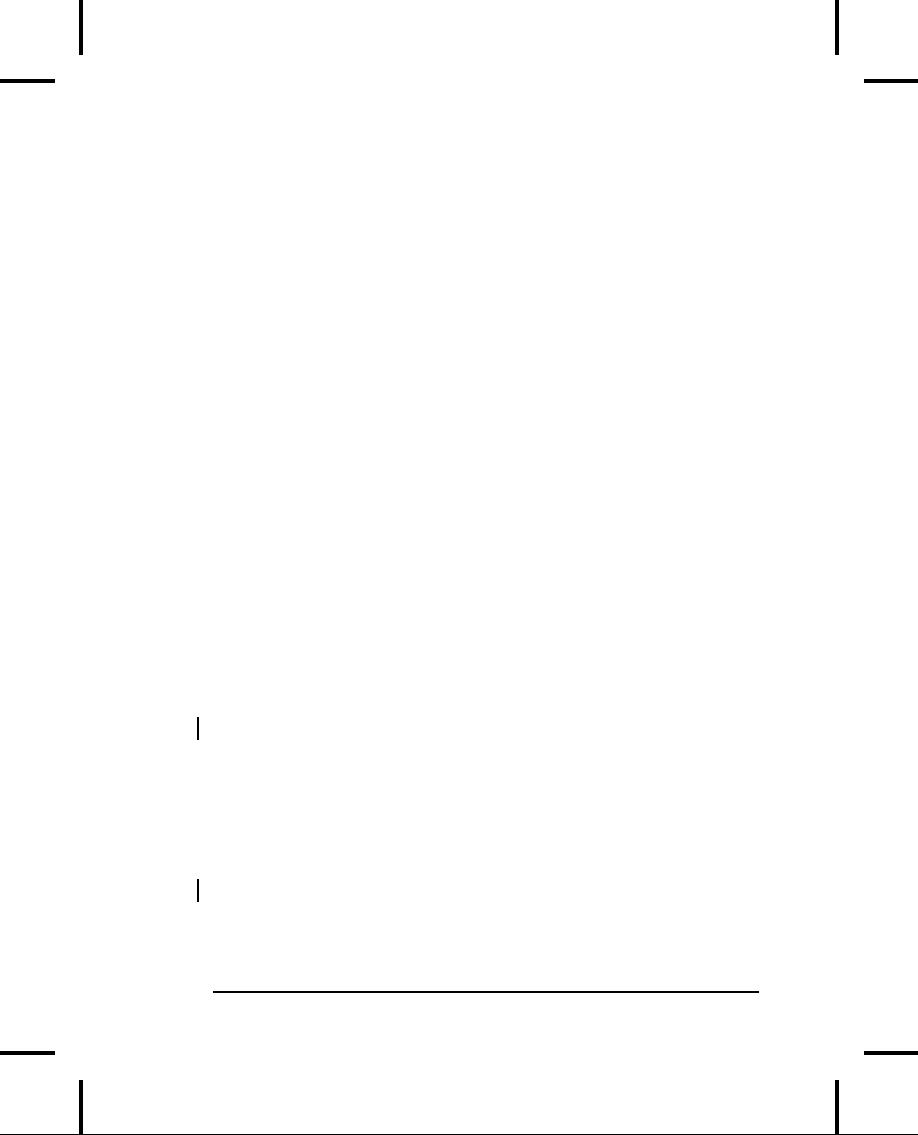
Everything
seemed fine until you ran the
program. You got
mysterious
results (or worse, the
program crashed) with no hints
as
to
why. The lack of help with
argument passing and the
enigmatic
bugs
that resulted is probably
one reason why C was dubbed
a
"high-level
assembly language." Pre-Standard C
programmers just
adapted
to it.
Standard
C and C++ use a feature called
function
prototyping. With
function
prototyping, you must use a description
of the types of
arguments
when declaring and defining a function.
This
description
is the "prototype." When the
function is called,
the
compiler
uses the prototype to ensure
that the proper
arguments
are
passed in and that the return
value is treated correctly. If
the
programmer
makes a mistake when calling
the function, the
compiler
catches the mistake.
Essentially,
you learned about function
prototyping (without
naming
it as such) in the previous
chapter, since the form
of
function
declaration in C++ requires proper
prototyping. In a
function
prototype, the argument list
contains the types of
arguments
that must be passed to the
function and (optionally for
the
declaration) identifiers for the
arguments. The order and type
of
the
arguments must match in the
declaration, definition, and
function
call. Here's an example of a
function prototype in a
declaration:
int
translate(float x, float y, float
z);
You
do not use the same form when
declaring variables in
function
prototypes
as you do in ordinary variable
definitions. That is, you
cannot
say: float
x, y, z You must
indicate the type of each
.
argument.
In a function declaration, the following
form is also
acceptable:
int
translate(float, float,
float);
3:
The C in C++
123

Since
the compiler doesn't do anything but
check for types when
the
function is called, the
identifiers are only included for
clarity
when
someone is reading the
code.
In
the function definition,
names are required because
the
arguments
are referenced inside the
function:
int
translate(float x, float y, float z)
{
x
= y = z;
//
...
}
It
turns out this rule applies only to C. In
C++, an argument may be
unnamed
in the argument list of the
function definition. Since it
is
unnamed,
you cannot use it in the
function body, of
course.
Unnamed
arguments are allowed to
give the programmer a way
to
"reserve
space in the argument list."
Whoever uses the
function
must
still call the function with
the proper arguments.
However,
the
person creating the function
can then use the argument in
the
future
without forcing modification of code
that calls the
function.
This
option of ignoring an argument in
the list is also possible
if
you
leave the name in, but you will
get an annoying warning
message
about the value being
unused every time you
compile the
function.
The warning is eliminated if you remove
the name.
C
and C++ have two other ways to declare an
argument list. If you
have
an empty argument list, you can
declare it as func(
) in
C++,
which
tells the compiler there
are exactly zero arguments.
You
should
be aware that this only
means an empty argument list
in
C++.
In C it means "an indeterminate number of
arguments (which
is
a "hole" in C since it disables type
checking in that case). In
both
C
and C++, the declaration
func(void);means
an empty argument
list.
The void
keyword
means "nothing" in this case
(it can also
mean
"no type" in the case of pointers, as
you'll see later in
this
chapter).
The
other option for argument
lists occurs when you don't know
how
many arguments or what type of arguments you will
have;
124
Thinking
in C++
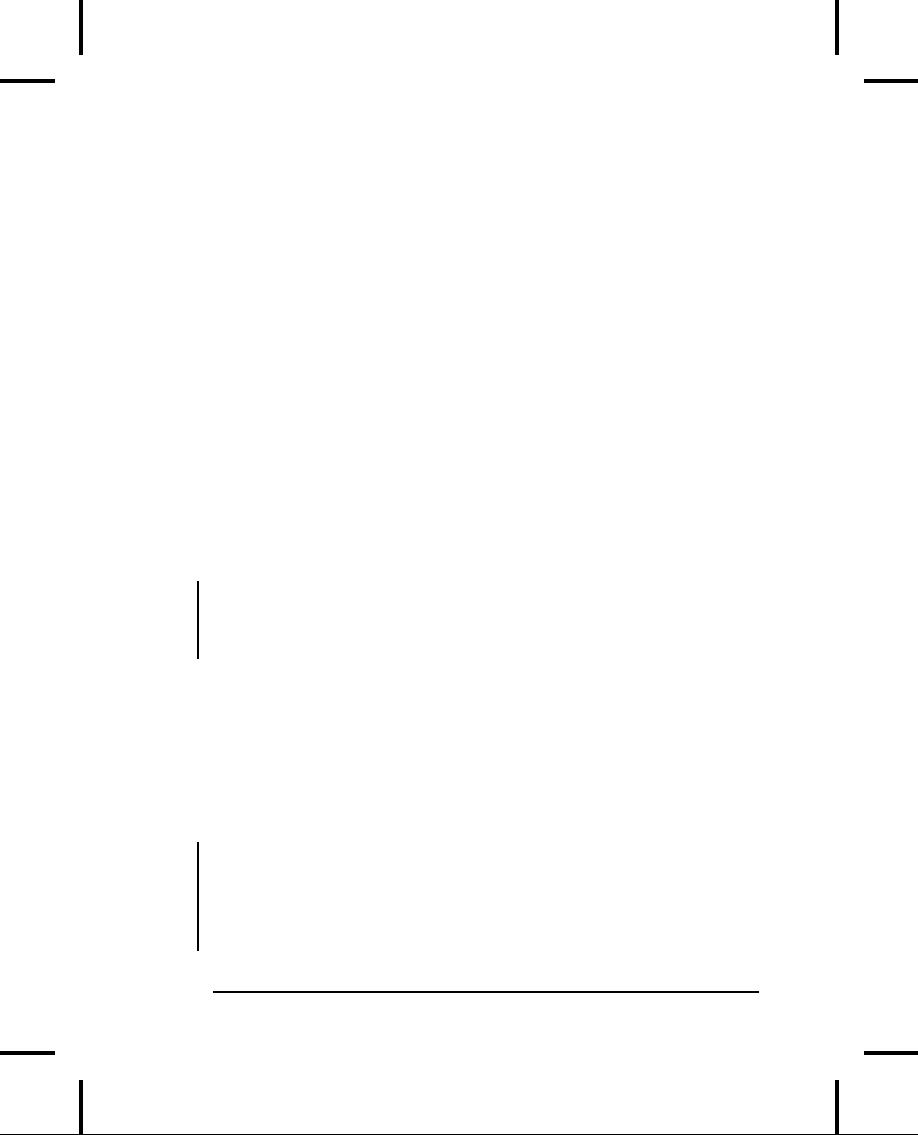
this
is called a variable
argument list. This
"uncertain argument list"
is
represented by ellipses (...).
Defining a function with a
variable
argument
list is significantly more
complicated than defining a
regular
function. You can use a
variable argument list for a
function
that
has a fixed set of arguments
if (for some reason) you want
to
disable
the error checks of function
prototyping. Because of
this,
you
should restrict your use of
variable argument lists to C
and
avoid
them in C++ (in which, as you'll learn, there
are much better
alternatives).
Handling variable argument lists is
described in the
library
section of your local C
guide.
Function
return values
A
C++ function prototype must specify
the return value type of
the
function
(in C, if you leave off the return value
type it defaults to
int).
The return type specification precedes
the function name. To
specify
that no value is returned,
use the void
keyword.
This will
generate
an error if you try to return a value from
the function.
Here
are some complete function
prototypes:
int
f1(void); // Returns an int,
takes no arguments
int
f2(); // Like f1() in C++
but not in Standard
C!
float
f3(float, int, char,
double); // Returns a
float
void
f4(void); // Takes no arguments,
returns nothing
To
return a value from a function, you use
the return
statement.
return
exits
the function back to the
point right after the
function
call.
If return
has
an argument, that argument
becomes the return
value
of the function. If a function
says that it will return a
particular
type, then each return
statement
must return that type.
You
can have more than one
return
statement
in a function
definition:
//:
C03:Return.cpp
//
Use of "return"
#include
<iostream>
using
namespace std;
char
cfunc(int i) {
3:
The C in C++
125

if(i
== 0)
return
'a';
if(i
== 1)
return
'g';
if(i
== 5)
return
'z';
return
'c';
}
int
main() {
cout
<< "type an integer: ";
int
val;
cin
>> val;
cout
<< cfunc(val) << endl;
}
///:~
In
cfunc(
) the
first if
that
evaluates to true
exits
the function via
,
the
return
statement.
Notice that a function
declaration is not
necessary
because the function
definition appears before it is
used
in
main(
),
so the compiler knows about it from
that function
definition.
Using
the C function library
All
the functions in your local C
function library are
available while
you
are programming in C++. You
should look hard at the
function
library
before defining your own function
there's a good chance
that
someone has already solved
your problem for you, and
probably
given it a lot more thought and
debugging.
A
word of caution, though: many compilers
include a lot of extra
functions
that make life even
easier and are tempting to
use, but are
not
part of the Standard C
library. If you are certain you will
never
want
to move the application to another
platform (and who is
certain
of that?), go ahead use
those functions and make your
life
easier.
If you want your application to be portable, you
should
restrict
yourself to Standard library
functions. If you must perform
platform-specific
activities, try to isolate that
code in one spot so
it
can
be changed easily when porting to
another platform. In
C++,
126
Thinking
in C++

platform-specific
activities are often
encapsulated in a class, which
is
the ideal solution.
The
formula for using a library function is
as follows: first, find
the
function
in your programming reference (many
programming
references
will index the function by
category as well as
alphabetically).
The description of the
function should include
a
section
that demonstrates the syntax
of the code. The top of
this
section
usually has at least one
#includeline,
showing you the
header
file containing the function
prototype. Duplicate
this
#includeline
in your file so the function is
properly declared. Now
you
can call the function in
the same way it appears in
the syntax
section.
If you make a mistake, the
compiler will discover it by
comparing
your function call to the
function prototype in
the
header
and tell you about your error.
The linker searches
the
Standard
library by default, so that's all you
need to do: include
the
header
file and call the
function.
Creating
your own libraries with the librarian
You
can collect your own functions
together into a library. Most
programming
packages come with a librarian
that manages groups
of
object modules. Each
librarian has its own
commands, but the
general
idea is this: if you want to create a
library, make a
header
file
containing the function
prototypes for all the functions in
your
library.
Put this header file
somewhere in the preprocessor's
search
path,
either in the local
directory (so it can be found by
#include
"header"
or
in the include directory (so
it can be found by
)
#include
<header> Now take
all the object modules and
hand
).
them
to the librarian along with a
name for the finished
library
(most
librarians require a common
extension, such as .lib
or
.a).
Place
the finished library where
the other libraries reside
so the
linker
can find it. When you use your
library, you will have to
add
something
to the command line so the
linker knows to search
the
library
for the functions you call. You must find
all the details in
your
local manual, since they vary from
system to system.
3:
The C in C++
127
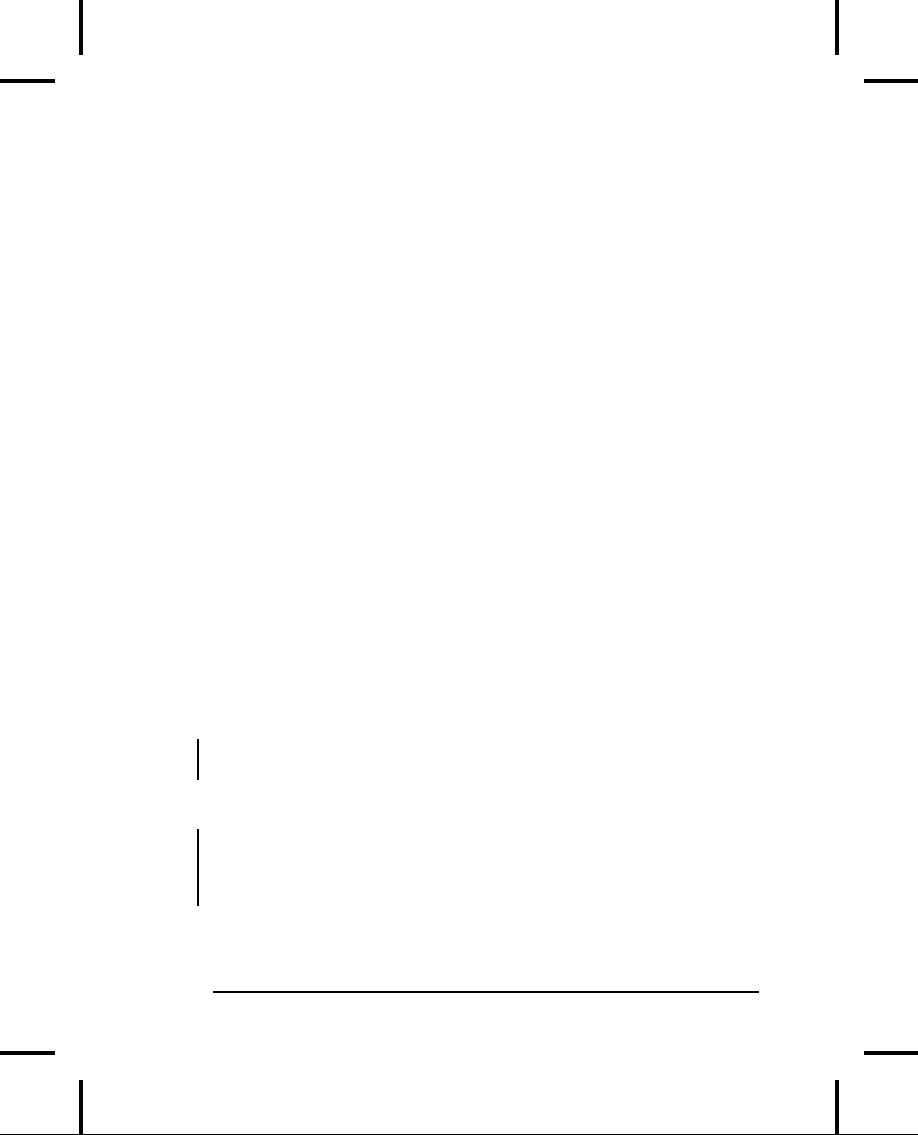
Controlling
execution
This
section covers the execution
control statements in C++.
You
must
be familiar with these statements
before you can read
and
write
C or C++ code.
C++
uses all of C's execution
control statements. These
include if-
else,
while,
do-while
for, and a
selection statement called
switch.
,
C++
also allows the infamous
goto,
which will be avoided in this
book.
True
and false
All
conditional statements use
the truth or falsehood of a
conditional
expression to determine the
execution path. An
example
of a conditional expression is A ==
B.
This uses the
conditional
operator ==
to
see if the variable
A
is
equivalent to the
variable
B.
The
expression produces a Boolean
true
or
false
(these
are
keywords only in C++; in C an expression
is "true" if it
evaluates
to a nonzero value). Other
conditional operators are
>,
<,
>=,
etc. Conditional statements
are covered more fully later
in this
chapter.
if-else
The
if-else
statement
can exist in two forms: with or without
the
else.
The two forms are:
if(expression)
statement
or
if(expression)
statement
else
statement
The
"expression" evaluates to true
or
false.
The "statement" means
either
a simple statement terminated by a
semicolon or a
128
Thinking
in C++
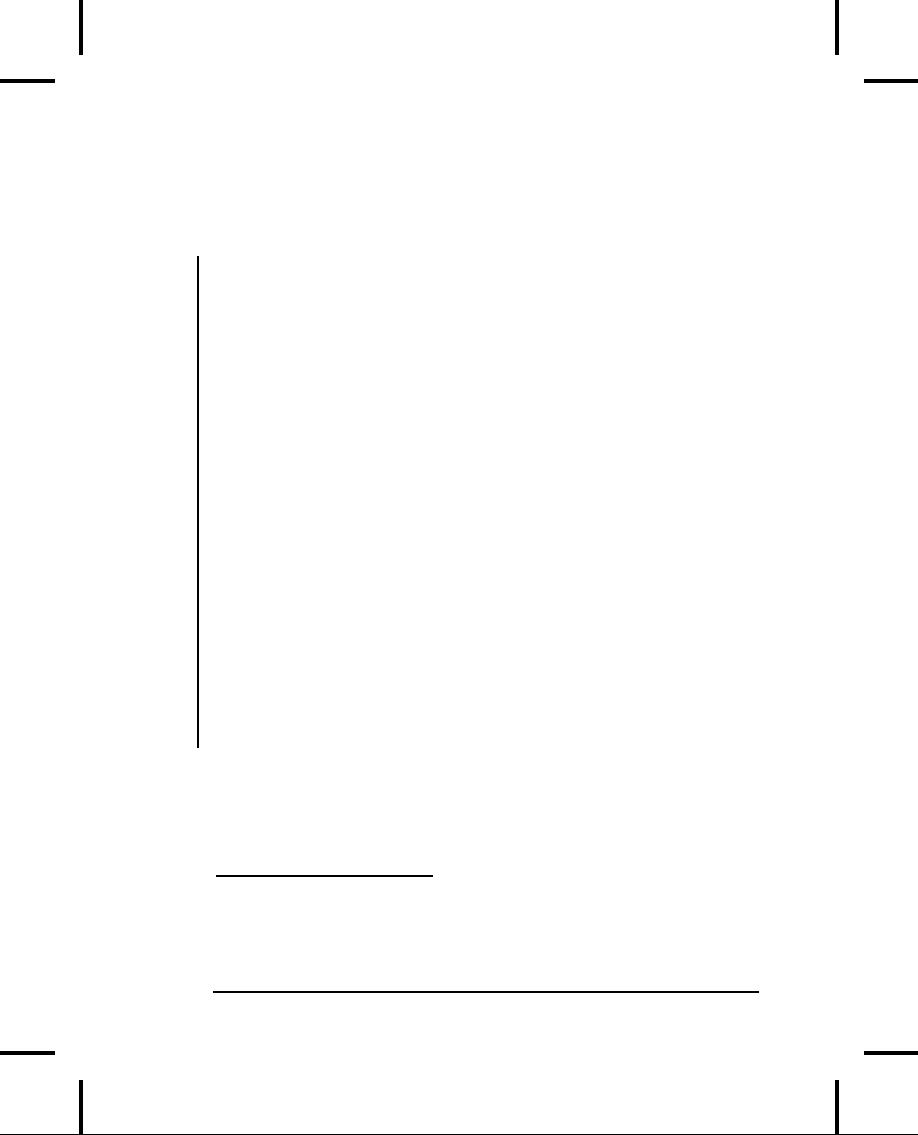
compound
statement, which is a group of simple
statements
enclosed
in braces. Any time the word
"statement" is used, it
always
implies that the statement
is simple or compound. Note
that
this
statement can also be
another if,
so they can be strung
together.
//:
C03:Ifthen.cpp
//
Demonstration of if and if-else
conditionals
#include
<iostream>
using
namespace std;
int
main() {
int
i;
cout
<< "type a number and
'Enter'" << endl;
cin
>> i;
if(i
> 5)
cout
<< "It's greater than 5" <<
endl;
else
if(i
< 5)
cout
<< "It's less than 5 " <<
endl;
else
cout
<< "It's equal to 5 " <<
endl;
cout
<< "type a number and
'Enter'" << endl;
cin
>> i;
if(i
< 10)
if(i
> 5) // "if" is just another
statement
cout
<< "5 < i < 10" <<
endl;
else
cout
<< "i <= 5" << endl;
else
// Matches "if(i <
10)"
cout
<< "i >= 10" <<
endl;
}
///:~
It
is conventional to indent the body of a
control flow statement so
1
Note that all
conventions seem to end
after the agreement that
some sort of
indentation
take place. The feud
between styles of code
formatting is unending.
See
Appendix
A for the description of
this book's coding
style.
3:
The C in C++
129
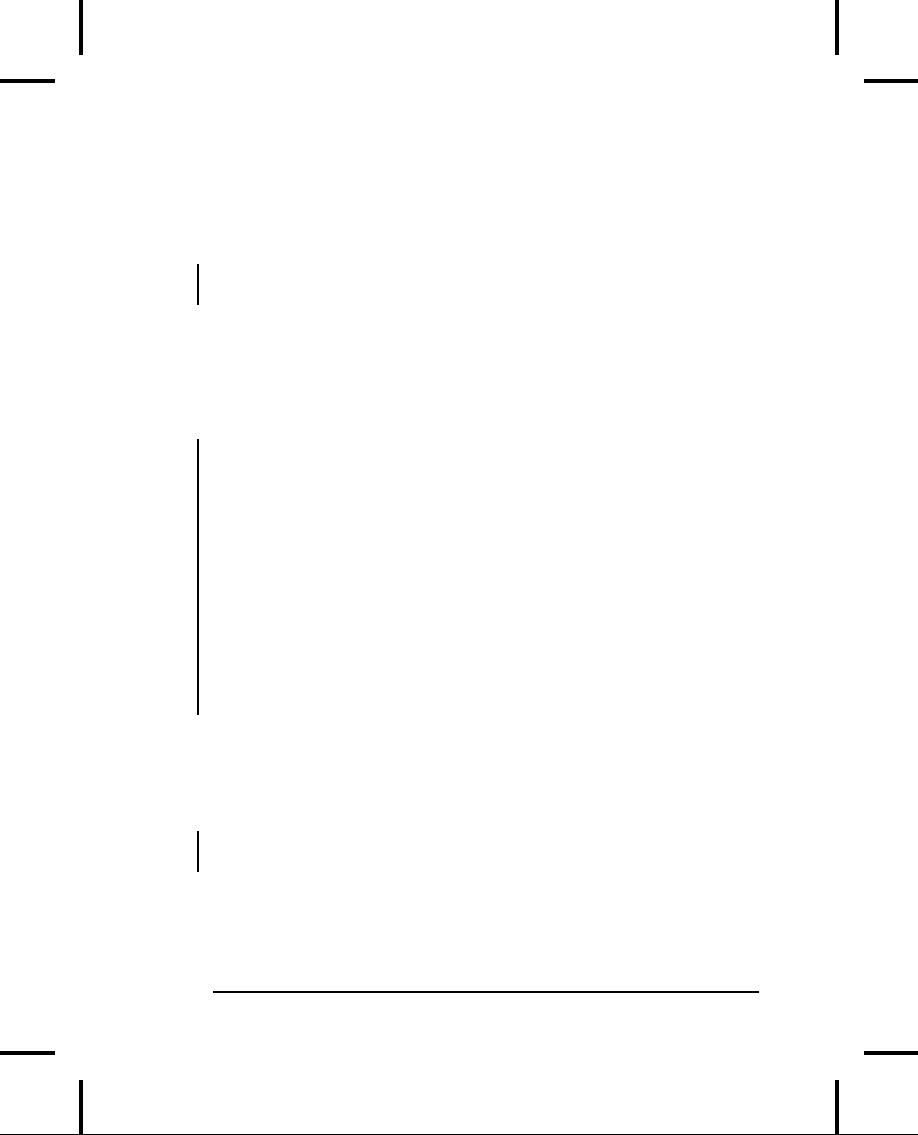
while
while,
do-while,and
for
control
looping. A statement repeats
until
the
controlling expression evaluates to
false.
The form of a while
loop
is
while(expression)
statement
The
expression is evaluated once at
the beginning of the loop
and
again
before each further iteration of
the statement.
This
example stays in the body of
the while
loop
until you type the
secret
number or press control-C.
//:
C03:Guess.cpp
//
Guess a number (demonstrates
"while")
#include
<iostream>
using
namespace std;
int
main() {
int
secret = 15;
int
guess = 0;
//
"!=" is the "not-equal"
conditional:
while(guess
!= secret) { // Compound
statement
cout
<< "guess the number:
";
cin
>> guess;
}
cout
<< "You guessed it!" <<
endl;
}
///:~
The
while's
conditional expression is not restricted
to a simple test
as
in the example above; it can
be as complicated as you like as
long
as
it produces a true
or
false
result.
You will even see code
where
the
loop has no body, just a
bare semicolon:
while(/*
Do a lot here */)
;
In
these cases, the programmer
has written the
conditional
expression
not only to perform the test but
also to do the work.
130
Thinking
in C++

do-while
The
form of do-whileis
do
statement
while(expression);
The
do-whileis
different from the while because
the statement
always
executes at least once, even
if the expression evaluates
to
false
the first time. In a regular
while,
if the conditional is false
the
first
time the statement never
executes.
If
a do-whileis
used in Guess.cpp
the
variable guess
does
not
,
need
an initial dummy value, since it is
initialized by the cin
statement
before it is tested:
//:
C03:Guess2.cpp
//
The guess program using
do-while
#include
<iostream>
using
namespace std;
int
main() {
int
secret = 15;
int
guess; // No initialization needed
here
do
{
cout
<< "guess the number:
";
cin
>> guess; // Initialization
happens
}
while(guess
!= secret);
cout
<< "You got it!" <<
endl;
}
///:~
For
some reason, most
programmers tend to avoid
do-whileand
just
work with while.
for
A
for
loop
performs initialization before
the first iteration. Then
it
performs
conditional testing and, at
the end of each iteration,
some
form
of "stepping." The form of the
for
loop
is:
for(initialization; conditional; step)
3:
The C in C++
131
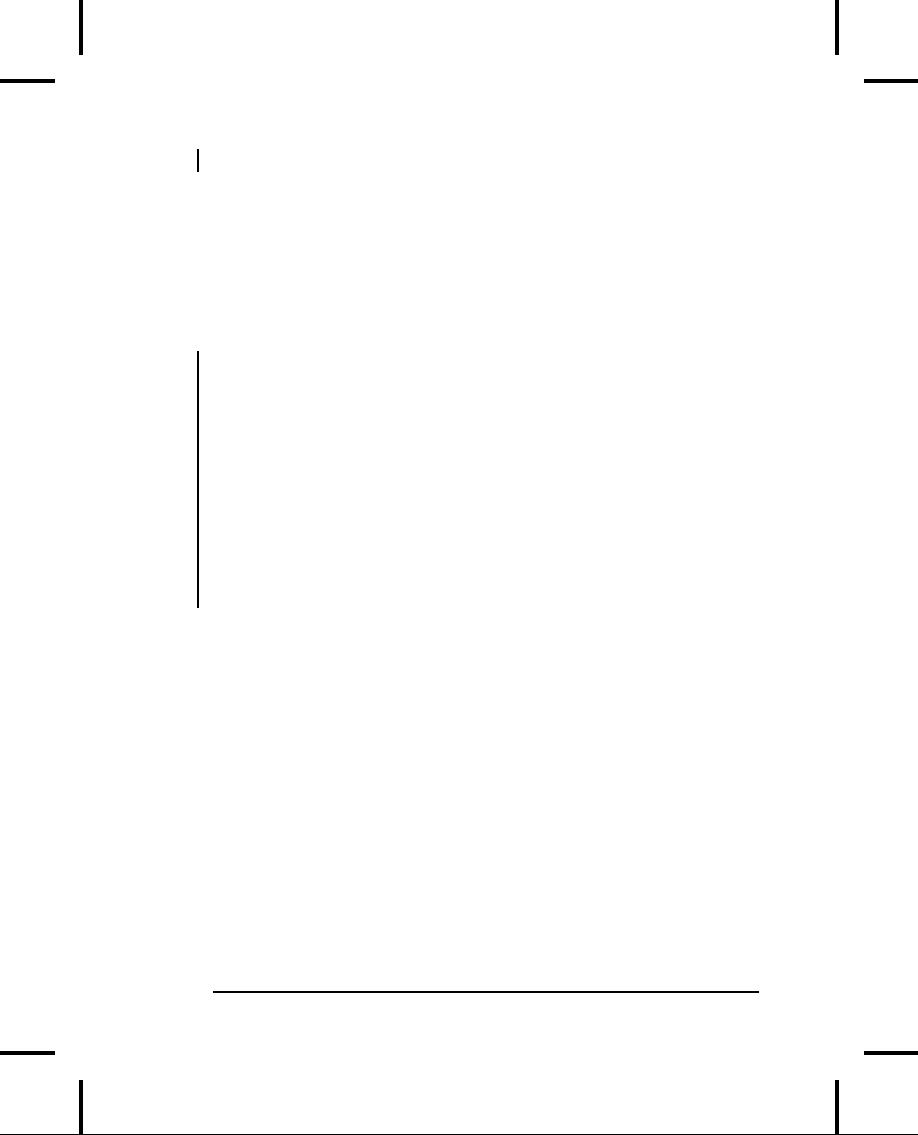
statement
Any
of the expressions initialization, conditional,
or step
may be
empty.
The initialization
code
executes once at the very
beginning.
The
conditional
is tested
before each iteration (if it
evaluates to false
at
the beginning, the statement
never executes). At the end
of each
loop,
the step
executes.
for
loops
are usually used for "counting"
tasks:
//:
C03:Charlist.cpp
//
Display all the ASCII
characters
//
Demonstrates "for"
#include
<iostream>
using
namespace std;
int
main() {
for(int
i = 0; i < 128; i = i + 1)
if
(i != 26) // ANSI Terminal
Clear screen
cout
<< " value: " << i
<<
" character: "
<<
char(i) // Type
conversion
<<
endl;
}
///:~
You
may notice that the variable
i
is
defined at the point where
it is
used,
instead of at the beginning of
the block denoted by the
open
curly
brace `{'.
This is in contrast to traditional
procedural
languages
(including C), which require
that all variables be
defined
at
the beginning of the block.
This will be discussed later in
this
chapter.
The
break and continue keywords
Inside
the body of any of the looping
constructs while,
do-while,or
for,
you can control the flow of
the loop using break
and
continue
.
break
quits
the loop without executing
the rest of the statements
in
the
loop. continuestops
the execution of the current
iteration and
goes
back to the beginning of the
loop to begin a new
iteration.
132
Thinking
in C++
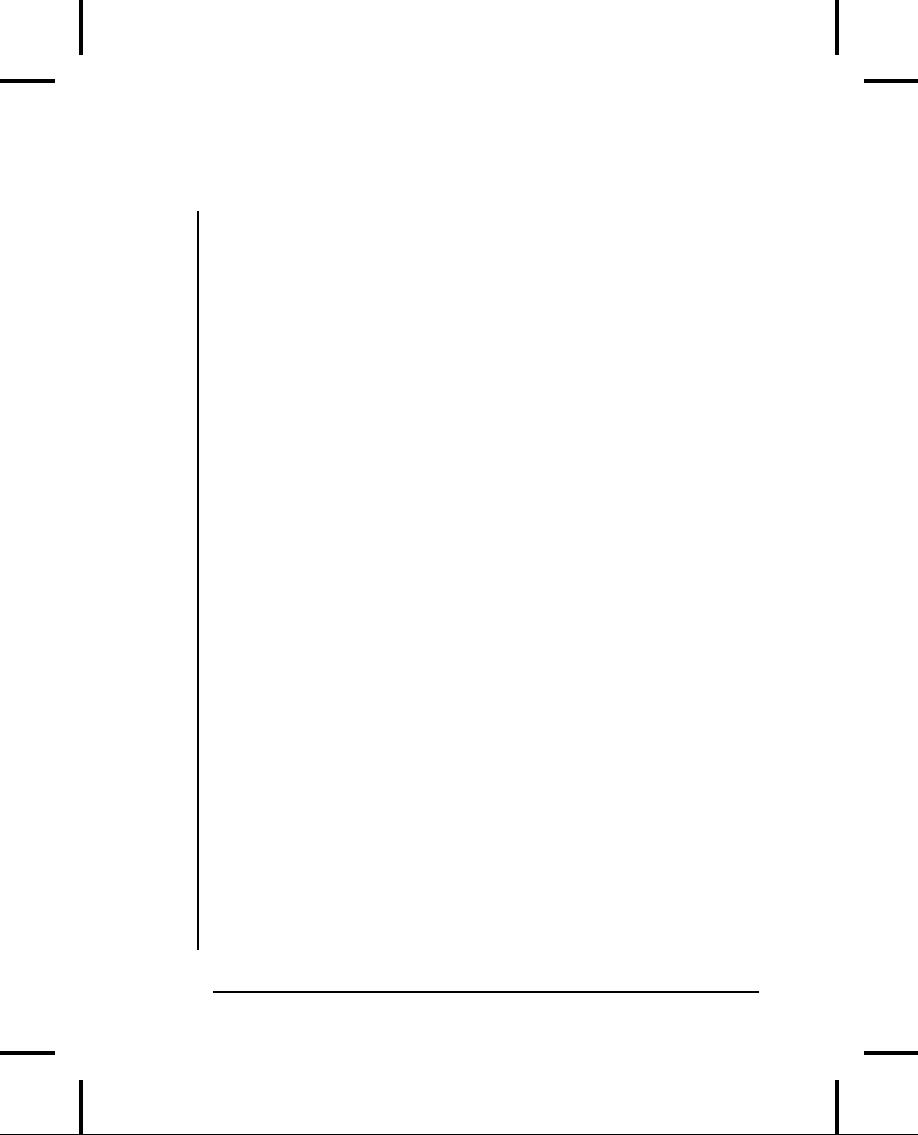
As
an example of break
and
continue
this
program is a very
,
simple
menu system:
//:
C03:Menu.cpp
//
Simple menu program
demonstrating
//
the use of "break" and
"continue"
#include
<iostream>
using
namespace std;
int
main() {
char
c; // To hold response
while(true)
{
cout
<< "MAIN MENU:" <<
endl;
cout
<< "l: left, r: right, q:
quit -> ";
cin
>> c;
if(c
== 'q')
break;
// Out of "while(1)"
if(c
== 'l') {
cout
<< "LEFT MENU:" <<
endl;
cout
<< "select a or b: ";
cin
>> c;
if(c
== 'a') {
cout
<< "you chose 'a'" <<
endl;
continue;
// Back to main menu
}
if(c
== 'b') {
cout
<< "you chose 'b'" <<
endl;
continue;
// Back to main menu
}
else
{
cout
<< "you didn't choose a or
b!"
<<
endl;
continue;
// Back to main menu
}
}
if(c
== 'r') {
cout
<< "RIGHT MENU:" <<
endl;
cout
<< "select c or d: ";
cin
>> c;
if(c
== 'c') {
cout
<< "you chose 'c'" <<
endl;
continue;
// Back to main menu
}
if(c
== 'd') {
3:
The C in C++
133

cout
<< "you chose 'd'" <<
endl;
continue;
// Back to main menu
}
else
{
cout
<< "you didn't choose c or
d!"
<<
endl;
continue;
// Back to main menu
}
}
cout
<< "you must type l or r or
q!" << endl;
}
cout
<< "quitting menu..." <<
endl;
}
///:~
If
the user selects `q' in
the main menu, the break
keyword
is used
to
quit, otherwise the program
just continues to
execute
indefinitely.
After each of the sub-menu
selections, the continue
keyword
is used to pop back up to the
beginning of the while
loop.
The
while(true)statement
is the equivalent of saying "do
this loop
forever."
The break
statement
allows you to break out of
this
infinite
while loop when the user
types a `q.'
switch
A
switch
statement
selects from among pieces of
code based on the
value
of an integral expression. Its form
is:
switch(selector) {
case
integral-value1
:
break;
statement;
case
integral-value2
:
break;
statement;
case
integral-value3
:
break;
statement;
case
integral-value4
:
break;
statement;
case
integral-value5
:
break;
statement;
(...)
default:
statement;
}
Selector
is an
expression that produces an
integral value. The
switch
compares
the result of selector
to each
integral
value. If it
finds a
match,
the corresponding statement
(simple or compound)
executes.
If no match occurs, the
default
statement
executes.
134
Thinking
in C++
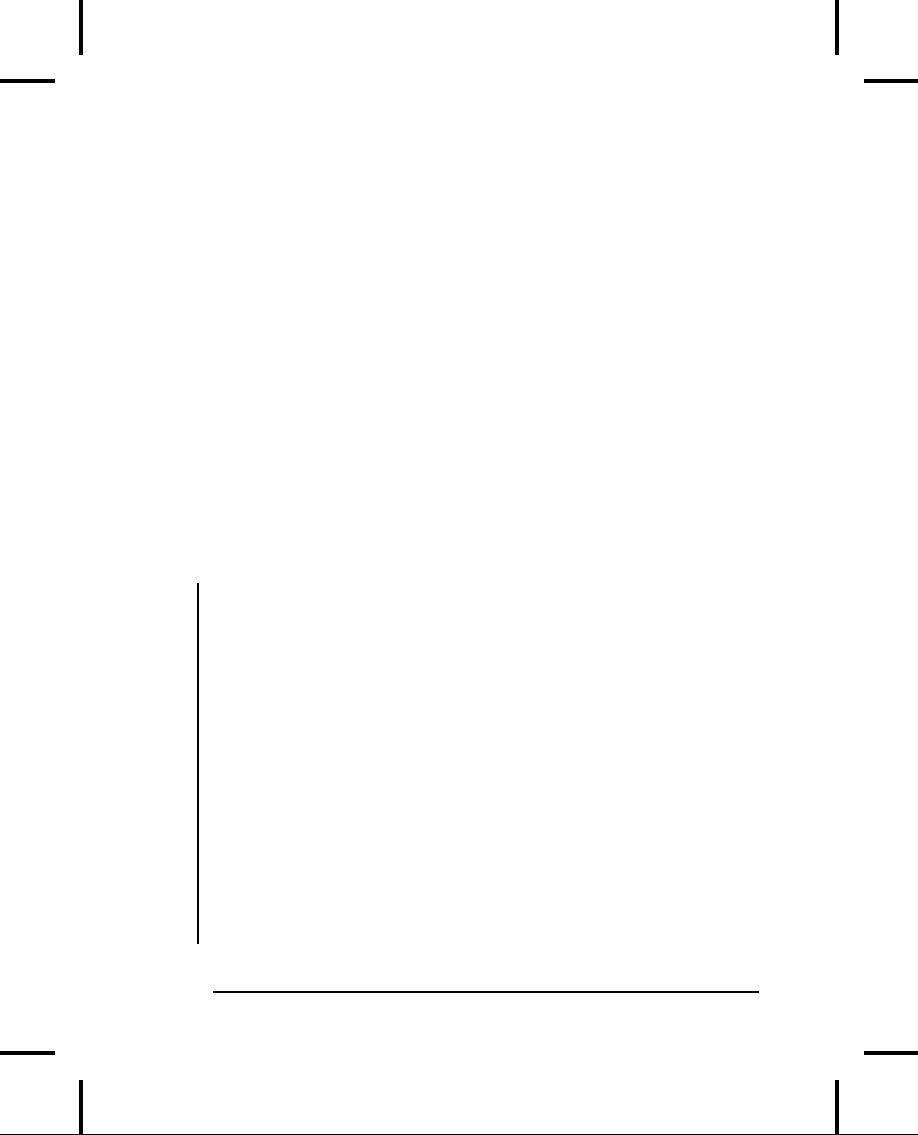
You
will notice in the definition
above that each case
ends
with a
break,
which causes execution to jump to the
end of the switch
body
(the closing brace that
completes the switch).
This is the
conventional
way to build a switch
statement,
but the break
is
optional.
If it is missing, your case
"drops
through" to the one
after
it.
That is, the code for the
following case
statements
execute until a
break
is
encountered. Although you don't usually want this kind
of
behavior,
it can be useful to an experienced
programmer.
The
switch
statement
is a clean way to implement
multi-way
selection
(i.e., selecting from among a number of
different
execution
paths), but it requires a selector
that evaluates to an
integral
value at compile-time. If you want to
use, for example, a
string
object
as a selector, it won't work in a switch
statement.
For
a
string
selector,
you must instead use a series of
if
statements
and
compare
the string
inside
the conditional.
The
menu example shown above provides a
particularly nice
example
of a switch:
//:
C03:Menu2.cpp
//
A menu using a switch
statement
#include
<iostream>
using
namespace std;
int
main() {
bool
quit = false; // Flag
for quitting
while(quit
== false) {
cout
<< "Select a, b, c or q to quit:
";
char
response;
cin
>> response;
switch(response)
{
case
'a' : cout << "you
chose 'a'" <<
endl;
break;
case
'b' : cout << "you
chose 'b'" <<
endl;
break;
case
'c' : cout << "you
chose 'c'" <<
endl;
break;
case
'q' : cout << "quitting
menu" << endl;
quit
= true;
3:
The C in C++
135

break;
default
:
cout << "Please use
a,b,c or q!"
<<
endl;
}
}
}
///:~
The
quit
flag
is a bool,
short for "Boolean," which is a type
you'll
find
only in C++. It can have only
the keyword values true
or
false.
Selecting
`q' sets the quit
flag
to true.
The next time the
selector is
evaluated,
quit
== falsereturns
false
so
the body of the while
does
not
execute.
Using
and misusing goto
The
goto
keyword
is supported in C++, since it
exists in C. Using
goto
is
often dismissed as poor
programming style, and most of
the
time
it is. Anytime you use goto,
look at your code and see
if
there's
another way to do it. On rare
occasions, you may discover
goto
can
solve a problem that can't
be solved otherwise, but
still,
consider
it carefully. Here's an example
that might make a
plausible
candidate:
//:
C03:gotoKeyword.cpp
//
The infamous goto is
supported in C++
#include
<iostream>
using
namespace std;
int
main() {
long
val = 0;
for(int
i = 1; i < 1000; i++) {
for(int
j = 1; j < 100; j += 10) {
val
= i * j;
if(val
> 47000)
goto
bottom;
//
Break would only go to the
outer 'for'
}
}
bottom:
// A label
cout
<< val << endl;
}
///:~
136
Thinking
in C++

The
alternative would be to set a Boolean
that is tested in the
outer
for
loop,
and then do a break
from
the inner for loop. However,
if
you
have several levels of
for
or
while
this
could get awkward.
Recursion
Recursion
is an interesting and sometimes useful
programming
technique
whereby you call the
function that you're in. Of
course, if
this
is all you do, you'll keep calling
the function you're in until
you
run out of memory, so there must be some way to
"bottom
out"
the recursive call. In the
following example, this
"bottoming
out"
is accomplished by simply saying that
the recursion will go
only
until the cat
exceeds
`Z':2
//:
C03:CatsInHats.cpp
//
Simple demonstration of
recursion
#include
<iostream>
using
namespace std;
void
removeHat(char cat) {
for(char
c = 'A'; c < cat;
c++)
cout
<< " ";
if(cat
<= 'Z') {
cout
<< "cat " << cat <<
endl;
removeHat(cat
+ 1); // Recursive
call
}
else
cout
<< "VOOM!!!" << endl;
}
int
main() {
removeHat('A');
}
///:~
In
removeHat(
) you
can see that as long as
cat
is
less than `Z',
,
removeHat(
)will
be called from within
removeHat(
) thus
,
effecting
the recursion. Each time
removeHat(
)is
called, its
2
Thanks to Kris C. Matson
for suggesting this exercise
topic.
3:
The C in C++
137
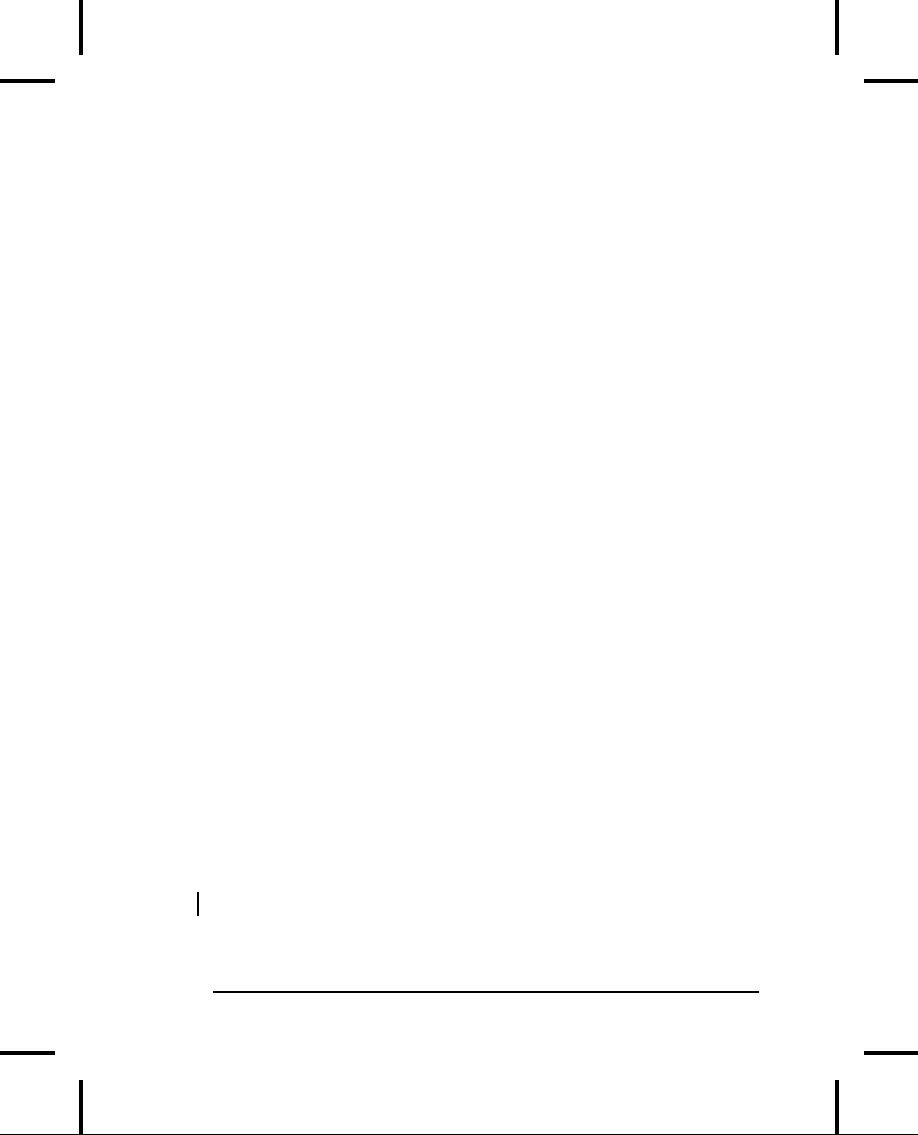
argument
is one greater than the
current cat
so
the argument keeps
increasing.
Recursion
is often used when evaluating
some sort of
arbitrarily
complex
problem, since you aren't
restricted to a particular
"size"
for
the solution the
function can just keep
recursing until it's
reached
the end of the
problem.
Introduction
to operators
You
can think of operators as a special type
of function (you'll learn
that
C++ operator overloading treats
operators precisely that
way).
An
operator takes one or more
arguments and produces a new
value.
The arguments are in a
different form than ordinary
function
calls,
but the effect is the
same.
From
your previous programming experience, you
should be
reasonably
comfortable with the operators
that have been used
so
far.
The concepts of addition
(+),
subtraction and unary minus (-),
multiplication
(*),
division (/),
and assignment(=)
all have
essentially
the same meaning in any
programming language.
The
full
set of operators is enumerated
later in this
chapter.
Precedence
Operator
precedence defines the order
in which an expression
evaluates
when several different operators
are present. C and C++
have
specific rules to determine
the order of evaluation. The
easiest
to
remember is that multiplication and
division happen
before
addition
and subtraction. After that, if an
expression isn't
transparent
to you it probably won't be for anyone
reading the
code,
so you should use parentheses to
make the order of
evaluation
explicit. For
example:
A
= X + Y - 2/2 + Z;
138
Thinking
in C++
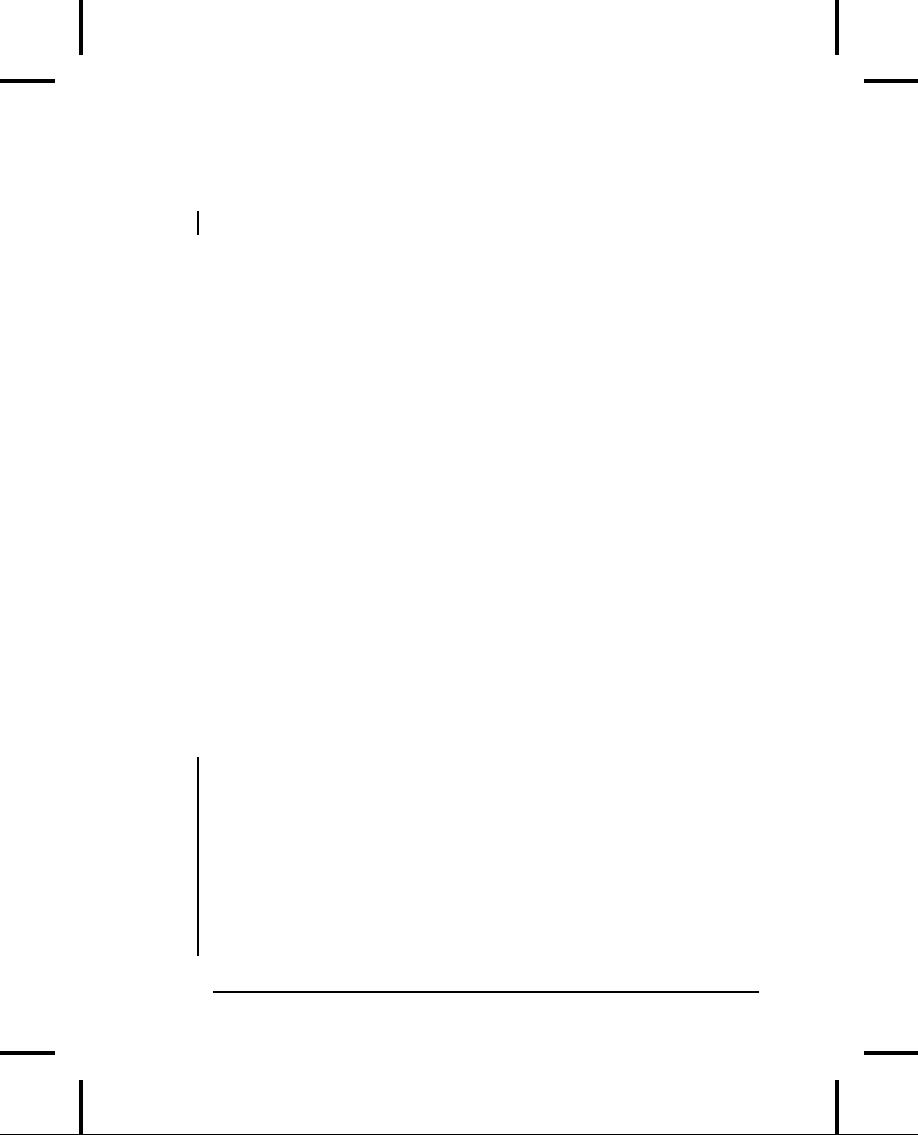
has
a very different meaning from the
same statement with a
particular
grouping of parentheses:
A
= X + (Y - 2)/(2 + Z);
(Try
evaluating the result with X = 1, Y = 2,
and Z = 3.)
Auto
increment and decrement
C,
and therefore C++, is full of shortcuts.
Shortcuts can make
code
much
easier to type, and sometimes much
harder to read.
Perhaps
the
C language designers thought it would be
easier to understand
a
tricky piece of code if your
eyes didn't have to scan as
large an
area
of print.
One
of the nicer shortcuts is
the auto-increment and
auto-
decrement
operators. You often use
these to change loop
variables,
which
control the number of times a
loop executes.
The
auto-decrement operator is `--'
and means "decrease by
one
unit."
The auto-increment operator is
`++'
and means "increase by
one
unit." If A
is
an int,
for example, the expression
++A
is
equivalent
to (A
= A + 1 Auto-increment
and auto-decrement
).
operators
produce the value of the
variable as a result. If
the
operator
appears before the variable,
(i.e., ++A),
the operation is
first
performed and the resulting
value is produced. If the
operator
appears
after the variable (i.e.
A++),
the current value is
produced,
and
then the operation is performed.
For example:
//:
C03:AutoIncrement.cpp
//
Shows use of
auto-increment
//
and auto-decrement
operators.
#include
<iostream>
using
namespace std;
int
main() {
int
i = 0;
int
j = 0;
cout
<< ++i << endl; //
Pre-increment
cout
<< j++ << endl; //
Post-increment
3:
The C in C++
139

cout
<< --i << endl; //
Pre-decrement
cout
<< j-- << endl; // Post
decrement
}
///:~
If
you've been wondering about
the name "C++," now you
understand.
It implies "one step beyond
C."
Introduction
to data types
Data
types define
the way you use storage
(memory) in the
programs
you write. By specifying a data
type, you tell the
compiler
how to create a particular piece of
storage, and also how
to
manipulate that
storage.
Data
types can be built-in or
abstract. A built-in data type is
one
that
the compiler intrinsically
understands, one that is
wired
directly
into the compiler. The types
of built-in data are
almost
identical
in C and C++. In contrast, a user-defined
data type is one
that
you or another programmer create as a
class. These are
commonly
referred to as abstract data
types. The compiler
knows
how
to handle built-in types when it
starts up; it "learns" how to
handle
abstract data types by
reading header files
containing class
declarations
(you'll learn about this in
later chapters).
Basic
built-in types
The
Standard C specification for built-in
types (which C++ inherits)
doesn't
say how many bits each of
the built-in types must
contain.
Instead,
it stipulates the minimum and maximum
values that the
built-in
type must be able to hold. When a
machine is based on
binary,
this maximum value can be
directly translated into a
minimum
number of bits necessary to hold that
value. However, if
a
machine uses, for example,
binary-coded decimal (BCD)
to
represent
numbers, then the amount of space in
the machine
required
to hold the maximum numbers for each
data type will be
different.
The minimum and maximum values that
can be stored in
the
various data types are
defined in the system header
files
140
Thinking
in C++
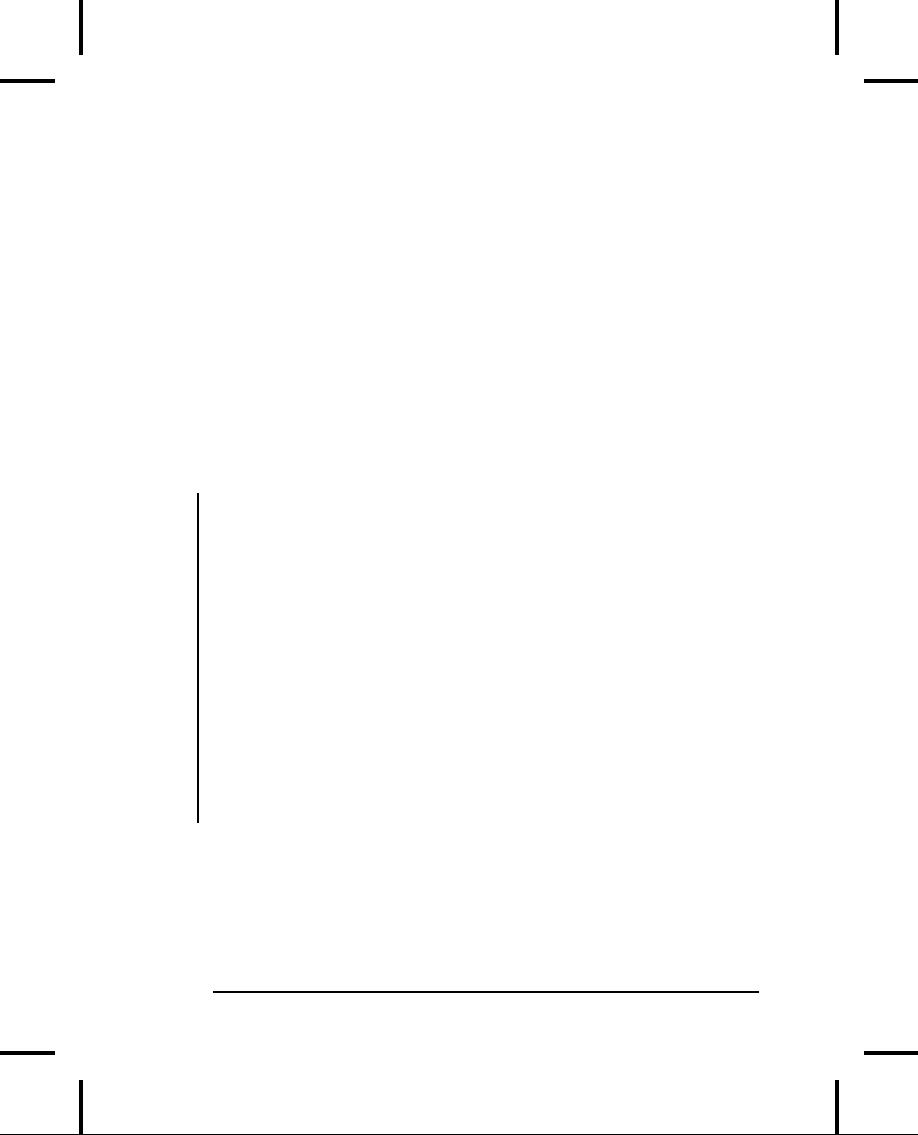
limits.hand
float.h
(in
C++ you will generally #include
<climits>
and
<cfloat>instead).
C
and C++ have four basic built-in
data types, described here
for
binary-based
machines. A char
is
for character storage and uses
a
minimum
of 8 bits (one byte) of
storage, although it may be
larger.
An
int
stores
an integral number and uses a minimum of two
bytes
of
storage. The float
and
double
types
store floating-point
numbers,
usually in IEEE floating-point format.
float
is
for single-
precision
floating point and double
is
for double-precision floating
point.
As
mentioned previously, you can
define variables anywhere in
a
scope,
and you can define and initialize them at
the same time.
Here's
how to define variables using
the four basic data
types:
//:
C03:Basic.cpp
//
Defining the four basic
data
//
types in C and C++
int
main() {
//
Definition without
initialization:
char
protein;
int
carbohydrates;
float
fiber;
double
fat;
//
Simultaneous definition &
initialization:
char
pizza = 'A', pop =
'Z';
int
dongdings = 100, twinkles =
150,
heehos
= 200;
float
chocolate = 3.14159;
//
Exponential notation:
double
fudge_ripple = 6e-4;
}
///:~
The
first part of the program
defines variables of the four
basic data
types
without initializing them. If you don't
initialize a variable,
the
Standard
says that its contents
are undefined (usually, this
means
they
contain garbage). The second
part of the program defines
and
initializes
variables at the same time
(it's always best, if
possible, to
3:
The C in C++
141
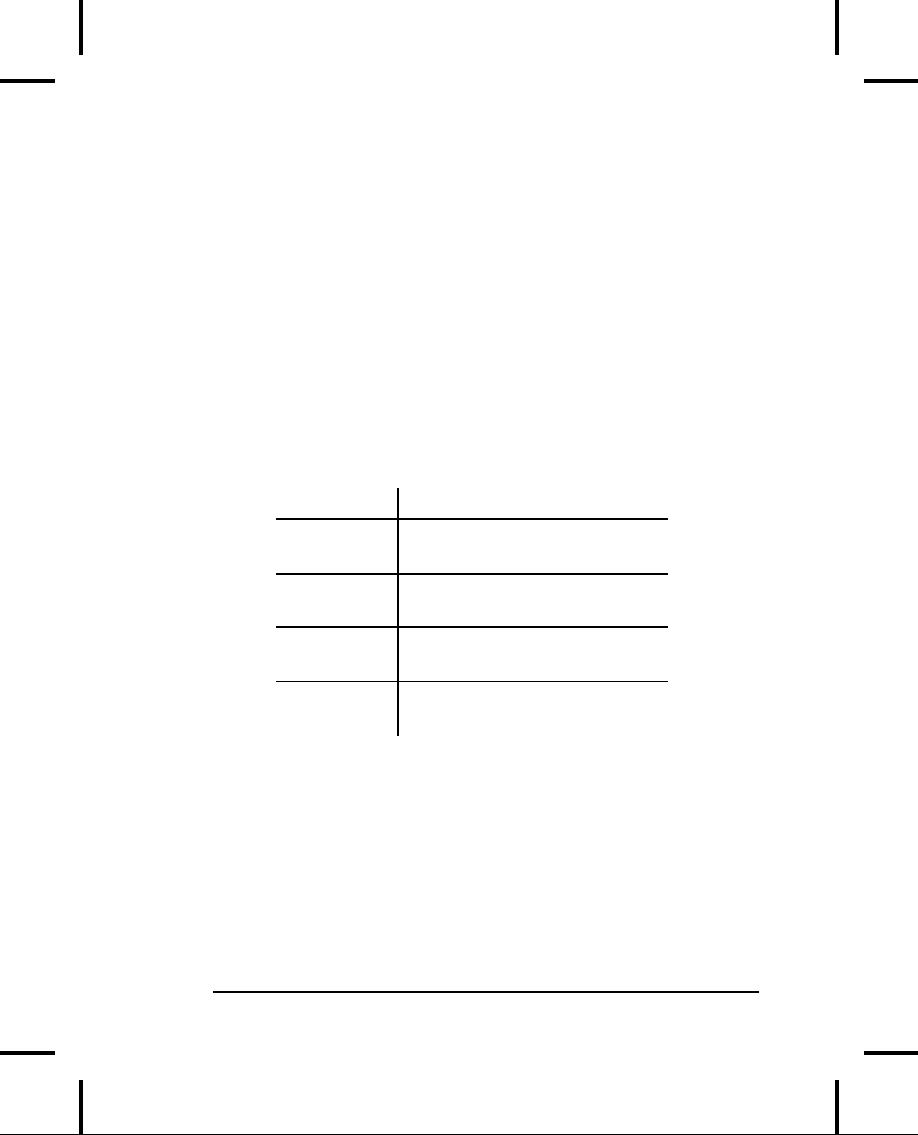
provide
an initialization value at the
point of definition). Notice
the
use
of exponential notation in the
constant 6e-4, meaning "6
times
10
to the minus fourth power."
bool,
true, & false
Before
bool
became
part of Standard C++,
everyone tended to
use
different
techniques in order to produce
Boolean-like behavior.
These
produced portability problems and
could introduce
subtle
errors.
The
Standard C++ bool
type
can have two states
expressed by the
built-in
constants true
(which
converts to an integral one) and
false
(which
converts to an integral zero). All
three names are
keywords.
In
addition, some language
elements have been
adapted:
Element
Usage
with bool
&&
|| !
Take
bool arguments and
produce
bool
results.
<
> <=
Produce
bool
results.
>=
== !=
if,
for,
Conditional
expressions
while,
do
convert
to bool
values.
?:
First
operand converts to bool
value.
Because
there's a lot of existing code
that uses an int
to
represent a
flag,
the compiler will implicitly
convert from an int
to
a bool
(nonzero
values will produce true
while
zero values produce
false).
Ideally,
the compiler will give you a warning as a
suggestion to
correct
the situation.
An
idiom that falls under "poor
programming style" is the
use of
++
to
set a flag to true. This is
still allowed, but deprecated, which
means
that at some time in the
future it will be made illegal.
The
142
Thinking
in C++

problem
is that you're making an
implicit type conversion from
bool
to
int,
incrementing the value
(perhaps beyond the range
of
the
normal bool
values
of zero and one), and then
implicitly
converting
it back again.
Pointers
(which will be introduced later in this
chapter) will also be
automatically
converted to bool
when
necessary.
Specifiers
Specifiers
modify the meanings of the
basic built-in types
and
expand
them to a much larger set. There
are four specifiers: long,
short,
signed,
and unsigned
.
long
and
short
modify
the maximum and minimum values that
a
data
type will hold. A plain int
must
be at least the size of a
short.
The
size hierarchy for integral
types is: short
int,
int,
long
int.
All
the
sizes could conceivably be
the same, as long as they satisfy
the
minimum/maximum
value requirements. On a machine with a
64-
bit
word, for instance, all the data
types might be 64 bits.
The
size hierarchy for floating
point numbers is: float,
double,
and
long
double. "long
float" is not a legal type.
There are no short
floating-point
numbers.
The
signed
and
unsignedspecifiers
tell the compiler how to
use
the
sign bit with integral types
and characters (floating-point
numbers
always contain a sign). An
unsignednumber
does not
keep
track of the sign and thus
has an extra bit available,
so it can
store
positive numbers twice as
large as the positive
numbers that
can
be stored in a signed
number.
signed
is
the default and is only
necessary
with char;
char
may
or may not default to signed.
By
specifying
signed
char, you
force the sign bit to be
used.
The
following example shows the
size of the data types in
bytes by
using
the sizeof
operator,
introduced later in this
chapter:
//:
C03:Specify.cpp
3:
The C in C++
143

//
Demonstrates the use of
specifiers
#include
<iostream>
using
namespace std;
int
main() {
char
c;
unsigned
char cu;
int
i;
unsigned
int iu;
short
int is;
short
iis; // Same as short
int
unsigned
short int isu;
unsigned
short iisu;
long
int il;
long
iil; // Same as long
int
unsigned
long int ilu;
unsigned
long iilu;
float
f;
double
d;
long
double ld;
cout
<<
"\n char= " <<
sizeof(c)
<<
"\n unsigned char = " <<
sizeof(cu)
<<
"\n int = " <<
sizeof(i)
<<
"\n unsigned int = " <<
sizeof(iu)
<<
"\n short = " <<
sizeof(is)
<<
"\n unsigned short = " <<
sizeof(isu)
<<
"\n long = " <<
sizeof(il)
<<
"\n unsigned long = " <<
sizeof(ilu)
<<
"\n float = " <<
sizeof(f)
<<
"\n double = " <<
sizeof(d)
<<
"\n long double = " <<
sizeof(ld)
<<
endl;
}
///:~
Be
aware that the results you
get by running this program
will
probably
be different from one
machine/operating
system/compiler
to the next, since (as
mentioned previously)
the
only
thing that must be consistent is that
each different type hold
the
minimum and maximum values specified in
the Standard.
When
you are modifying an int
with
short
or
long,
the keyword int
is
optional, as shown above.
144
Thinking
in C++

Introduction
to pointers
Whenever
you run a program, it is first loaded
(typically from disk)
into
the computer's memory. Thus, all
elements of your program
are
located somewhere in memory. Memory is
typically laid out as
a
sequential series of memory locations; we
usually refer to these
locations
as eight-bit bytes
but
actually the size of each
space
depends
on the architecture of the
particular machine and is
usually
called that machine's word
size. Each
space can be uniquely
distinguished
from all other spaces by its
address. For
the purposes
of
this discussion, we'll just
say that all machines use
bytes that
have
sequential addresses starting at
zero and going up to
however
much
memory you have in your computer.
Since
your program lives in memory while it's
being run, every
element
of your program has an address.
Suppose we start with a
simple
program:
//:
C03:YourPets1.cpp
#include
<iostream>
using
namespace std;
int
dog, cat, bird,
fish;
void
f(int pet) {
cout
<< "pet id number: " << pet
<< endl;
}
int
main() {
int
i, j, k;
}
///:~
Each
of the elements in this
program has a location in
storage when
the
program is running. Even the
function occupies storage.
As
you'll
see, it turns out that what an element is
and the way you
define
it usually determines the area of memory
where that
element
is placed.
There
is an operator in C and C++ that will
tell you the address
of
an
element. This is the
`&'
operator. All you do is precede
the
3:
The C in C++
145
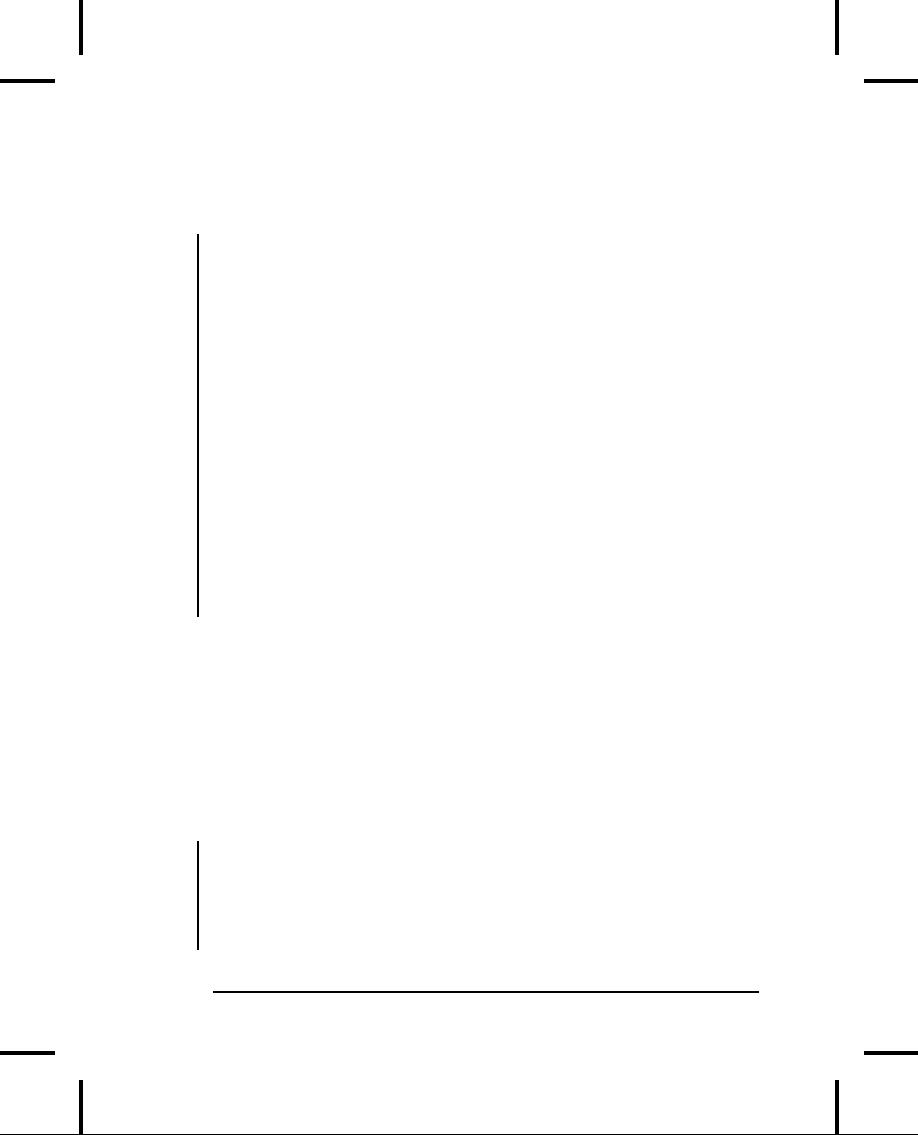
identifier
name with `&'
and it will produce the address of
that
identifier.
YourPets1.cppcan
be modified to print out the
addresses
of
all its elements, like
this:
//:
C03:YourPets2.cpp
#include
<iostream>
using
namespace std;
int
dog, cat, bird,
fish;
void
f(int pet) {
cout
<< "pet id number: " << pet
<< endl;
}
int
main() {
int
i, j, k;
cout
<< "f(): " << (long)&f <<
endl;
cout
<< "dog: " << (long)&dog <<
endl;
cout
<< "cat: " << (long)&cat <<
endl;
cout
<< "bird: " << (long)&bird <<
endl;
cout
<< "fish: " << (long)&fish <<
endl;
cout
<< "i: " << (long)&i <<
endl;
cout
<< "j: " << (long)&j <<
endl;
cout
<< "k: " << (long)&k <<
endl;
}
///:~
The
(long)
is
a cast. It says
"Don't treat this as if it's normal
type,
instead
treat it as a long."
The cast isn't essential,
but if it wasn't
there,
the addresses would have
been printed out in
hexadecimal
instead,
so casting to a long
makes
things a little more
readable.
The
results of this program will vary
depending on your computer,
OS,
and all sorts of other factors, but it
will always give you
some
interesting
insights. For a single run on my
computer, the results
looked
like this:
f():
4198736
dog:
4323632
cat:
4323636
bird:
4323640
fish:
4323644
i:
6684160
146
Thinking
in C++
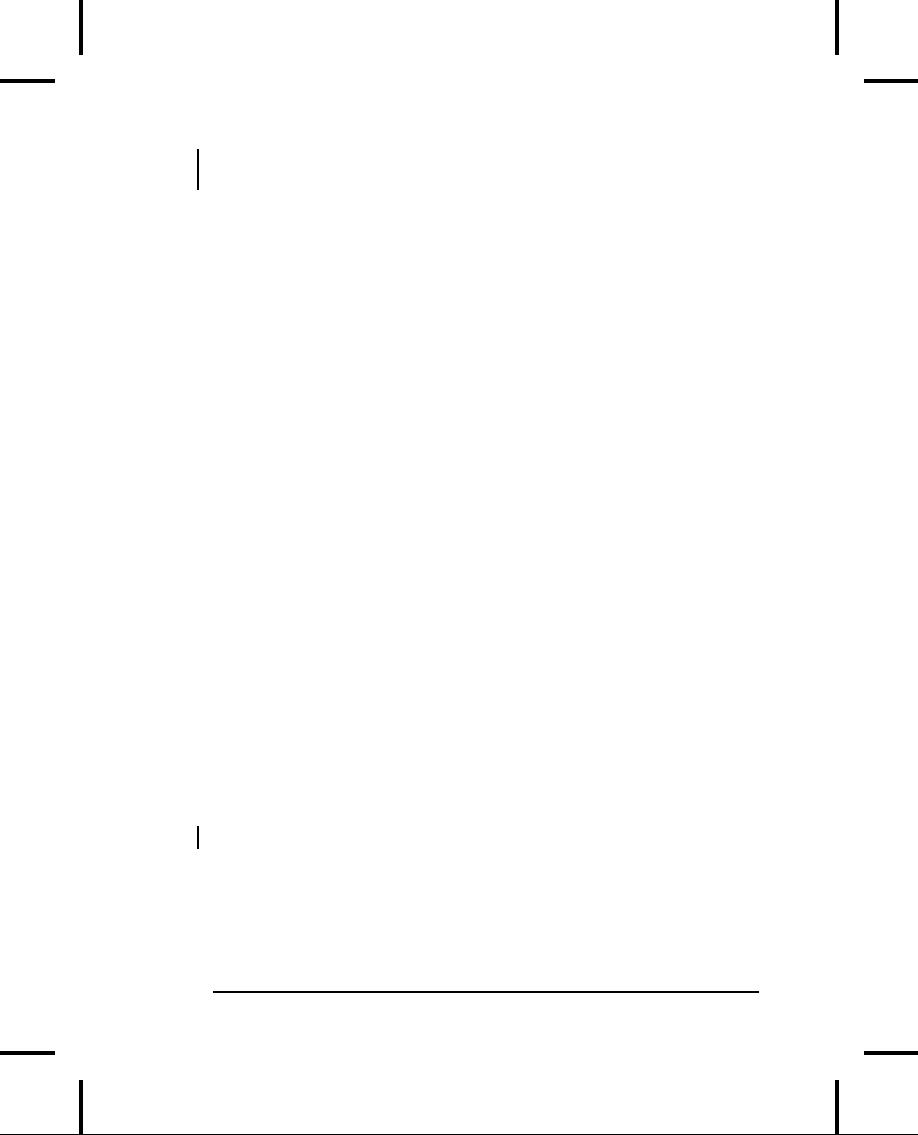
j:
6684156
k:
6684152
You
can see how the variables
that are defined inside
main(
) are
in
a
different area than the
variables defined outside of
main(
);
you'll
understand
why as you learn more about
the language. Also,
f(
)
appears
to be in its own area; code is
typically separated from
data
in
memory.
Another
interesting thing to note is that
variables defined one
right
after
the other appear to be
placed contiguously in memory.
They
are
separated by the number of bytes
that are required by their
data
type.
Here, the only data type
used is int,
and cat
is
four bytes
away
from dog,
bird
is
four bytes away from cat,
etc. So it would
appear
that, on this machine, an
int
is
four bytes long.
Other
than this interesting experiment
showing how memory is
mapped
out, what can you do with an address?
The most
important
thing you can do is store it inside
another variable for
later
use. C and C++ have a special type of
variable that holds
an
address.
This variable is called a
pointer.
The
operator that defines a
pointer is the same as the
one used for
multiplication:
`*'.
The compiler knows that it
isn't multiplication
because
of the context in which it is used, as
you will see.
When
you define a pointer, you must specify
the type of variable it
points
to. You start out by giving
the type name, then instead
of
immediately
giving an identifier for the
variable, you say "Wait,
it's
a
pointer" by inserting a star
between the type and the
identifier. So
a
pointer to an int
looks
like this:
int*
ip; // ip points to an int
variable
The
association of the `*'
with the type looks sensible and
reads
easily,
but it can actually be a bit
deceiving. Your inclination might
be
to say "intpointer" as if it is a single
discrete type. However,
with
an int
or
other basic data type,
it's possible to say:
3:
The C in C++
147
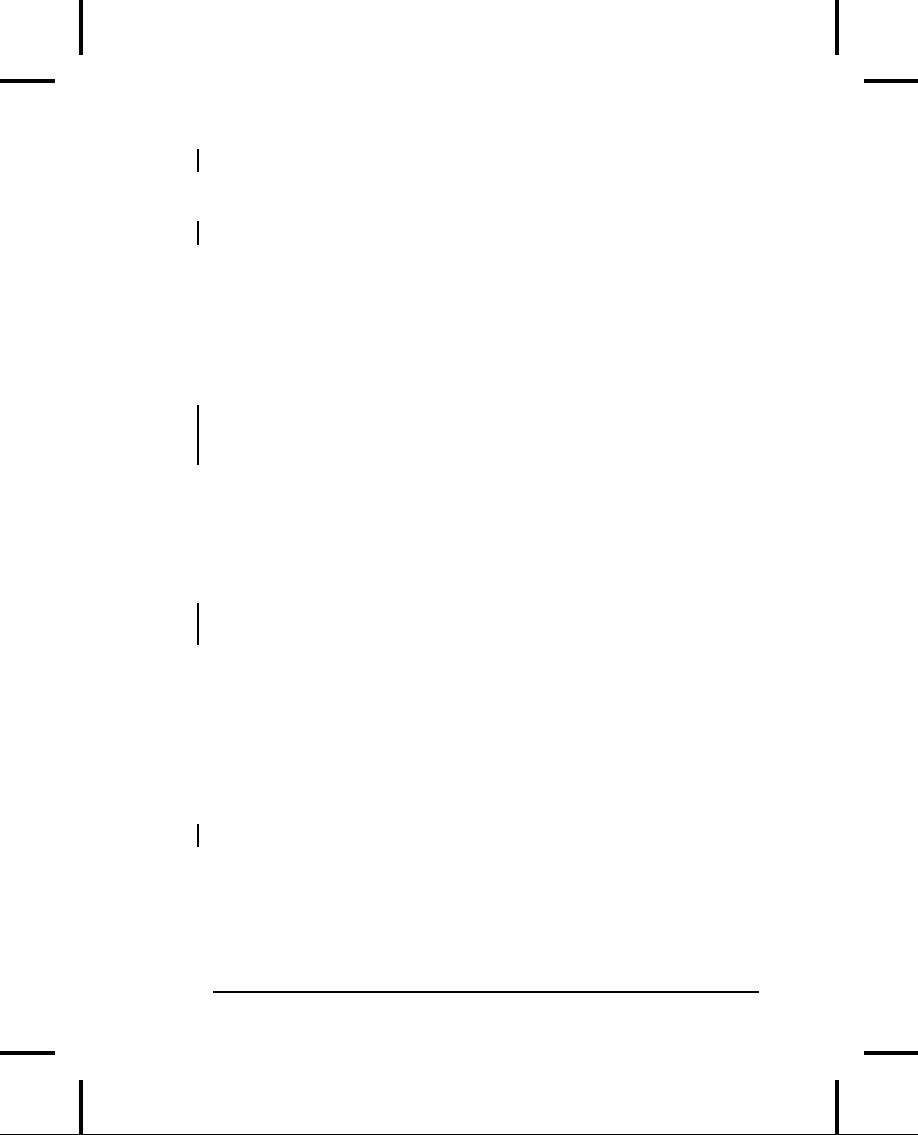
int
a, b, c;
whereas
with a pointer, you'd like
to
say:
int*
ipa, ipb, ipc;
C
syntax (and by inheritance, C++
syntax) does not allow
such
sensible
expressions. In the definitions
above, only ipa
is
a pointer,
but
ipb
and
ipc
are
ordinary ints
(you can say that "* binds
more
tightly
to the identifier"). Consequently,
the best results can
be
achieved
by using only one definition
per line; you still get
the
sensible
syntax without the
confusion:
int*
ipa;
int*
ipb;
int*
ipc;
Since
a general guideline for C++ programming
is that you should
always
initialize a variable at the
point of definition, this
form
actually
works better. For example,
the variables above are
not
initialized
to any particular value; they hold
garbage. It's much
better
to say something
like:
int
a = 47;
int*
ipa = &a;
Now
both a
and
ipa
have
been initialized, and ipa
holds
the
address
of a.
Once
you have an initialized pointer,
the most basic thing you
can
do
with it is to use it to modify the value
it points to. To access
a
variable
through a pointer, you dereference
the
pointer using the
same
operator that you used to
define it, like
this:
*ipa
= 100;
Now
a
contains
the value 100 instead of
47.
These
are the basics of pointers:
you can hold an address, and you
can
use that address to modify
the original variable. But
the
148
Thinking
in C++
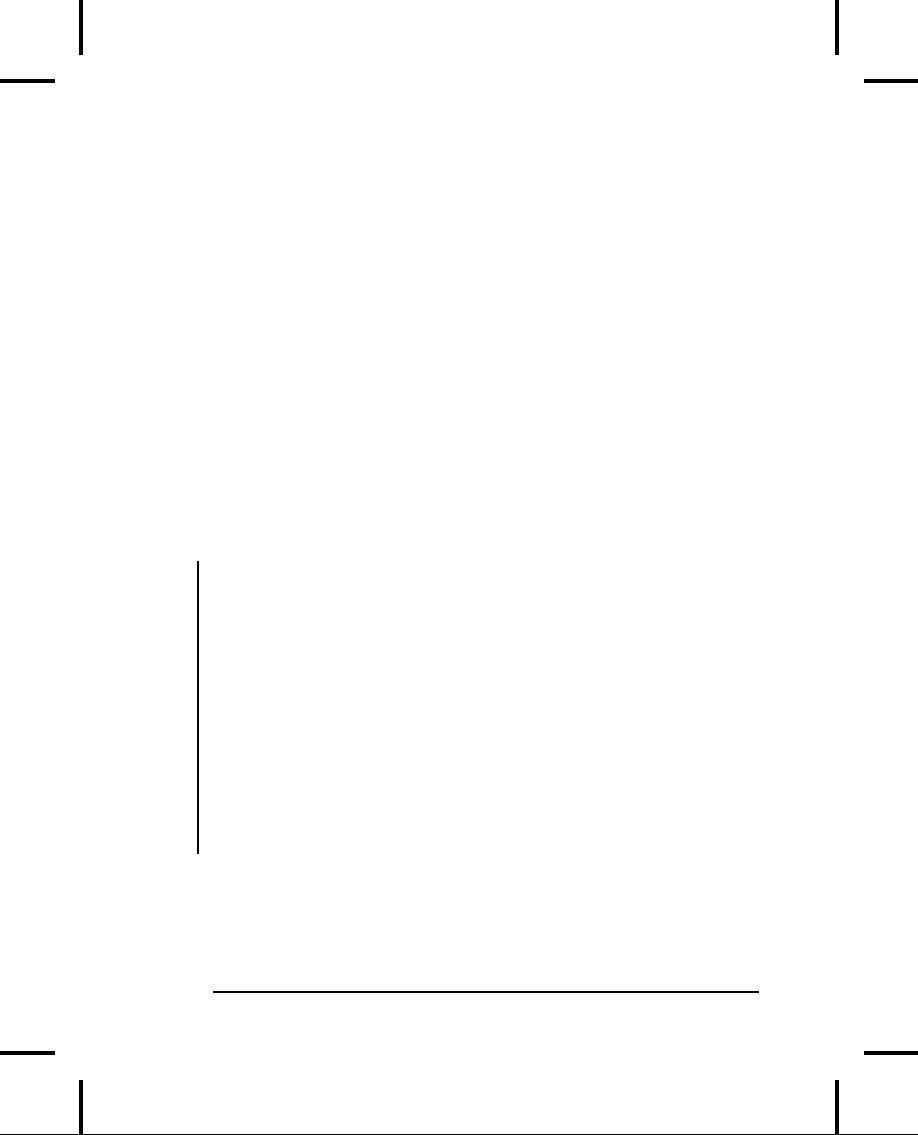
question
still remains: why do you want to modify
one variable
using
another variable as a
proxy?
For
this introductory view of pointers, we
can put the answer
into
two
broad categories:
1.
To
change "outside objects" from within a
function. This is
perhaps
the most basic use of
pointers, and it will be
examined
here.
2.
To
achieve many other clever
programming techniques,
which
you'll learn about in portions of
the rest of the
book.
Modifying
the outside object
Ordinarily,
when you pass an argument to a function,
a copy of
that
argument is made inside the
function. This is referred to
as
pass-by-value. You can
see the effect of
pass-by-value in the
following
program:
//:
C03:PassByValue.cpp
#include
<iostream>
using
namespace std;
void
f(int a) {
cout
<< "a = " << a << endl;
a
= 5;
cout
<< "a = " << a << endl;
}
int
main() {
int
x = 47;
cout
<< "x = " << x << endl;
f(x);
cout
<< "x = " << x << endl;
}
///:~
In
f(
),
a
is
a local
variable, so it
exists only for the duration of
the
function
call to f(
).
Because it's a function
argument, the value of
a
is
initialized by the arguments
that are passed when the
function is
3:
The C in C++
149
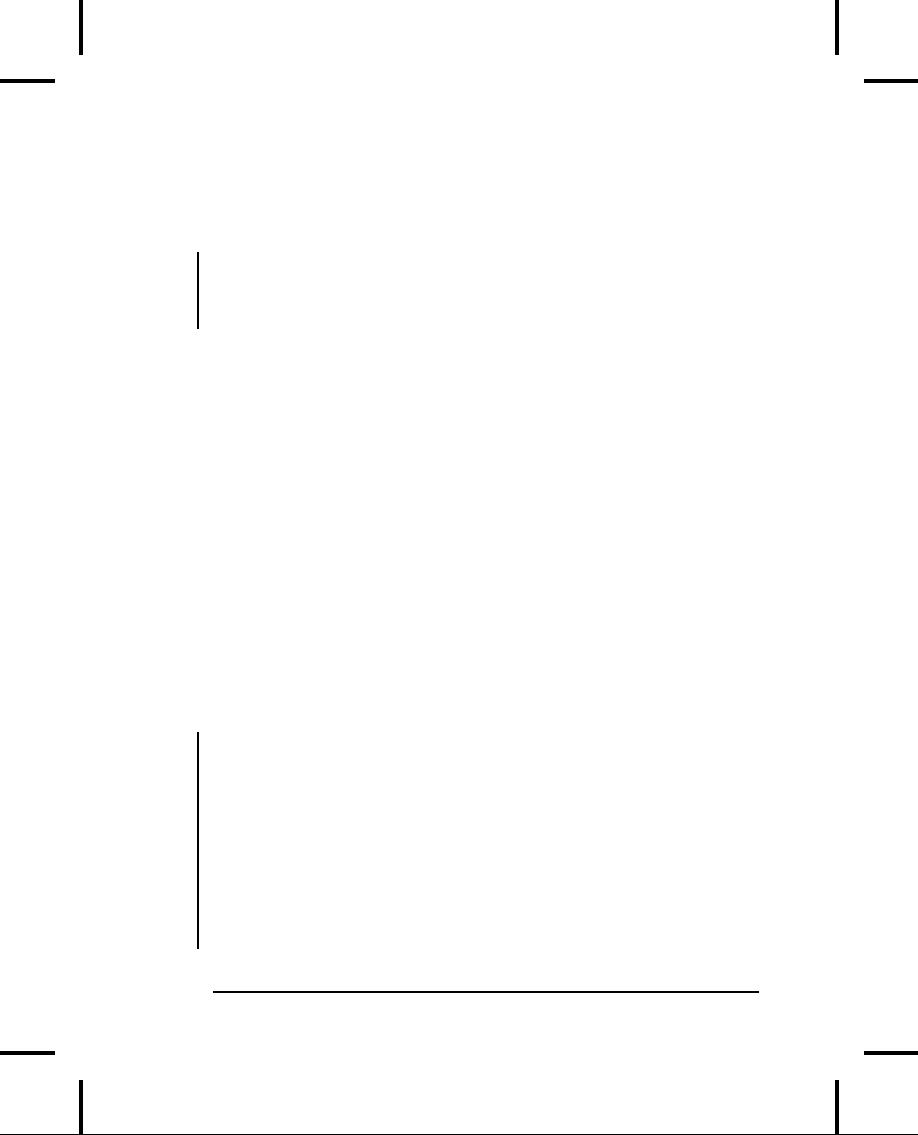
called;
in main(
) the
argument is x,
which
has a value of 47, so
this
value
is copied into a
when
f(
) is
called.
When
you run this program you'll
see:
x
=
47
a
=
47
a
=
5
x
=
47
Initially,
of course, x
is
47. When f(
) is
called, temporary space
is
created
to hold the variable a
for
the duration of the function
call,
and
a
is
initialized by copying the
value of x,
which is verified by
printing
it out. Of course, you can
change the value of
a
and
show
that
it is changed. But when f(
) is
completed, the temporary
space
that
was created for a
disappears,
and we see that the
only
connection
that ever existed between
a
and
x
happened
when the
value
of x
was
copied into a.
When
you're inside f(
),
x
is
the outside
object (my
terminology), and
changing
the local variable does not
affect the outside
object,
naturally
enough, since they are two
separate locations in
storage.
But
what if you do
want to modify
the outside object? This is
where
pointers
come in handy. In a sense, a pointer is
an alias for another
variable.
So if we pass a pointer
into a
function instead of an
ordinary
value, we are actually
passing an alias to the
outside
object,
enabling the function to modify
that outside object, like
this:
//:
C03:PassAddress.cpp
#include
<iostream>
using
namespace std;
void
f(int* p) {
cout
<< "p = " << p << endl;
cout
<< "*p = " << *p <<
endl;
*p
= 5;
cout
<< "p = " << p << endl;
}
int
main() {
150
Thinking
in C++

int
x =
47;
cout
<<
"x
= " << x << endl;
cout
<<
"&x
= " << &x << endl;
f(&x);
cout
<<
"x
= " << x << endl;
}
///:~
Now
f(
) takes
a pointer as an argument and dereferences
the
pointer
during assignment, and this causes
the outside object x to
be
modified. The output
is:
x
= 47
&x
= 0065FE00
p
= 0065FE00
*p
= 47
p
= 0065FE00
x=5
Notice
that the value contained in
p
is
the same as the address of
x
the pointer p
does
indeed point to x.
If that isn't
convincing
enough,
when p
is
dereferenced to assign the
value 5, we see that
the
value of x
is
now changed to 5 as well.
Thus,
passing a pointer into a function will
allow that function to
modify
the outside object. You'll
see plenty of other uses
for
pointers
later, but this is arguably
the most basic and possibly
the
most
common use.
Introduction
to C++ references
Pointers
work roughly the same in C and in C++,
but C++ adds an
additional
way to pass an address into a function.
This is pass-by-
reference
and it
exists in several other
programming languages so it
was
not a C++ invention.
Your
initial perception of references may be
that they are
unnecessary,
that you could write all your programs
without
references.
In general, this is true, with
the exception of a few
important
places that you'll learn
about later in the book.
You'll
also
learn more about references
later, but the basic idea is
the same
3:
The C in C++
151
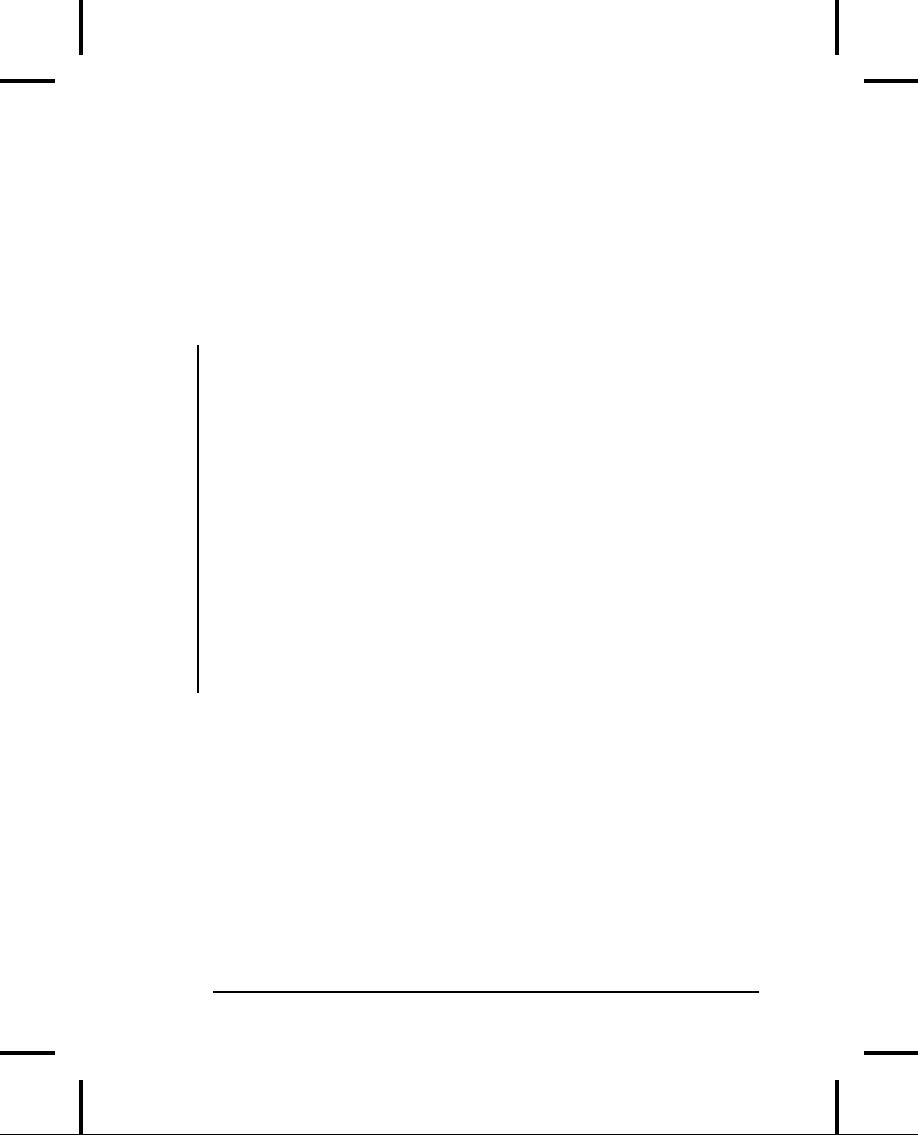
as
the demonstration of pointer
use above: you can pass
the
address
of an argument using a reference.
The difference
between
references
and pointers is that calling
a function
that takes
references
is cleaner, syntactically, than calling a
function that takes
pointers
(and it is exactly this
syntactic difference that
makes
references
essential in certain situations). If
PassAddress.cppis
modified
to use references, you can
see the difference in
the
function
call in main(
):
//:
C03:PassReference.cpp
#include
<iostream>
using
namespace std;
void
f(int& r) {
cout
<< "r = " << r << endl;
cout
<< "&r = " << &r <<
endl;
r
= 5;
cout
<< "r = " << r << endl;
}
int
main() {
int
x = 47;
cout
<< "x = " << x << endl;
cout
<< "&x = " << &x <<
endl;
f(x);
// Looks like
pass-by-value,
//
is actually pass by
reference
cout
<< "x = " << x << endl;
}
///:~
In
f(
)'s
argument list, instead of
saying int*
to
pass a pointer, you
say
int&
to
pass a reference. Inside
f(
),
if you just say `r'
(which
would
produce the address if
r
were
a pointer) you get the
value in
the
variable that r
references. If you
assign to r,
you actually assign to
the
variable that r
references.
In fact, the only way to get
the
address
that's held inside r
is
with the `&'
operator.
In
main(
),
you can see the key effect
of references in the syntax
of
the
call to f(
),
which is just f(x).
Even though this looks like
an
ordinary
pass-by-value, the effect of
the reference is that it
actually
152
Thinking
in C++

takes
the address and passes it in, rather than
making a copy of the
value.
The output is:
x
= 47
&x
= 0065FE00
r
= 47
&r
= 0065FE00
r=5
x=5
So
you can see that
pass-by-reference allows a function to
modify
the
outside object, just like
passing a pointer does (you
can also
observe
that the reference obscures
the fact that an address is
being
passed;
this will be examined later in
the book). Thus, for
this
simple
introduction you can assume
that references are just
a
syntactically
different way (sometimes referred to as
"syntactic
sugar")
to accomplish the same thing
that pointers do:
allow
functions
to change outside
objects.
Pointers
and references as modifiers
So
far, you've seen the basic
data types char,
int,
float,
and
double,
along
with the specifiers signed,
unsigned
short, and
long,
which
,
can
be used with the basic data
types in almost any
combination.
Now
we've added pointers and references
that are orthogonal
to
the
basic data types and
specifiers, so the possible
combinations
have
just tripled:
//:
C03:AllDefinitions.cpp
//
All possible combinations of
basic data types,
//
specifiers, pointers and
references
#include
<iostream>
using
namespace std;
void
f1(char c, int i, float f,
double d);
void
f2(short int si, long
int li, long double
ld);
void
f3(unsigned char uc,
unsigned int ui,
unsigned
short int usi, unsigned
long int uli);
void
f4(char* cp, int* ip,
float* fp, double*
dp);
void
f5(short int* sip, long
int* lip,
long
double* ldp);
3:
The C in C++
153

void
f6(unsigned char* ucp,
unsigned int* uip,
unsigned
short int* usip,
unsigned
long int* ulip);
void
f7(char& cr, int& ir, float&
fr, double& dr);
void
f8(short int& sir, long int&
lir,
long
double& ldr);
void
f9(unsigned char& ucr, unsigned
int& uir,
unsigned
short int& usir,
unsigned
long int& ulir);
int
main() {} ///:~
Pointers
and references also work when passing
objects into and
out
of functions; you'll learn about
this in a later
chapter.
There's
one other type that works with
pointers: void.
If you state
that
a pointer is a void*,
it means that any type of address at all
can
be
assigned to that pointer
(whereas if you have an int*,
you can
assign
only the address of an int
variable
to that pointer). For
example:
//:
C03:VoidPointer.cpp
int
main() {
void*
vp;
char
c;
int
i;
float
f;
double
d;
//
The address of ANY type
can be
//
assigned to a void
pointer:
vp
= &c;
vp
= &i;
vp
= &f;
vp
= &d;
}
///:~
Once
you assign to a void*
you
lose any information about
what
type
it is. This means that
before you can use the
pointer, you must
cast
it to the correct
type:
//:
C03:CastFromVoidPointer.cpp
int
main() {
int
i = 99;
154
Thinking
in C++

void*
vp = &i;
//
Can't dereference a void
pointer:
//
*vp = 3; // Compile-time
error
//
Must cast back to int
before dereferencing:
*((int*)vp)
= 3;
}
///:~
The
cast (int*)vptakes
the void*
and
tells the compiler to treat
it as
an
int*,
and thus it can be successfully
dereferenced. You might
observe
that this syntax is ugly, and it
is, but it's worse than that
the
void*
introduces
a hole in the language's type
system. That is, it
allows,
or even promotes, the
treatment of one type as
another
type.
In the example above, I
treat an int
as
an int
by
casting vp
to
an
int*,
but there's nothing that
says I can't cast it to a
char*
or
double*,
which would modify a different amount of storage
that
had
been allocated for the
int,
possibly crashing the
program. In
general,
void
pointers
should be avoided, and used only in
rare
special
cases, the likes of which you won't be
ready to consider
until
significantly later in the
book.
You
cannot have a void
reference,
for reasons that will be
explained
in
Chapter 11.
Scoping
Scoping
rules tell you where a
variable is valid, where it is
created,
and
where it gets destroyed
(i.e., goes out of scope).
The scope of a
variable
extends from the point where
it is defined to the
first
closing
brace that matches the
closest opening brace before
the
variable
was defined. That is, a
scope is defined by its
"nearest" set
of
braces. To illustrate:
//:
C03:Scope.cpp
//
How variables are
scoped
int
main() {
int
scp1;
//
scp1 visible here
{
//
scp1 still visible
here
3:
The C in C++
155

//.....
int
scp2;
//
scp2 visible here
//.....
{
//
scp1 & scp2 still
visible here
//..
int
scp3;
//
scp1, scp2 & scp3
visible here
//
...
}
// <-- scp3 destroyed
here
//
scp3 not available
here
//
scp1 & scp2 still
visible here
//
...
}
// <-- scp2 destroyed
here
//
scp3 & scp2 not
available here
//
scp1 still visible
here
//..
}
// <-- scp1 destroyed
here
///:~
The
example above shows when
variables are visible and
when
they
are unavailable (that is,
when they go
out of scope). A
variable
can
be used only when inside its
scope. Scopes can be
nested,
indicated
by matched pairs of braces
inside other matched pairs
of
braces.
Nesting means that you can
access a variable in a scope
that
encloses
the scope you are in. In the
example above, the
variable
scp1
is
available inside all of the
other scopes, while scp3
is
available
only in the innermost
scope.
Defining
variables on the fly
As
noted earlier in this
chapter, there is a significant
difference
between
C and C++ when defining variables. Both
languages
require
that variables be defined
before they are used, but C
(and
many
other traditional procedural
languages) forces you to
define
all
the variables at the
beginning of a scope, so that when
the
compiler
creates a block it can
allocate space for those
variables.
While
reading C code, a block of
variable definitions is usually
the
first
thing you see when entering a scope.
Declaring all variables at
156
Thinking
in C++
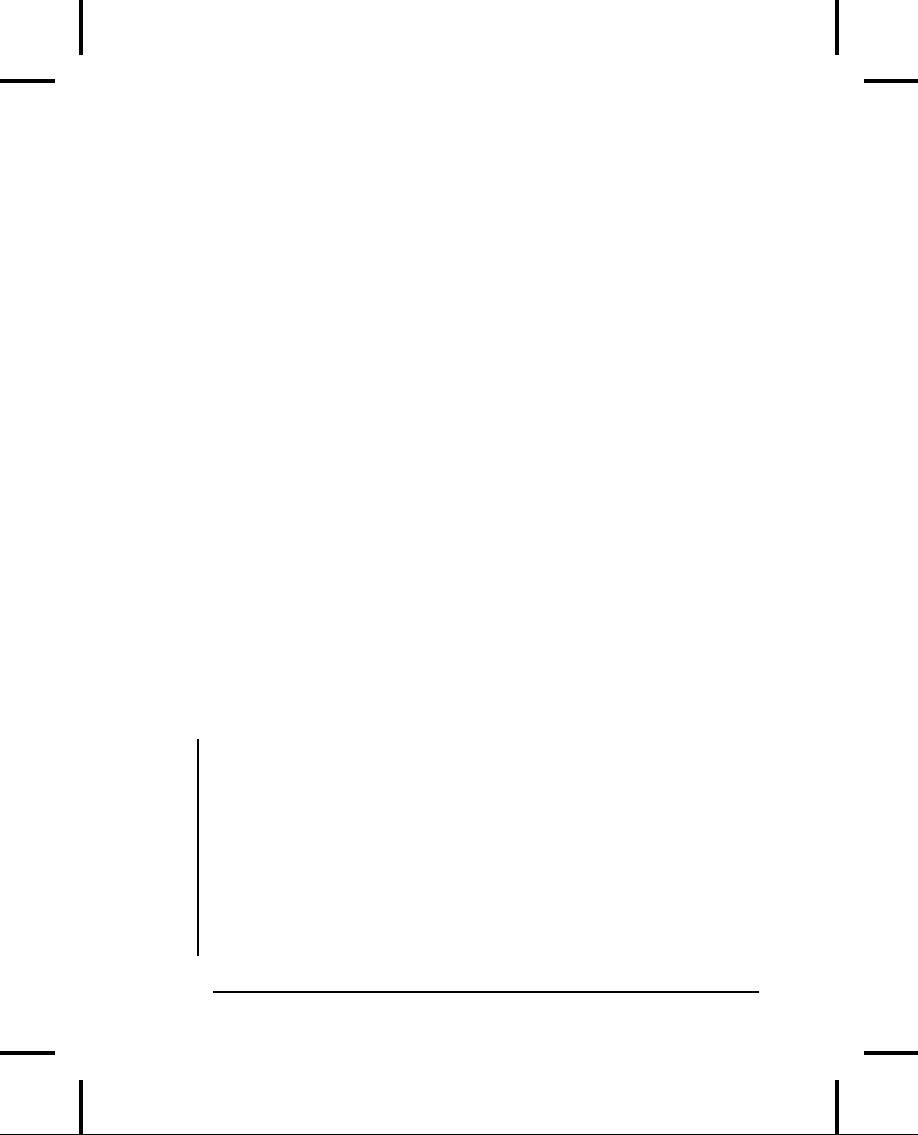
the
beginning of the block
requires the programmer to write in
a
particular
way because of the implementation
details of the
language.
Most people don't know all the variables
they are going
to
use before they write the
code, so they must keep jumping
back
to
the beginning of the block
to insert new variables, which is
awkward
and causes errors. These
variable definitions don't
usually
mean much to the reader, and they
actually tend to be
confusing
because they appear apart from
the context in which they
are
used.
C++
(not C) allows you to define
variables anywhere in a scope,
so
you
can define a variable right
before you use it. In
addition, you
can
initialize the variable at
the point you define it,
which prevents
a
certain class of errors.
Defining variables this way
makes the code
much
easier to write and reduces the
errors you get from
being
forced
to jump back and forth within a scope. It
makes the code
easier
to understand because you see a
variable defined in
the
context
of its use. This is
especially important when you
are
defining
and initializing a variable at the
same time you can
see
the
meaning of the initialization
value by the way the
variable is
used.
You
can also define variables
inside the control
expressions of for
loops
and while
loops,
inside the conditional of an
if
statement,
and
inside the selector
statement of a switch.
Here's an example
showing
on-the-fly variable
definitions:
//:
C03:OnTheFly.cpp
//
On-the-fly variable
definitions
#include
<iostream>
using
namespace std;
int
main() {
//..
{
// Begin a new scope
int
q = 0; // C requires definitions
here
//..
//
Define at point of
use:
for(int
i = 0; i < 100; i++) {
3:
The C in C++
157

q++;
// q comes from a larger
scope
//
Definition at the end of the
scope:
int
p = 12;
}
int
p = 1; // A different p
}
// End scope containing q &
outer p
cout
<< "Type characters:" <<
endl;
while(char
c = cin.get() != 'q') {
cout
<< c << " wasn't it" <<
endl;
if(char
x = c == 'a' || c == 'b')
cout
<< "You typed a or b" <<
endl;
else
cout
<< "You typed " << x <<
endl;
}
cout
<< "Type A, B, or C" <<
endl;
switch(int
i = cin.get()) {
case
'A': cout << "Snap" <<
endl; break;
case
'B': cout << "Crackle" <<
endl; break;
case
'C': cout << "Pop" <<
endl; break;
default:
cout << "Not A, B or C!" <<
endl;
}
}
///:~
In
the innermost scope,
p
is
defined right before the
scope ends, so
it
is really a useless gesture (but it
shows you can define a
variable
anywhere).
The p
in
the outer scope is in the
same situation.
The
definition of i
in
the control expression of
the for
loop
is an
example
of being able to define a
variable exactly
at the
point you
need
it (you can do this only in C++).
The scope of i
is
the scope of
the
expression controlled by the
for
loop,
so you can turn around
and
re-use i
in
the next for
loop.
This is a convenient and
commonly-used
idiom in C++; i
is
the classic name for a
loop
counter
and you don't have to keep inventing new
names.
Although
the example also shows
variables defined within while,
if,
and
switch
statements,
this kind of definition is much
less
common
than those in for
expressions,
possibly because the
syntax
is
so constrained. For example, you
cannot have any
parentheses.
That
is, you cannot say:
158
Thinking
in C++
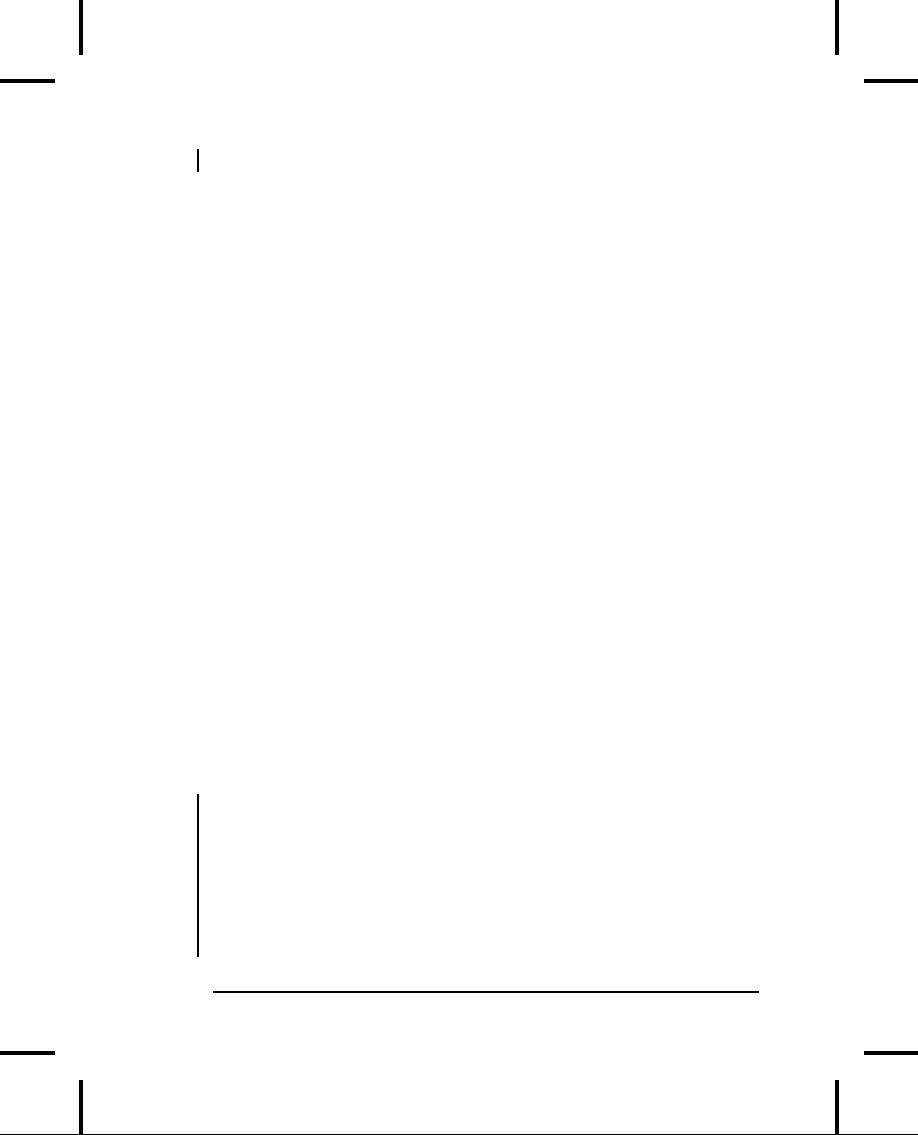
while((char
c = cin.get()) != 'q')
The
addition of the extra
parentheses would seem like an
innocent
and
useful thing to do, and because you
cannot use them,
the
results
are not what you might like. The
problem occurs
because
`!='
has a higher precedence than
`=',
so the char
c ends
up
containing
a bool
converted
to char.
When that's printed, on many
terminals
you'll see a smiley-face
character.
In
general, you can consider
the ability to define
variables within
while,
if,
and
switch
statements
as being there for
completeness,
but
the only place you're likely
to use this kind of
variable
definition
is in a for
loop
(where you'll use it quite
often).
Specifying
storage allocation
When
creating a variable, you have a number of
options to specify
the
lifetime of the variable, how
the storage is allocated for
that
variable,
and how the variable is treated by
the compiler.
Global
variables
Global
variables are defined
outside all function bodies and
are
available
to all parts of the program
(even code in other
files).
Global
variables are unaffected by
scopes and are always
available
(i.e.,
the lifetime of a global
variable lasts until the
program ends). If
the
existence of a global variable in
one file is declared using
the
extern
keyword
in another file, the data is
available for use by
the
second
file. Here's an example of
the use of global
variables:
//:
C03:Global.cpp
//{L}
Global2
//
Demonstration of global
variables
#include
<iostream>
using
namespace std;
int
globe;
void
func();
int
main() {
3:
The C in C++
159

globe
=
12;
cout
<<
globe
<< endl;
func();
//
Modifies globe
cout
<<
globe
<< endl;
}
///:~
Here's
a file that accesses
globe
as
an extern:
//:
C03:Global2.cpp {O}
//
Accessing external global
variables
extern
int globe;
//
(The linker resolves the
reference)
void
func() {
globe
= 47;
}
///:~
Storage
for the variable globe
is
created by the definition
in
Global.cpp
and
that same variable is accessed by
the code in
,
Global2.cpp
Since
the code in Global2.cppis
compiled separately
.
from
the code in Global.cpp
the
compiler must be informed
that
,
the
variable exists elsewhere by
the declaration
extern
int globe;
When
you run the program, you'll see
that the call to func(
) does
indeed
affect the single global
instance of globe.
In
Global.cpp
you
can see the special
comment tag (which is my
,
own
design):
//{L}
Global2
This
says that to create the
final program, the object
file with the
name
Global2
must
be linked in (there is no extension
because the
extension
names of object files differ
from one system to the
next).
In
Global2.cpp
the
first line has another
special comment tag
{O},
,
which
says "Don't try to create an executable
out of this file,
it's
being
compiled so that it can be
linked into some other
executable."
The
ExtractCode.cppprogram
in Volume 2 of this book
(downloadable
at ) reads
these tags and creates
160
Thinking
in C++

the
appropriate makefileso
everything compiles properly
(you'll
learn
about makefile
at
the end of this
chapter).
s
Local
variables
Local
variables occur within a scope; they
are "local" to a
function.
They
are often called automatic
variables
because they automatically
come
into being when the scope is
entered and automatically go
away
when the scope closes. The
keyword auto
makes
this explicit,
but
local variables default to
auto
so
it is never necessary to
declare
something
as an auto.
Register
variables
A
register variable is a type of local
variable. The registerkeyword
tells
the compiler "Make accesses to
this variable as fast
as
possible."
Increasing the access speed
is implementation
dependent,
but, as the name suggests,
it is often done by
placing
the
variable in a register. There is no
guarantee that the
variable
will
be placed in a register or even
that the access speed
will
increase.
It is a hint to the compiler.
There
are restrictions to the use
of registervariables.
You cannot
take
or compute the address of a
registervariable.
A register
variable
can be declared only within a block (you
cannot have
global
or static
registervariables).
You can, however, use a
register
variable
as a formal argument in a function
(i.e., in the
argument
list).
In
general, you shouldn't try to
second-guess the
compiler's
optimizer,
since it will probably do a better
job than you can.
Thus,
the
registerkeyword
is best avoided.
static
The
static
keyword
has several distinct
meanings. Normally,
variables
defined local to a function
disappear at the end of
the
function
scope. When you call the
function again, storage for
the
3:
The C in C++
161
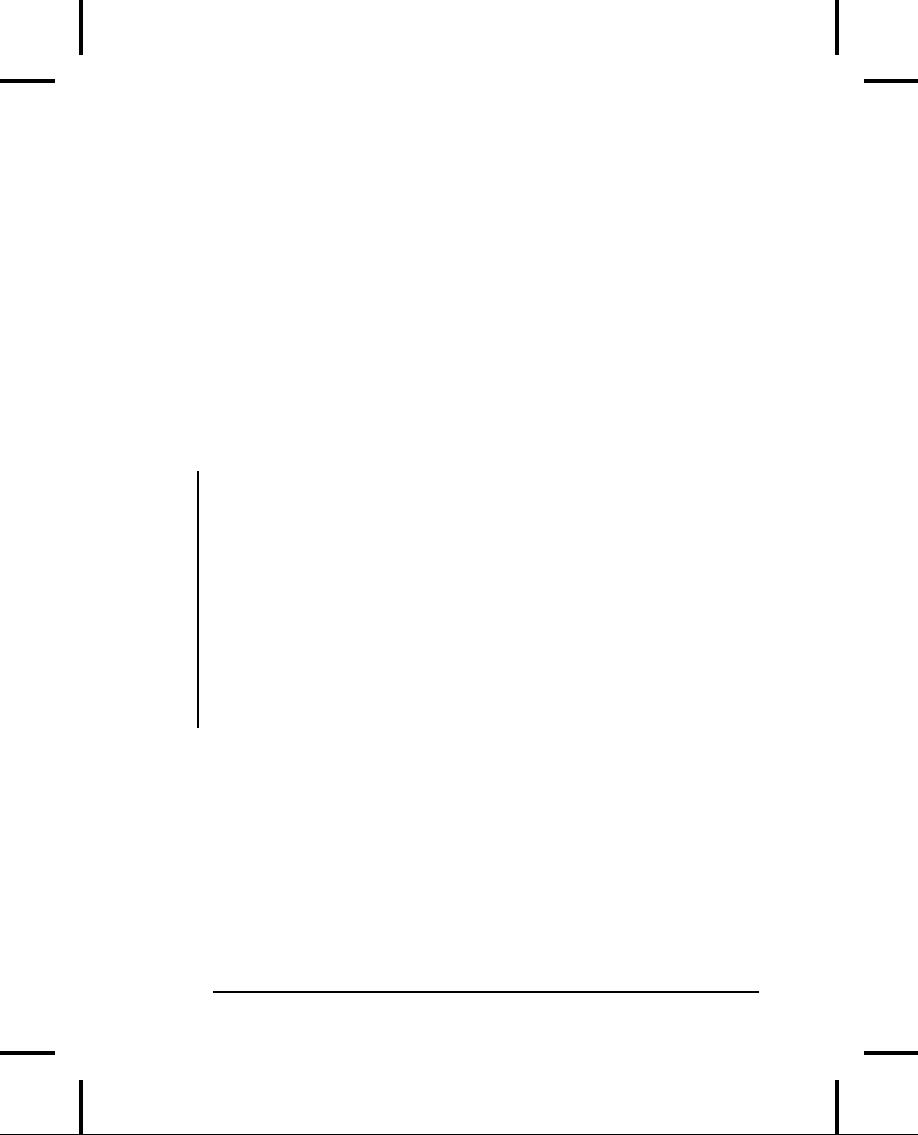
variables
is created anew and the
values are re-initialized. If
you
want
a value to be extant throughout the
life of a program, you
can
define
a function's local variable to be
static
and
give it an initial
value.
The initialization is performed only
the first time
the
function
is called, and the data
retains its value between
function
calls.
This way, a function can
"remember" some piece
of
information
between function
calls.
You
may wonder why a global variable isn't
used instead. The
beauty
of a static
variable
is that it is unavailable outside
the scope
of
the function, so it can't be
inadvertently changed. This
localizes
errors.
Here's
an example of the use of
static
variables:
//:
C03:Static.cpp
//
Using a static variable in a
function
#include
<iostream>
using
namespace std;
void
func() {
static
int i = 0;
cout
<< "i = " << ++i <<
endl;
}
int
main() {
for(int
x = 0; x < 10; x++)
func();
}
///:~
Each
time func(
) is called in the for loop, it
prints a different
value.
If
the keyword static
is
not used, the value printed
will always be
`1'.
The
second meaning of static
is
related to the first in
the
"unavailable
outside a certain scope"
sense. When static
is
applied
to
a function name or to a variable
that is outside of all functions,
it
means
"This name is unavailable
outside of this file." The
function
name
or variable is local to the
file; we say it has file
scope. As a
162
Thinking
in C++

demonstration,
compiling and linking the following two
files will
cause
a linker error:
//:
C03:FileStatic.cpp
//
File scope demonstration.
Compiling and
//
linking this file with
FileStatic2.cpp
//
will cause a linker
error
//
File scope means only
available in this
file:
static
int fs;
int
main() {
fs
= 1;
}
///:~
Even
though the variable fs
is
claimed to exist as an extern
in
the
following
file, the linker won't find it
because it has been
declared
static
in
FileStatic.cpp
.
//:
C03:FileStatic2.cpp {O}
//
Trying to reference fs
extern
int fs;
void
func() {
fs
= 100;
}
///:~
The
static
specifier
may also be used inside a
class.
This
explanation
will be delayed until you learn to create
classes, later in
the
book.
extern
The
extern
keyword
has already been briefly
described and
demonstrated.
It tells the compiler that a
variable or a function
exists,
even if the compiler hasn't
yet seen it in the file
currently
being
compiled. This variable or
function may be defined in
another
file or further down in the current
file. As an example of
the
latter:
//:
C03:Forward.cpp
//
Forward function & data
declarations
3:
The C in C++
163

#include
<iostream>
using
namespace std;
//
This is not actually
external, but the
//
compiler must be told it
exists somewhere:
extern
int i;
extern
void func();
int
main() {
i
= 0;
func();
}
int
i; // The data
definition
void
func() {
i++;
cout
<< i;
}
///:~
When
the compiler encounters the
declaration `extern
int i it
',
knows
that the definition for
i
must
exist somewhere as a
global
variable.
When the compiler reaches
the definition of i,
no other
declaration
is visible, so it knows it has found the
same i
declared
earlier
in the file. If you were to
define i
as
static,
you would be
telling
the compiler that i is
defined globally (via the
extern),
but it
also
has file scope (via
the static),
so the compiler will generate
an
error.
Linkage
To
understand the behavior of C and C++
programs, you need to
know
about linkage. In an
executing program, an identifier
is
represented
by storage in memory that holds a
variable or a
compiled
function body. Linkage
describes this storage as it is
seen
by
the linker. There are two
types of linkage: internal
linkage and
external
linkage.
Internal
linkage means that storage
is created to represent
the
identifier
only for the file being
compiled. Other files may
use the
same
identifier name with internal
linkage, or for a global
variable,
and
no conflicts will be found by the linker
separate storage is
created
for each identifier. Internal
linkage is specified by
the
keyword
static
in
C and C++.
164
Thinking
in C++
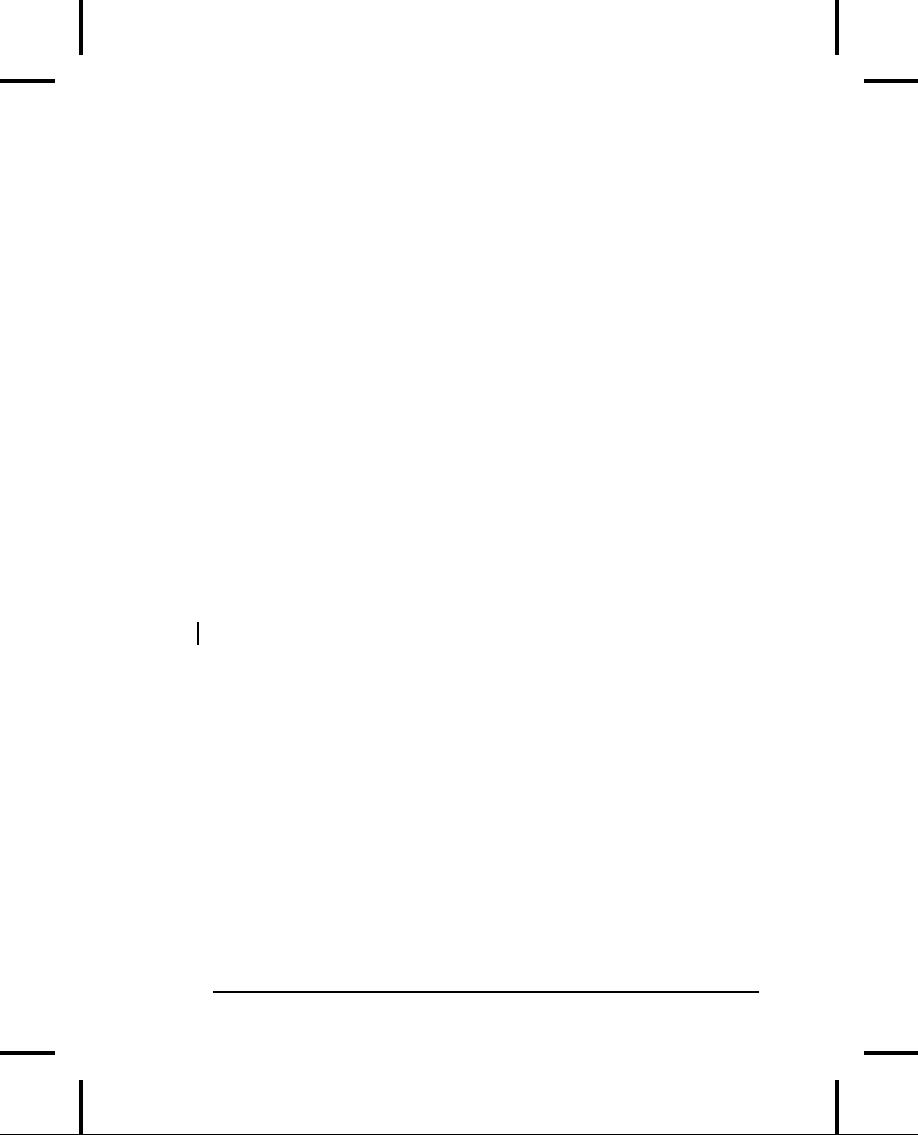
External
linkage means that a single
piece of storage is created
to
represent
the identifier for all files
being compiled. The storage
is
created
once, and the linker must
resolve all other references to
that
storage.
Global variables and function
names have external
linkage.
These
are accessed from other files by
declaring them with the
keyword
extern.
Variables defined outside all
functions (with the
exception
of const
in
C++) and function definitions
default to
external
linkage. You can specifically
force them to have
internal
linkage
using the static
keyword.
You can explicitly state
that an
identifier
has external linkage by
defining it with the extern
keyword.
Defining a variable or function with
extern
is
not
necessary
in C, but it is sometimes necessary for
const
in
C++.
Automatic
(local) variables exist only
temporarily, on the
stack,
while
a function is being called.
The linker doesn't know
about
automatic
variables, and so these have
no
linkage.
Constants
In
old (pre-Standard) C, if you wanted to
make a constant, you had
to
use the preprocessor:
#define
PI 3.14159
Everywhere
you used PI,
the value 3.14159 was
substituted by the
preprocessor
(you can still use this
method in C and C++).
When
you use the preprocessor to
create constants, you
place
control
of those constants outside
the scope of the compiler.
No
type
checking is performed on the
name PI
and
you can't take the
address
of PI
(so
you can't pass a pointer or a
reference to PI).
PI
cannot
be a variable of a user-defined type.
The meaning of PI
lasts
from
the point it is defined to
the end of the file;
the preprocessor
doesn't
recognize scoping.
C++
introduces the concept of a
named constant that is just
like a
variable,
except that its value
cannot be changed. The
modifier
const
tells
the compiler that a name
represents a constant. Any
data
3:
The C in C++
165
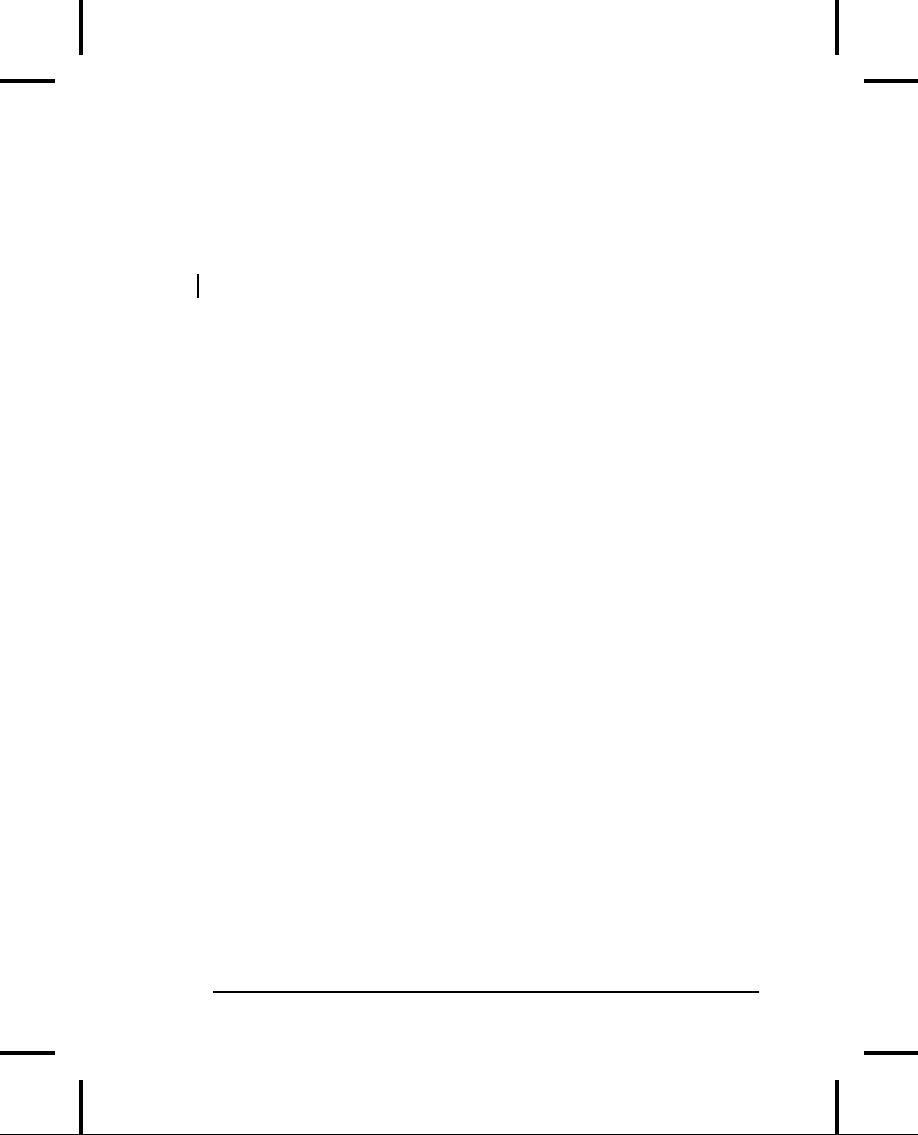
type,
built-in or user-defined, may be defined
as const.
If you
define
something as const
and
then attempt to modify it,
the
compiler
will generate an error.
You
must specify the type of a const,
like this:
const
int x = 10;
In
Standard C and C++, you can
use a named constant in
an
argument
list, even if the argument
it fills is a pointer or a
reference
(i.e.,
you can take the address of
a const).
A const
has
a scope, just
like
a regular variable, so you can "hide" a
const
inside
a function
and
be sure that the name will
not affect the rest of the
program.
The
const
was
taken from C++ and incorporated into
Standard C,
albeit
quite differently. In C, the
compiler treats a const
just
like a
variable
that has a special tag
attached that says "Don't
change
me."
When you define a const
in
C, the compiler creates
storage for
it,
so if you define more than one
const
with
the same name in two
different
files (or put the definition
in a header file), the
linker will
generate
error messages about
conflicts. The intended use
of const
in
C is quite different from its
intended use in C++ (in short,
it's
nicer
in C++).
Constant
values
In
C++, a const
must
always have an initialization
value (in C, this
is
not true). Constant values for
built-in types are expressed
as
decimal,
octal, hexadecimal, or floating-point
numbers (sadly,
binary
numbers were not considered
important), or as characters.
In
the absence of any other
clues, the compiler assumes
a constant
value
is a decimal number. The
numbers 47, 0, and 1101 are
all
treated
as decimal numbers.
A
constant value with a leading 0 is
treated as an octal number
(base
8). Base 8 numbers can
contain only digits 0-7; the
compiler
flags
other digits as an error. A
legitimate octal number is 017 (15
in
base
10).
166
Thinking
in C++

A
constant value with a leading 0x is
treated as a hexadecimal
number
(base 16). Base 16 numbers
contain the digits 0-9 and
a-f or
A-F.
A legitimate hexadecimal number is 0x1fe
(510 in base 10).
Floating
point numbers can contain
decimal points and
exponential
powers
(represented by e, which means "10 to
the power of").
Both
the
decimal point and the
e
are
optional. If you assign a constant
to
a
floating-point variable, the
compiler will take the
constant value
and
convert it to a floating-point number
(this process is one
form
of
what's called implicit
type conversion). However, it is a
good idea
to
use either a decimal point
or an e
to
remind the reader that
you
are
using a floating-point number;
some older compilers also
need
the
hint.
Legitimate
floating-point constant values
are: 1e4, 1.0001, 47.0,
0.0,
and
-1.159e-77. You can add
suffixes to force the type
of floating-
point
number: f
or
F
forces
a float,
L
or
l
forces
a long
double;
otherwise
the number will be a double.
Character
constants are characters
surrounded by single quotes,
as:
`A',
`0',
` `. Notice there is a big
difference between the
character `0'
(ASCII
96) and the value 0.
Special characters are
represented with
the
"backslash escape": `\n'
(newline), `\t'
(tab), `\\'
(backslash),
`\r'
(carriage return), `\"'
(double quotes), `\''
(single quote), etc.
You
can also express char
constants in octal: `\17'
or hexadecimal:
`\xff'.
volatile
Whereas
the qualifier const
tells
the compiler "This never
changes"
(which
allows the compiler to
perform extra optimizations),
the
qualifier
volatiletells
the compiler "You never know when
this will
change,"
and prevents the compiler from
performing any
optimizations
based on the stability of
that variable. Use
this
keyword
when you read some value
outside the control of
your
code,
such as a register in a piece of
communication hardware. A
3:
The C in C++
167

volatilevariable
is always read whenever its
value is required,
even
if it was just read the
line before.
A
special case of some storage
being "outside the control
of your
code"
is in a multithreaded program. If you're
watching a
particular
flag that is modified by
another thread or process,
that
flag
should be volatileso
the compiler doesn't make
the
assumption
that it can optimize away multiple
reads of the flag.
Note
that volatilemay
have no effect when a compiler is
not
optimizing,
but may prevent critical bugs when you
start
optimizing
the code (which is when the
compiler will begin
looking
for
redundant reads).
The
const
and
volatilekeywords
will be further illuminated in a
later
chapter.
Operators
and their use
This
section covers all the
operators in C and C++.
All
operators produce a value from
their operands. This value
is
produced
without modifying the operands, except
with the
assignment,
increment, and decrement operators.
Modifying an
operand
is called a side
effect. The
most common use for
operators
that
modify their operands is to generate
the side effect, but
you
should
keep in mind that the value
produced is available for your
use
just as in operators without side
effects.
Assignment
Assignment
is performed with the operator
=.
It means "Take the
right-hand
side (often called the
rvalue) and copy
it into the left-
hand
side (often called the
lvalue)." An
rvalue is any constant,
variable,
or expression that can
produce a value, but an lvalue
must
be
a distinct, named variable
(that is, there must be a
physical space
in
which to store data). For
instance, you can assign a
constant
168
Thinking
in C++
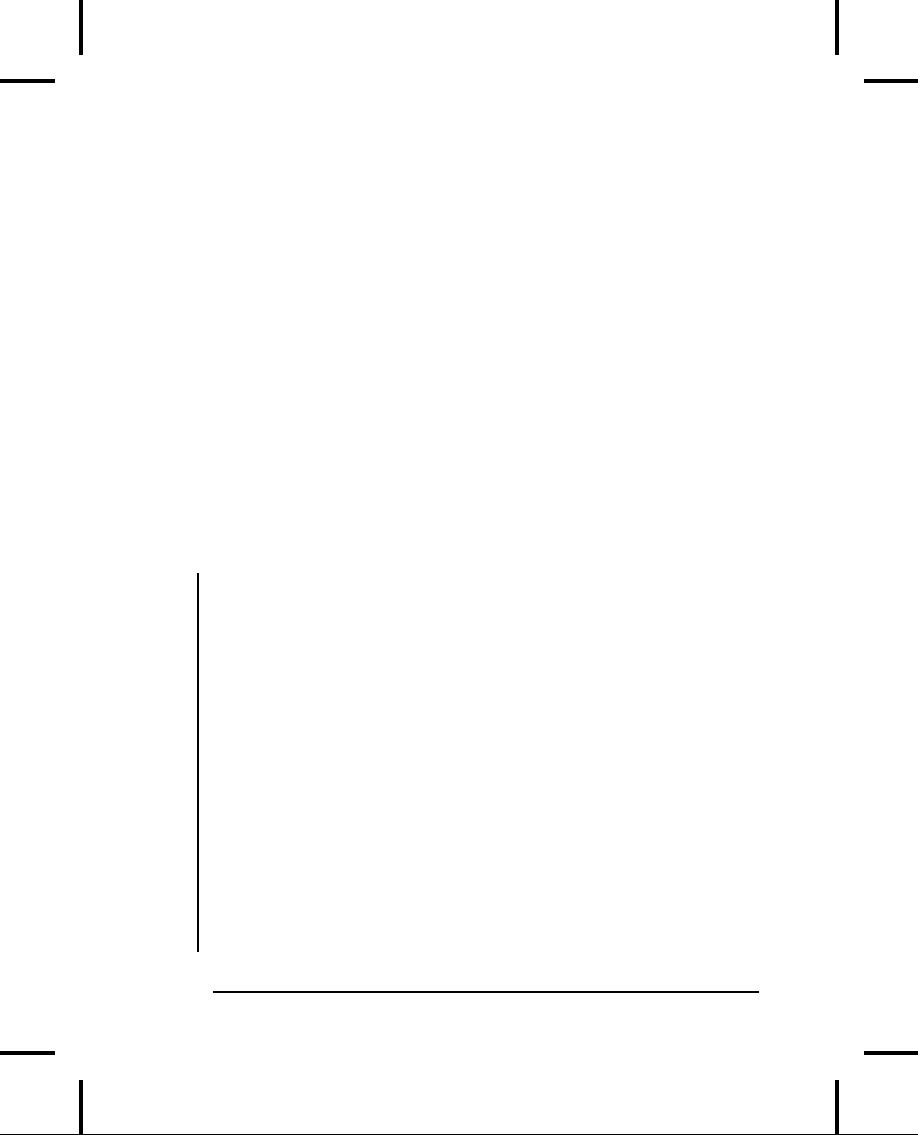
value
to a variable (A
= 4;), but you
cannot assign anything to
constant
value it cannot be an lvalue (you
can't say 4
= A;).
Mathematical
operators
The
basic mathematical operators
are the same as the
ones available
in
most programming languages:
addition (+),
subtraction (-),
division
(/),
multiplication (*),
and modulus (%;
this produces the
remainder
from integer division). Integer
division truncates
the
result
(it doesn't round). The
modulus operator cannot be
used
with
floating-point numbers.
C
and C++ also use a shorthand
notation to perform an
operation
and
an assignment at the same
time. This is denoted by an
operator
followed
by an equal sign, and is consistent with
all the operators
in
the language (whenever it
makes sense). For example,
to add 4 to
the
variable x
and
assign x
to
the result, you say:
x
+= 4;.
This
example shows the use of
the mathematical
operators:
//:
C03:Mathops.cpp
//
Mathematical operators
#include
<iostream>
using
namespace std;
//
A macro to display a string
and a value.
#define
PRINT(STR, VAR) \
cout
<< STR " = " << VAR <<
endl
int
main() {
int
i, j, k;
float
u, v, w; // Applies to doubles,
too
cout
<< "enter an integer: ";
cin
>> j;
cout
<< "enter another integer:
";
cin
>> k;
PRINT("j",j);
PRINT("k",k);
i
= j + k; PRINT("j + k",i);
i
= j - k; PRINT("j - k",i);
i
= k / j; PRINT("k / j",i);
i
= k * j; PRINT("k * j",i);
3:
The C in C++
169

i
= k % j; PRINT("k % j",i);
//
The following only works
with integers:
j
%= k; PRINT("j %= k",
j);
cout
<< "Enter a floating-point number:
";
cin
>> v;
cout
<< "Enter another floating-point
number:";
cin
>> w;
PRINT("v",v);
PRINT("w",w);
u
= v + w; PRINT("v + w",
u);
u
= v - w; PRINT("v - w",
u);
u
= v * w; PRINT("v * w",
u);
u
= v / w; PRINT("v / w",
u);
//
The following works for
ints, chars,
//
and doubles too:
PRINT("u",
u); PRINT("v", v);
u
+= v; PRINT("u += v",
u);
u
-= v; PRINT("u -= v",
u);
u
*= v; PRINT("u *= v",
u);
u
/= v; PRINT("u /= v",
u);
}
///:~
The
rvalues of all the assignments
can, of course, be much
more
complex.
Introduction
to preprocessor macros
Notice
the use of the macro
PRINT(
)to
save typing (and typing
errors!).
Preprocessor macros are
traditionally named with all
uppercase
letters so they stand out you'll
learn later that
macros
can
quickly become dangerous
(and they can also be very
useful).
The
arguments in the parenthesized
list following the macro
name
are
substituted in all the code following
the closing
parenthesis.
The
preprocessor removes the
name PRINT
and
substitutes the
code
wherever the macro is
called, so the compiler
cannot generate
any
error messages using the
macro name, and it doesn't do
any
type
checking on the arguments
(the latter can be
beneficial, as
shown
in the debugging macros at
the end of the
chapter).
170
Thinking
in C++
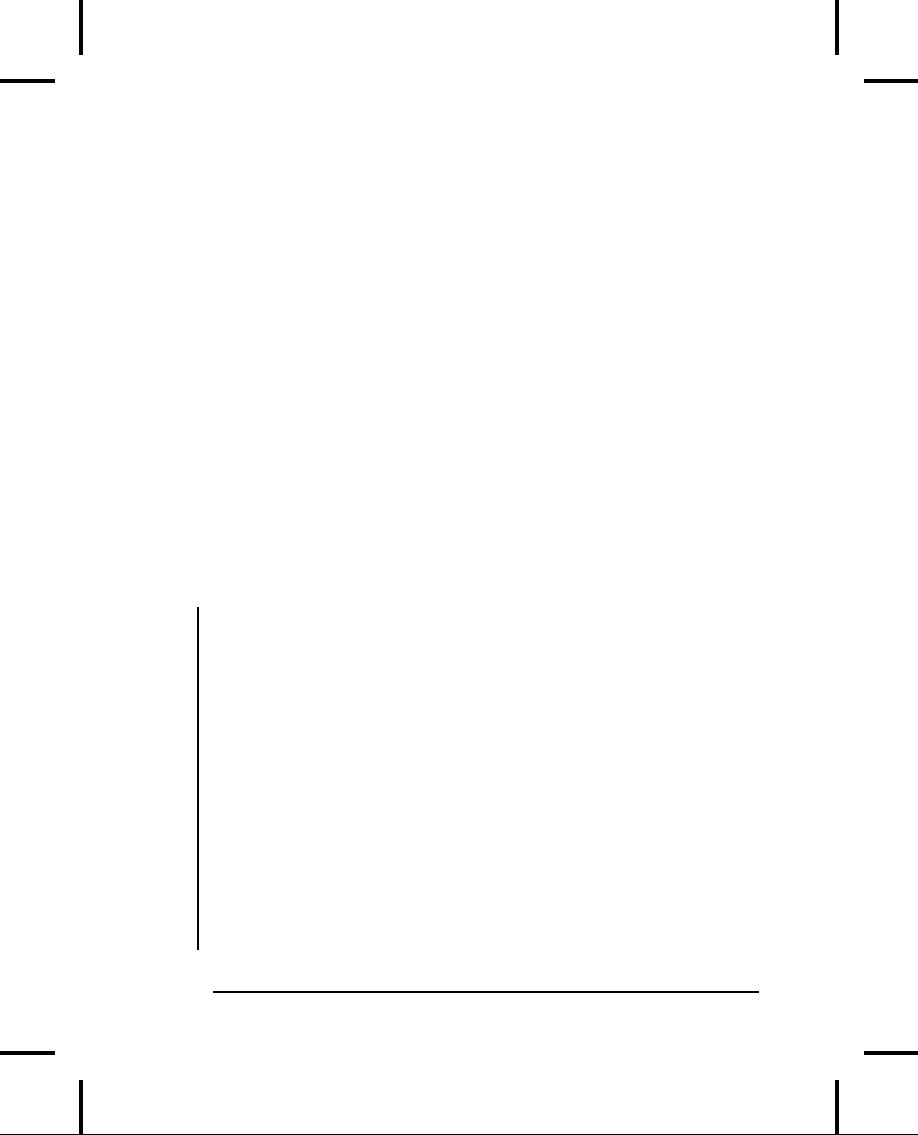
Relational
operators
Relational
operators establish a relationship
between the values of
the
operands. They produce a Boolean
(specified with the bool
keyword
in C++) true
if
the relationship is true, and
false
if
the
relationship
is false. The relational
operators are: less than
(<),
greater
than (>),
less than or equal to (<=),
greater than or equal to
(>=),
equivalent (==),
and not equivalent (!=).
They may be used
with
all built-in data types in C and
C++. They may be given
special
definitions for user-defined data
types in C++ (you'll learn
about
this in Chapter 12, which
covers operator
overloading).
Logical
operators
The
logical operators and
(&&)
and or (||)
produce a true
or
false
based
on the logical relationship of
its arguments. Remember
that
in
C and C++, a statement is true
if
it has a non-zero value,
and
false
if
it has a value of zero. If you print a
bool,
you'll typically see
a
`1'
for true
and
`0'
for false.
This
example uses the relational
and logical operators:
//:
C03:Boolean.cpp
//
Relational and logical
operators.
#include
<iostream>
using
namespace std;
int
main() {
int
i,j;
cout
<< "Enter an integer: ";
cin
>> i;
cout
<< "Enter another integer:
";
cin
>> j;
cout
<< "i > j is " << (i > j) <<
endl;
cout
<< "i < j is " << (i < j) <<
endl;
cout
<< "i >= j is " << (i >= j) <<
endl;
cout
<< "i <= j is " << (i <= j) <<
endl;
cout
<< "i == j is " << (i == j) <<
endl;
cout
<< "i != j is " << (i != j) <<
endl;
cout
<< "i && j is " << (i && j) <<
endl;
cout
<< "i || j is " << (i || j) <<
endl;
3:
The C in C++
171

cout
<< " (i < 10) && (j < 10) is
"
<<
((i < 10) && (j < 10))
<< endl;
}
///:~
You
can replace the definition
for int
with
float
or
double
in
the
program
above. Be aware, however,
that the comparison of
a
floating-point
number with the value of zero is
strict; a number that
is
the tiniest fraction
different from another number is still
"not
equal."
A floating-point number that is the
tiniest bit above zero
is
still
true.
Bitwise
operators
The
bitwise operators allow you to manipulate
individual bits in a
number
(since floating point values
use a special internal
format,
the
bitwise operators work only with integral
types: char,
int
and
long).
Bitwise operators perform
Boolean algebra on
the
corresponding
bits in the arguments to
produce the result.
The
bitwise and
operator
(&)
produces a one in the output
bit if
both
input bits are one;
otherwise it produces a zero.
The bitwise or
operator
(|)
produces a one in the output
bit if either input bit is
a
one
and produces a zero only if both input
bits are zero.
The
bitwise
exclusive
or, or xor
(^)
produces a one in the output
bit if one
or
the other input bit is a
one, but not both. The
bitwise not
(~,
also
called
the ones
complement operator)
is a unary operator it only
takes
one argument (all other
bitwise operators are
binary
operators).
Bitwise not
produces
the opposite of the input
bit a
one
if the input bit is zero, a
zero if the input bit is
one.
Bitwise
operators can be combined with
the =
sign
to unite the
operation
and assignment: &=,
|=,
and
^=
are
all legitimate
operations
(since ~
is
a unary operator it cannot be combined
with
the
=
sign).
172
Thinking
in C++
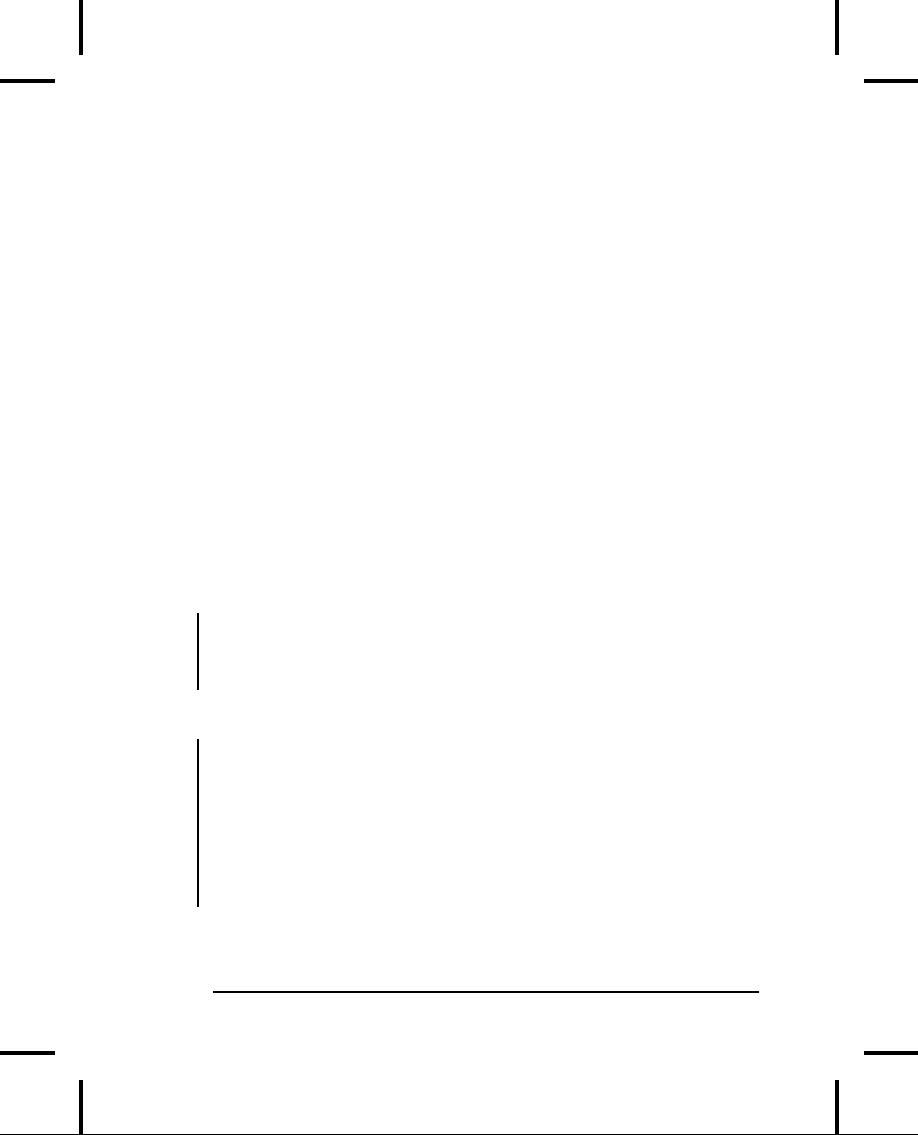
Shift
operators
The
shift operators also
manipulate bits. The
left-shift operator (<<)
produces
the operand to the left of
the operator shifted to the
left
by
the number of bits specified
after the operator. The
right-shift
operator
(>>)
produces the operand to the
left of the operator
shifted
to the right by the number of bits
specified after the
operator.
If the value after the
shift operator is greater than
the
number
of bits in the left-hand
operand, the result is
undefined. If
the
left-hand operand is unsigned,
the right shift is a logical
shift so
the
upper bits will be filled with
zeros. If the left-hand
operand is
signed,
the right shift may or may not be a
logical shift (that is,
the
behavior
is undefined).
Shifts
can be combined with the
equal sign (<<=
and
>>=).
The
lvalue
is replaced by the lvalue
shifted by the
rvalue.
What
follows is an example that
demonstrates the use of all
the
operators
involving bits. First, here's a
general-purpose function
that
prints a byte in binary
format, created separately so
that it may
be
easily reused. The header
file declares the
function:
//:
C03:printBinary.h
//
Display a byte in
binary
void
printBinary(const unsigned char
val);
///:~
Here's
the implementation of the
function:
//:
C03:printBinary.cpp {O}
#include
<iostream>
void
printBinary(const unsigned char
val) {
for(int
i = 7; i >= 0; i--)
if(val
& (1 << i))
std::cout
<< "1";
else
std::cout
<< "0";
}
///:~
The
printBinary(
)function
takes a single byte and
displays it bit-
by-bit.
The expression
3:
The C in C++
173
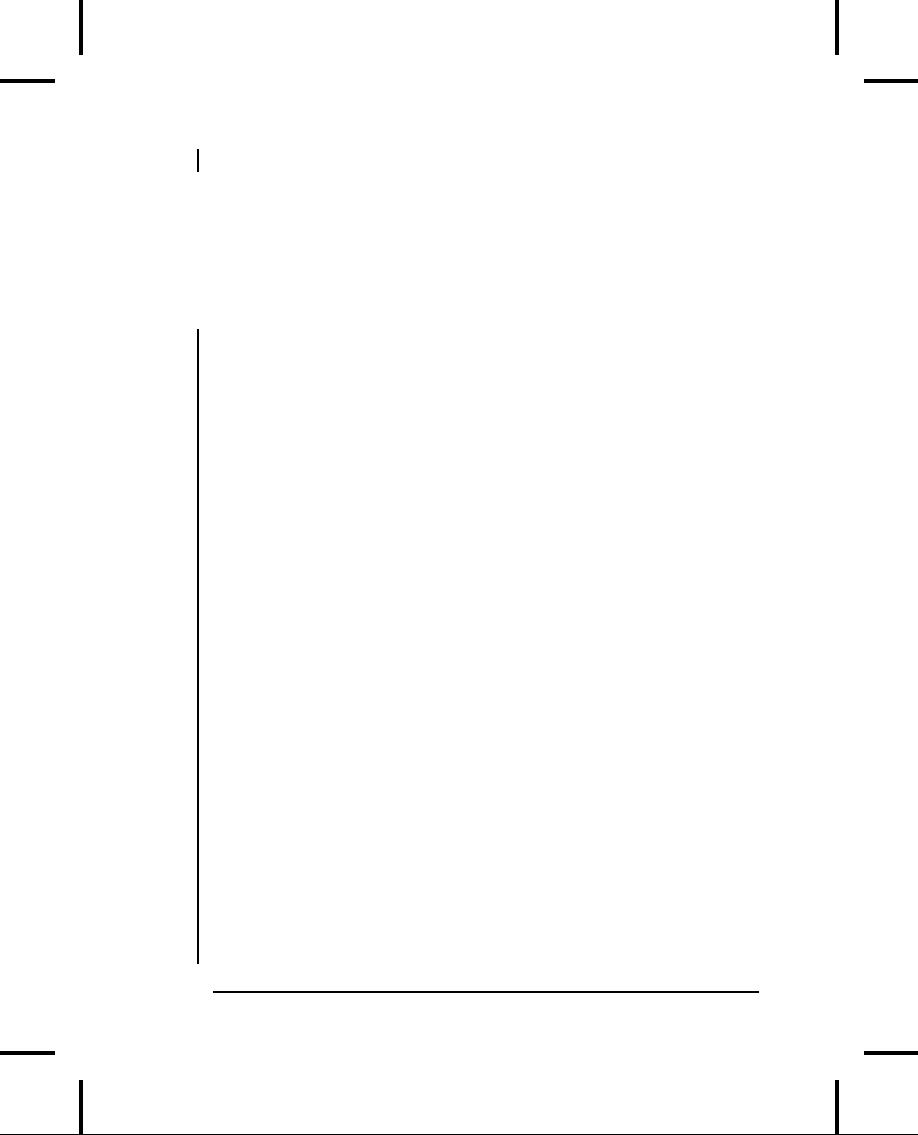
(1
<< i)
produces
a one in each successive bit
position; in binary: 00000001,
00000010,
etc. If this bit is bitwise
anded with
val
and
the result is
nonzero,
it means there was a one in
that position in val.
Finally,
the function is used in the
example that shows the
bit-
manipulation
operators:
//:
C03:Bitwise.cpp
//{L}
printBinary
//
Demonstration of bit
manipulation
#include
"printBinary.h"
#include
<iostream>
using
namespace std;
//
A macro to save
typing:
#define
PR(STR, EXPR) \
cout
<< STR; printBinary(EXPR); cout
<< endl;
int
main() {
unsigned
int getval;
unsigned
char a, b;
cout
<< "Enter a number between 0
and 255: ";
cin
>> getval; a = getval;
PR("a
in binary: ", a);
cout
<< "Enter a number between 0
and 255: ";
cin
>> getval; b = getval;
PR("b
in binary: ", b);
PR("a
| b = ", a | b);
PR("a
& b = ", a & b);
PR("a
^ b = ", a ^ b);
PR("~a
= ", ~a);
PR("~b
= ", ~b);
//
An interesting bit
pattern:
unsigned
char c = 0x5A;
PR("c
in binary: ", c);
a
|= c;
PR("a
|= c; a = ", a);
b
&= c;
PR("b
&= c; b = ", b);
b
^= a;
PR("b
^= a; b = ", b);
}
///:~
174
Thinking
in C++
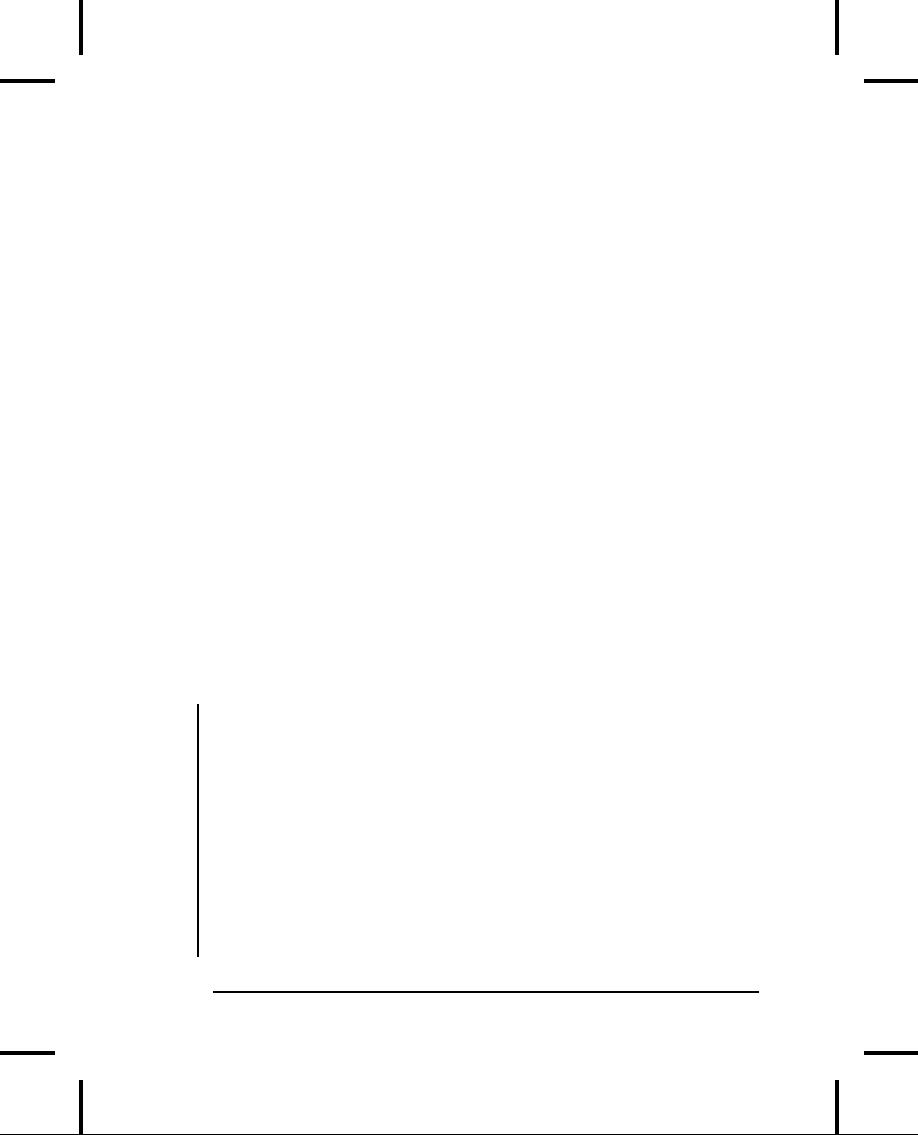
Once
again, a preprocessor macro is
used to save typing. It
prints
the
string of your choice, then the
binary representation of an
expression,
then a newline.
In
main(
),
the variables are unsigned
This
is because, in general,
.
you
don't want signs when you are working
with bytes. An int
must
be used instead of a char
for
getval
because
the "cin
>>"
statement
will otherwise treat the
first digit as a character.
By
assigning
getval
to
a
and
b,
the value is converted to a
single byte
(by
truncating it).
The
<<
and
>>
provide
bit-shifting behavior, but when they
shift
bits
off the end of the number,
those bits are lost
(it's commonly
said
that they fall into the mythical
bit
bucket, a place
where
discarded
bits end up, presumably so they
can be reused...). When
manipulating
bits you can also perform
rotation, which
means that
the
bits that fall off one end
are inserted back at the
other end, as if
they're
being rotated around a loop.
Even though most
computer
processors
provide a machine-level rotate
command (so you'll
see
it
in the assembly language for
that processor), there is no
direct
support
for "rotate" in C or C++. Presumably
the designers of C
felt
justified
in leaving "rotate" off (aiming, as they
said, for a minimal
language)
because you can build your own rotate
command. For
example,
here are functions to
perform left and right
rotations:
//:
C03:Rotation.cpp {O}
//
Perform left and right
rotations
unsigned
char rol(unsigned char val)
{
int
highbit;
if(val
& 0x80) // 0x80 is the
high bit only
highbit
= 1;
else
highbit
= 0;
//
Left shift (bottom bit
becomes 0):
val
<<= 1;
//
Rotate the high bit
onto the bottom:
val
|= highbit;
return
val;
3:
The C in C++
175
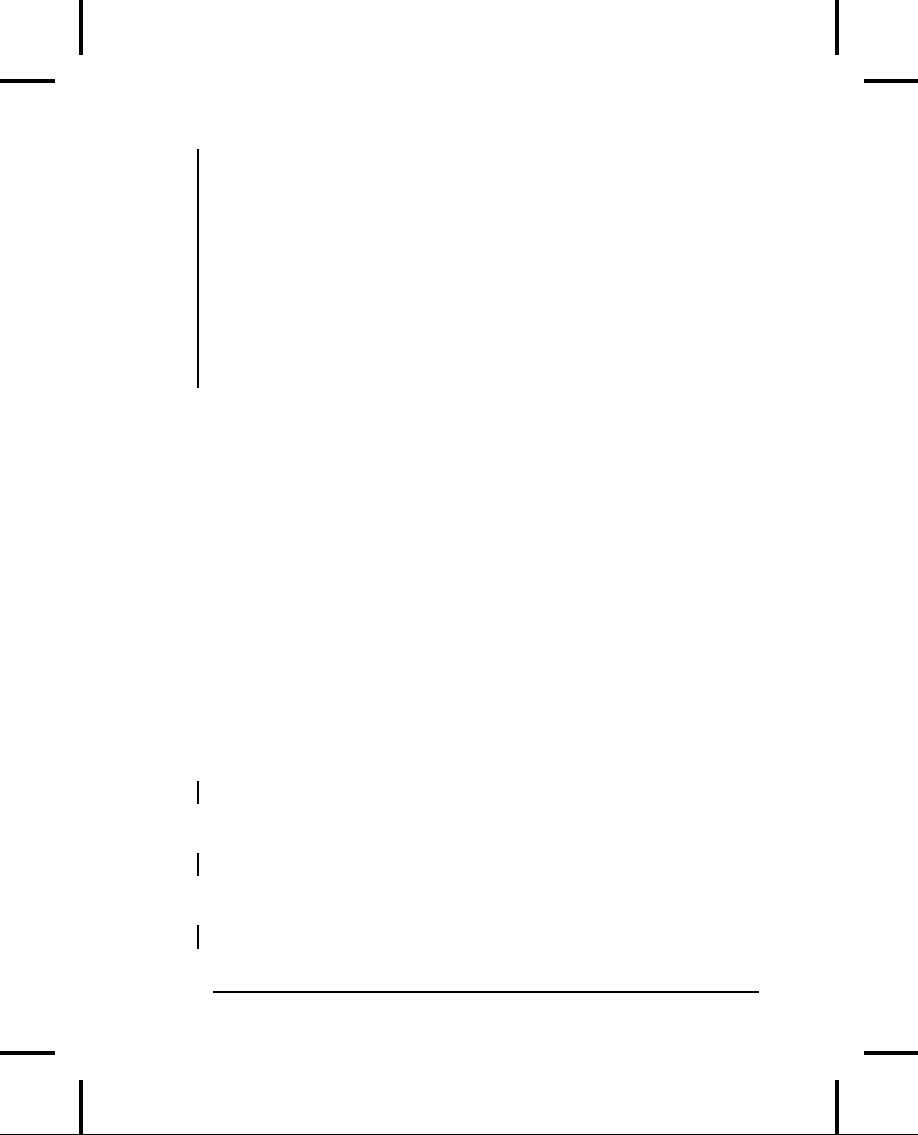
}
unsigned
char ror(unsigned char val)
{
int
lowbit;
if(val
& 1) // Check the low
bit
lowbit
= 1;
else
lowbit
= 0;
val
>>= 1; // Right shift by
one position
//
Rotate the low bit
onto the top:
val
|= (lowbit << 7);
return
val;
}
///:~
Try
using these functions in
Bitwise.cpp
Notice
the definitions (or
.
at
least declarations) of rol(
) and
ror(
) must
be seen by the
compiler
in Bitwise.cppbefore
the functions are
used.
The
bitwise functions are
generally extremely efficient to
use
because
they translate directly into assembly
language statements.
Sometimes
a single C or C++ statement will generate
a single line
of
assembly code.
Unary
operators
Bitwise
not
isn't
the only operator that takes
a single argument. Its
companion,
the logical
not (!),
will take a true
value
and produce a
false
value.
The unary minus (-)
and unary plus (+)
are the same
operators
as binary minus and plus; the
compiler figures out which
usage
is intended by the way you write the
expression. For
instance,
the statement
x
= -a;
has
an obvious meaning. The
compiler can figure
out:
x
= a * -b;
but
the reader might get
confused, so it is safer to
say:
x
= a * (-b);
176
Thinking
in C++
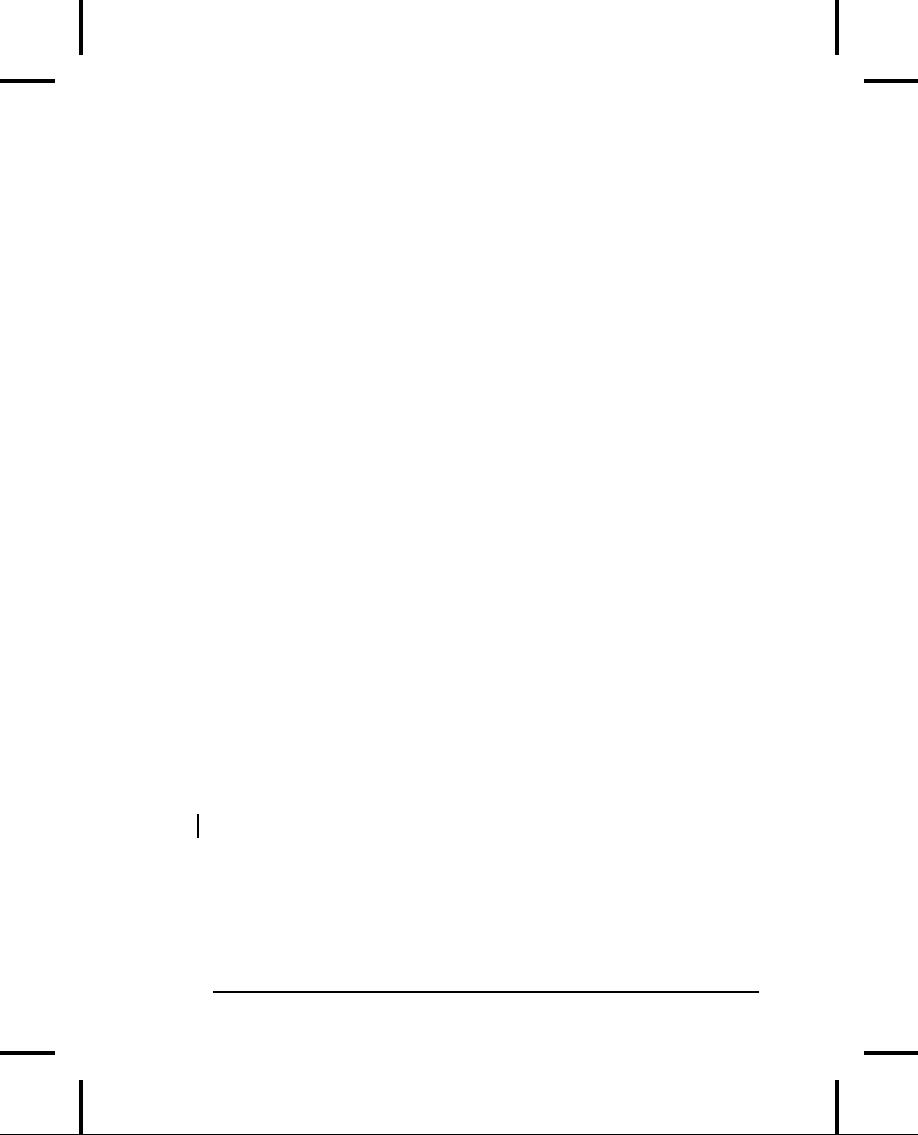
The
unary minus produces the negative of
the value. Unary plus
provides
symmetry with unary minus, although it
doesn't actually
do
anything.
The
increment and decrement operators
(++
and
--)
were
introduced
earlier in this chapter.
These are the only
operators
other
than those involving assignment that
have side effects.
These
operators
increase or decrease the
variable by one unit,
although
"unit"
can have different meanings
according to the data type
this
is
especially true with pointers.
The
last unary operators are the
address-of (&),
dereference (*
and
-
>),
and cast operators in C and C++, and
new
and
delete
in
C++.
Address-of
and dereference are used with
pointers, described in
this
chapter. Casting is described
later in this chapter, and
new
and
delete
are
introduced in Chapter 4.
The
ternary operator
The
ternary if-else
is
unusual because it has three
operands. It is
truly
an operator because it produces a
value, unlike the
ordinary
if-else
statement.
It consists of three expressions: if
the first
expression
(followed by a ?)
evaluates to true,
the expression
following
the ?
is
evaluated and its result
becomes the value
produced
by the operator. If the
first expression is false,
the third
expression
(following a :)
is executed and its result
becomes the
value
produced by the
operator.
The
conditional operator can be
used for its side effects or
for the
value
it produces. Here's a code
fragment that demonstrates
both:
a
= --b ? b : (b = -99);
Here,
the conditional produces the
rvalue. a
is
assigned to the value
of
b
if
the result of decrementing
b
is
nonzero. If b
became
zero, a
and
b
are
both assigned to -99.
b
is
always decremented, but it is
assigned
to -99 only if the decrement
causes b
to
become 0. A
3:
The C in C++
177

similar
statement can be used without
the "a
="
just for its side
effects:
--b
? b : (b = -99);
Here
the second B is superfluous,
since the value produced by
the
operator
is unused. An expression is required
between the ?
and
:.
In
this case, the expression
could simply be a constant that
might
make
the code run a bit
faster.
The
comma operator
The
comma is not restricted to separating
variable names in
multiple
definitions, such as
int
i, j, k;
Of
course, it's also used in
function argument lists. However, it
can
also
be used as an operator to separate
expressions in this case
it
produces
only the value of the last
expression. All the rest of
the
expressions
in the comma-separated list
are evaluated only for
their
side
effects. This example
increments a list of variables and
uses the
last
one as the rvalue:
//:
C03:CommaOperator.cpp
#include
<iostream>
using
namespace std;
int
main() {
int
a = 0, b = 1, c = 2, d = 3, e = 4;
a
= (b++, c++, d++,
e++);
cout
<< "a = " << a << endl;
//
The parentheses are critical
here. Without
//
them, the statement will
evaluate to:
(a
= b++), c++, d++,
e++;
cout
<< "a = " << a << endl;
}
///:~
In
general, it's best to avoid
using the comma as anything
other
than
a separator, since people
are not used to seeing it as
an
operator.
178
Thinking
in C++

Common
pitfalls when using operators
As
illustrated above, one of
the pitfalls when using
operators is
trying
to get away without parentheses when you
are even the
least
bit
uncertain about how an expression will
evaluate (consult your
local
C manual for the order of expression
evaluation).
Another
extremely common error looks
like this:
//:
C03:Pitfall.cpp
//
Operator mistakes
int
main() {
int
a = 1, b = 1;
while(a
= b) {
//
....
}
}
///:~
The
statement a
= b will
always evaluate to true when b is
non-
zero.
The variable a
is
assigned to the value of
b,
and the value of b
is
also produced by the
operator =.
In general, you want to use
the
equivalence
operator ==
inside
a conditional statement, not
assignment.
This one bites a lot of
programmers (however,
some
compilers
will point out the problem to you, which
is helpful).
A
similar problem is using
bitwise and
and or
instead of
their
logical
counterparts. Bitwise and
and or
use
one of the characters
(&
or
|),
while logical and
and or
use two
(&&
and
||).
Just as with =
and
==,
it's easy to just type one
character instead of two. A
useful
mnemonic
device is to observe that
"Bits are smaller, so they
don't
need
as many characters in their
operators."
Casting
operators
The
word cast
is used in
the sense of "casting into a mold."
The
compiler
will automatically change one type of
data into another if
it
makes sense. For instance,
if you assign an integral value to
a
floating-point
variable, the compiler will
secretly call a function
(or
more
probably, insert code) to
convert the int
to
a float.
Casting
3:
The C in C++
179

allows
you to make this type conversion
explicit, or to force it when
it
wouldn't normally happen.
To
perform a cast, put the
desired data type (including
all
modifiers)
inside parentheses to the
left of the value. This
value can
be
a variable, a constant, the
value produced by an expression,
or
the
return value of a function. Here's an
example:
//:
C03:SimpleCast.cpp
int
main() {
int
b = 200;
unsigned
long a = (unsigned long
int)b;
}
///:~
Casting
is powerful, but it can cause
headaches because in
some
situations
it forces the compiler to
treat data as if it were
(for
instance)
larger than it really is, so it will
occupy more space in
memory;
this can trample over
other data. This usually
occurs
when
casting pointers, not when making
simple casts like the
one
shown
above.
C++
has an additional casting
syntax, which follows the
function
call
syntax. This syntax puts
the parentheses around the
argument,
like
a function call, rather than
around the data
type:
//:
C03:FunctionCallCast.cpp
int
main() {
float
a = float(200);
//
This is equivalent
to:
float
b = (float)200;
}
///:~
Of
course in the case above you
wouldn't really need a cast;
you
could
just say 200f
(in
effect, that's typically what
the compiler will
do
for the above expression).
Casts are generally used
instead with
variables,
rather than constants.
180
Thinking
in C++
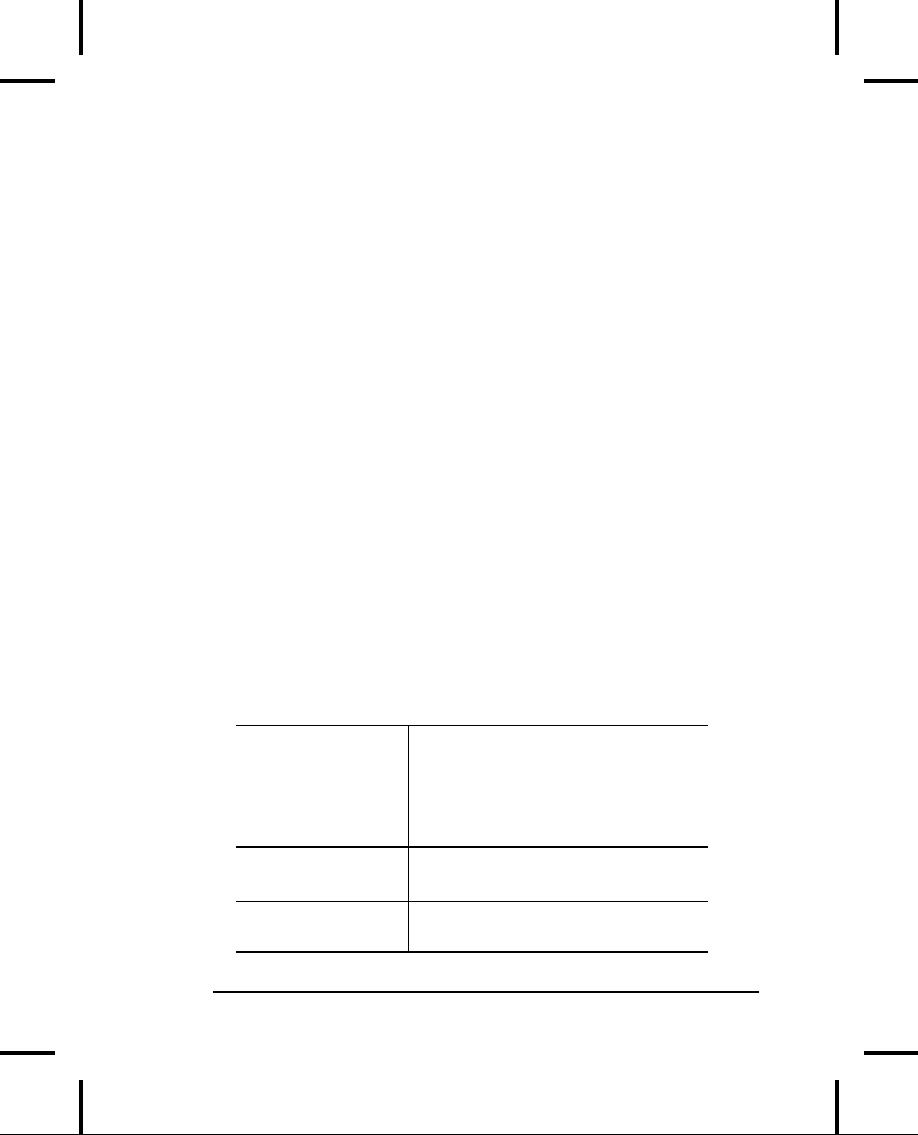
C++
explicit casts
Casts
should be used carefully,
because what you are
actually
doing
is saying to the compiler
"Forget type checking treat it
as
this
other type instead." That is,
you're introducing a hole in
the
C++
type system and preventing the
compiler from telling you
that
you're
doing something wrong with a type.
What's worse, the
compiler
believes you implicitly and doesn't
perform any other
checking
to catch errors. Once you
start casting, you open
yourself
up
for all kinds of problems. In fact, any
program that uses a lot
of
casts
should be viewed with suspicion, no
matter how much you
are
told it simply "must" be done that way. In
general, casts should
be
few and isolated to the solution of very
specific problems.
Once
you understand this and are
presented with a buggy
program,
your first inclination may be to look for
casts as culprits.
But
how do you locate C-style casts? They are
simply type names
inside
of parentheses, and if you start hunting for
such things you'll
discover
that it's often hard to
distinguish them from the rest
of
your
code.
Standard
C++ includes an explicit cast
syntax that can be used
to
completely
replace the old C-style
casts (of course, C-style
casts
cannot
be outlawed without breaking code, but
compiler writers
could
easily flag old-style casts
for you). The explicit cast
syntax is
such
that you can easily find
them, as you can see by
their names:
static_cast
For
"well-behaved" and
"reasonably
well-behaved" casts,
including
things you might now
do
without a cast (such as an
automatic
type conversion).
const_cast
To
cast away const
and/or
volatile
.
reinterpret_cast
To
cast to a completely
different
meaning.
The key is that you'll
3:
The C in C++
181
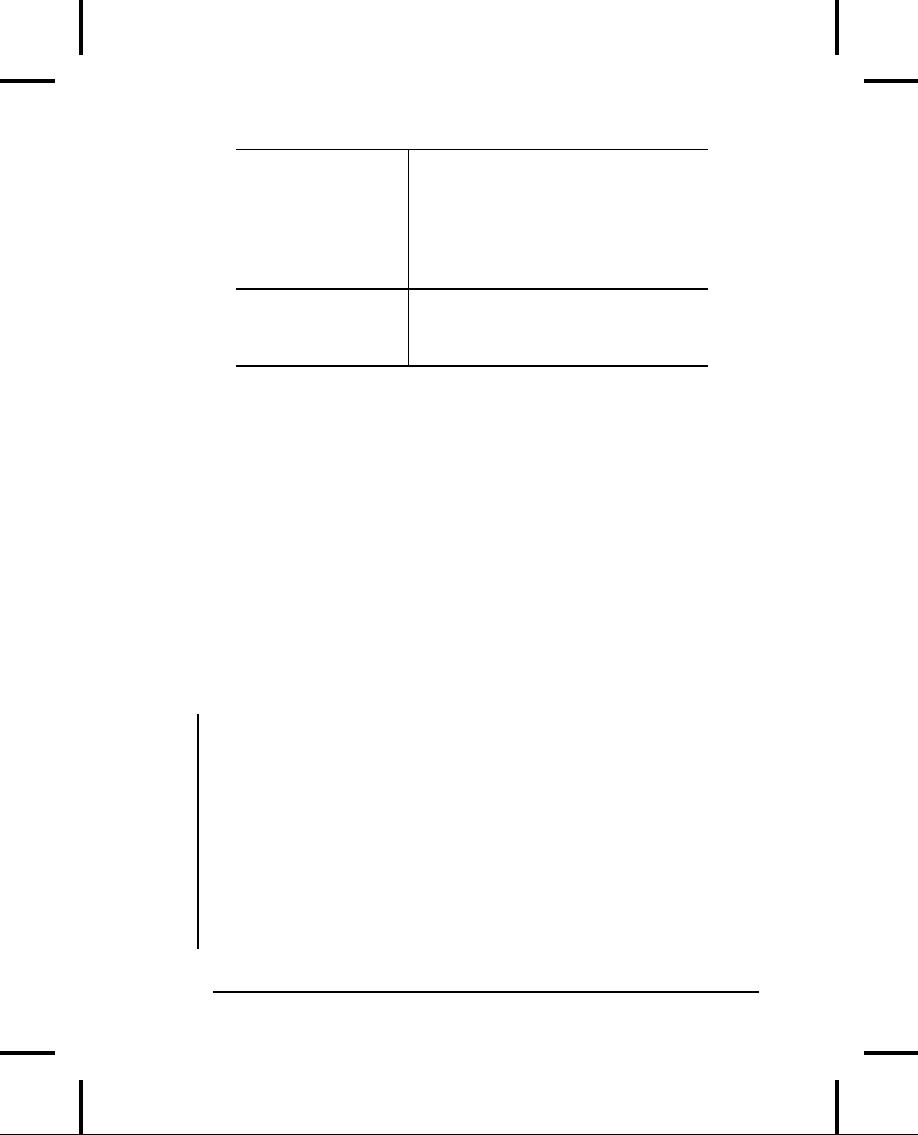
need
to cast back to the
original
type
to use it safely. The type
you
cast
to is typically used only for
bit
twiddling or some other
mysterious
purpose. This is the
most
dangerous of all the
casts.
dynamic_cast
For
type-safe downcasting
(this
cast
will be described in Chapter
15).
The
first three explicit casts
will be described more completely
in
the
following sections, while the last
one can be demonstrated
only
after
you've learned more, in Chapter
15.
static_cast
A
static_castis
used for all conversions that
are well-defined.
These
include
"safe" conversions that the
compiler would allow you to do
without
a cast and less-safe conversions
that are nonetheless
well-
defined.
The types of conversions
covered by static_castinclude
typical
castless conversions, narrowing
(information-losing)
conversions,
forcing a conversion from a void*,
implicit type
conversions,
and static navigation of class
hierarchies (since you
haven't
seen classes and inheritance
yet, this last topic will
be
delayed
until Chapter 15):
//:
C03:static_cast.cpp
void
func(int) {}
int
main() {
int
i = 0x7fff; // Max pos value
= 32767
long
l;
float
f;
//
(1) Typical castless
conversions:
l
= i;
f
= i;
//
Also works:
l
= static_cast<long>(i);
f
= static_cast<float>(i);
182
Thinking
in C++

//
(2) Narrowing
conversions:
i
= l; // May lose
digits
i
= f; // May lose info
//
Says "I know," eliminates
warnings:
i
= static_cast<int>(l);
i
= static_cast<int>(f);
char
c = static_cast<char>(i);
//
(3) Forcing a conversion
from void* :
void*
vp = &i;
//
Old way produces a dangerous
conversion:
float*
fp = (float*)vp;
//
The new way is equally
dangerous:
fp
= static_cast<float*>(vp);
//
(4) Implicit type
conversions, normally
//
performed by the
compiler:
double
d = 0.0;
int
x = d; // Automatic type
conversion
x
= static_cast<int>(d); // More
explicit
func(d);
// Automatic type
conversion
func(static_cast<int>(d));
// More explicit
}
///:~
In
Section (1), you see the
kinds of conversions you're used
to
doing
in C, with or without a cast. Promoting from an
int
to
a long
or
float
is
not a problem because the
latter can always hold
every
value
that an int
can
contain. Although it's unnecessary, you
can
use
static_castto
highlight these
promotions.
Converting
back the other way is shown in
(2). Here, you can
lose
data
because an int
is
not as "wide" as a long
or
a float;
it won't
hold
numbers of the same size.
Thus these are called narrowing
conversions. The
compiler will still perform
these, but will often give
you
a warning. You can eliminate
this warning and indicate
that
you
really did mean it using a
cast.
Assigning
from a void*
is
not allowed without a cast in C++
(unlike
C),
as seen in (3). This is
dangerous and requires that
programmers
3:
The C in C++
183

know
what they're doing. The
static_cast
at
least, is easier to
locate
,
than
the old standard cast when
you're hunting for bugs.
Section
(4) of the program shows
the kinds of implicit
type
conversions
that are normally performed
automatically by the
compiler.
These are automatic and
require no casting, but
again
static_casthighlights
the action in case you want to
make it clear
what's
happening or hunt for it later.
const_cast
If
you want to convert from a const
to
a nonconst
or
from a volatile
to
a nonvolatile
you
use const_cast
This
is the only
conversion
,
.
allowed
with const_cast
if
any other conversion is involved it
must
;
be
done using a separate
expression or you'll get a
compile-time
error.
//:
C03:const_cast.cpp
int
main() {
const
int i = 0;
int*
j = (int*)&i; // Deprecated
form
j
= const_cast<int*>(&i); //
Preferred
//
Can't do simultaneous additional
casting:
//!
long* l = const_cast<long*>(&i); //
Error
volatile
int k = 0;
int*
u = const_cast<int*>(&k);
}
///:~
If
you take the address of a
const
object,
you produce a pointer to a
const,
and this cannot be assigned to a
nonconst
pointer
without a
cast.
The old-style cast will
accomplish this, but the
const_castis
the
appropriate one to use. The
same holds true for volatile
.
reinterpret_cast
This
is the least safe of the
casting mechanisms, and the
one most
likely
to produce bugs. A reinterpret_cast
pretends
that an object is
just
a bit pattern that can be
treated (for some dark
purpose) as if it
were
an entirely different type of object.
This is the low-level
bit
twiddling
that C is notorious for. You'll virtually
always need to
184
Thinking
in C++

reinterpret_cast
back
to the original type (or
otherwise treat the
variable
as its original type) before
doing anything else with
it.
//:
C03:reinterpret_cast.cpp
#include
<iostream>
using
namespace std;
const
int sz = 100;
struct
X { int a[sz]; };
void
print(X* x) {
for(int
i = 0; i < sz; i++)
cout
<< x->a[i] << ' ';
cout
<< endl << "--------------------" <<
endl;
}
int
main() {
X
x;
print(&x);
int*
xp = reinterpret_cast<int*>(&x);
for(int*
i = xp; i < xp + sz;
i++)
*i
= 0;
//
Can't use xp as an X* at this
point
//
unless you cast it
back:
print(reinterpret_cast<X*>(xp));
//
In this example, you can
also just use
//
the original
identifier:
print(&x);
}
///:~
In
this simple example,
struct
Xjust
contains an array of int,
but
when
you create one on the stack
as in X
x,
the values of each of
the
ints
are garbage (this is shown
using the print(
)function
to display
the
contents of the struct).
To initialize them, the
address of the X
is
taken
and cast to an int
pointer,
which is then walked through the
array
to set each int
to
zero. Notice how the upper
bound for i
is
calculated
by "adding" sz
to
xp;
the compiler knows that you
actually
want sz
pointer
locations greater than xp
and
it does the
correct
pointer arithmetic for you.
The
idea of reinterpret_cast
that
when you use it, what you get
is
is
so
foreign that it cannot be
used for the type's original
purpose
3:
The C in C++
185

unless
you cast it back. Here, we
see the cast back to an
X*
in
the
call
to print, but of course since you
still have the original
identifier
you
can also use that. But
the xp
is
only useful as an int*,
which is
truly
a "reinterpretation" of the original
X.
A
reinterpret_cast
often
indicates inadvisable and/or
nonportable
programming,
but it's available when you decide you
have to use
it.
sizeof
an operator by itself
The
sizeof
operator
stands alone because it
satisfies an unusual
need.
sizeof
gives
you information about the amount of
memory
allocated
for data items. As described
earlier in this chapter,
sizeof
tells
you the number of bytes used by any
particular variable. It
can
also
give the size of a data type
(with no variable name):
//:
C03:sizeof.cpp
#include
<iostream>
using
namespace std;
int
main() {
cout
<< "sizeof(double) = " <<
sizeof(double);
cout
<< ", sizeof(char) = " <<
sizeof(char);
}
///:~
By
definition, the sizeof
any
type of char
(signed,
unsignedor
plain)
is always one, regardless of
whether the underlying
storage
for
a char
is
actually one byte. For all
other types, the result is
the
size
in bytes.
Note
that sizeof
is
an operator, not a function. If you apply it to
a
type,
it must be used with the parenthesized
form shown above,
but
if you apply it to a variable you can use
it without parentheses:
//:
C03:sizeofOperator.cpp
int
main() {
int
x;
int
i = sizeof x;
}
///:~
186
Thinking
in C++
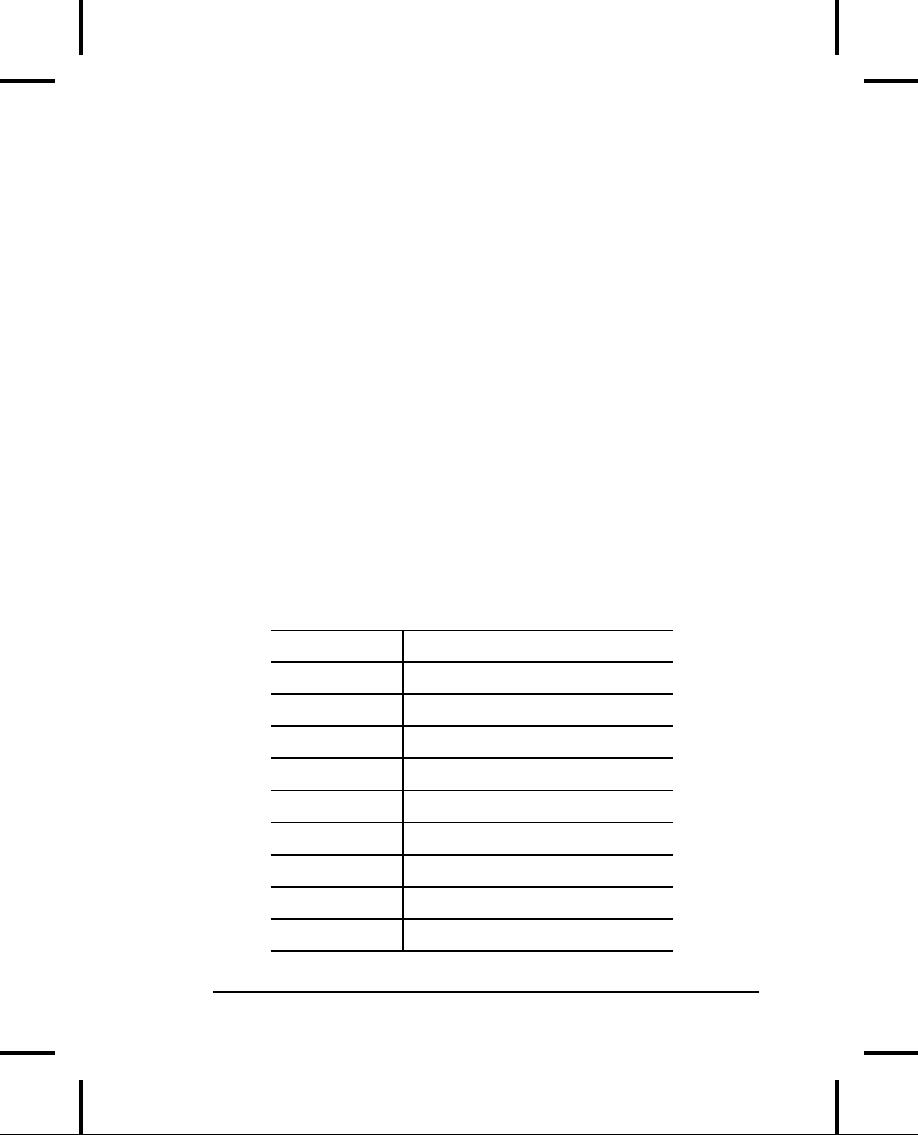
sizeof
can
also give you the sizes of
user-defined data types.
This is
used
later in the book.
The
asm keyword
This
is an escape mechanism that
allows you to write assembly
code
for your hardware within a C++ program.
Often you're able
to
reference C++ variables within the
assembly code, which
means
you
can easily communicate with your C++
code and limit the
assembly
code to that necessary for
efficiency tuning or to use
special
processor instructions. The
exact syntax that you must
use
when
writing the assembly language is
compiler-dependent and
can
be discovered in your compiler's
documentation.
Explicit
operators
These
are keywords for bitwise and
logical operators.
Non-U.S.
programmers
without keyboard characters like
&,
|,
^,
and so on,
were
forced to use C's horrible
trigraphs, which
were not only
annoying
to type, but obscure when reading.
This is repaired in
C++
with additional keywords:
Keyword
Meaning
and
&&
(logical
and)
or
||
(logical
or)
not
!
(logical
NOT)
not_eq
!=
(logical
not-equivalent)
bitand
&
(bitwise
and)
and_eq
&=
(bitwise
and-assignment)
bitor
|
(bitwise
or)
or_eq
|=
(bitwise
or-assignment)
xor
^
(bitwise
exclusive-or)
3:
The C in C++
187
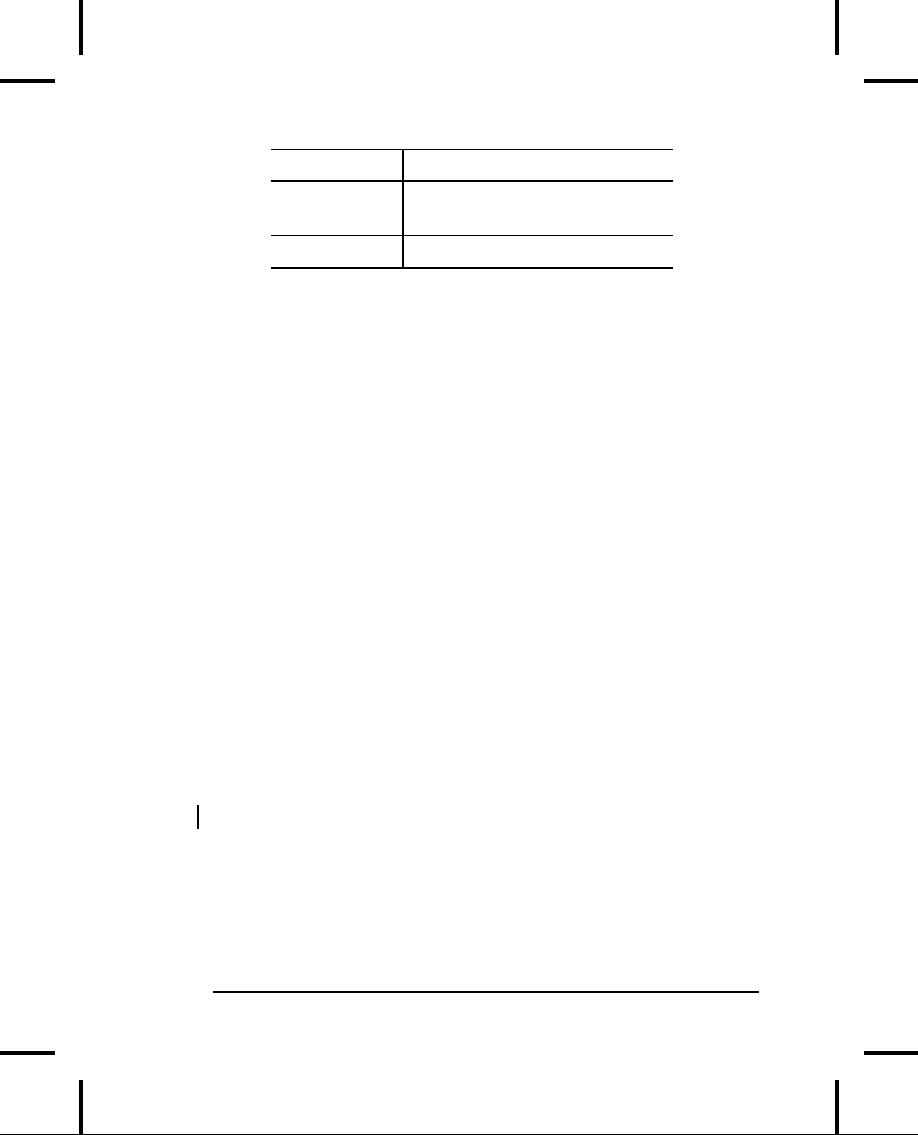
Keyword
Meaning
xor_eq
^=
(bitwise
exclusive-or-
assignment)
compl
~
(ones
complement)
If
your compiler complies with Standard
C++, it will support
these
keywords.
Composite
type creation
The
fundamental data types and
their variations are
essential, but
rather
primitive. C and C++ provide tools
that allow you to
compose
more sophisticated data
types from the fundamental
data
types.
As you'll see, the most
important of these is struct,
which is
the
foundation for class
in
C++. However, the simplest way
to
create
more sophisticated types is simply to
alias a name to
another
name
via typedef.
Aliasing
names with typedef
This
keyword promises more than it delivers:
typedef
suggests
"type
definition" when "alias" would probably
have been a more
accurate
description, since that's what it
really does. The syntax
is:
typedef
existing-type-description
alias-name
People
often use typedef
when
data types get slightly
complicated,
just
to prevent extra keystrokes.
Here is a commonly-used typedef:
typedef
unsigned long ulong;
Now
if you say ulong
the
compiler knows that you mean
unsigned
long.
You might think that this could as
easily be accomplished
using
preprocessor substitution, but there
are key situations in
which
the compiler must be aware
that you're treating a name
as if
it
were a type, so typedef
is
essential.
188
Thinking
in C++
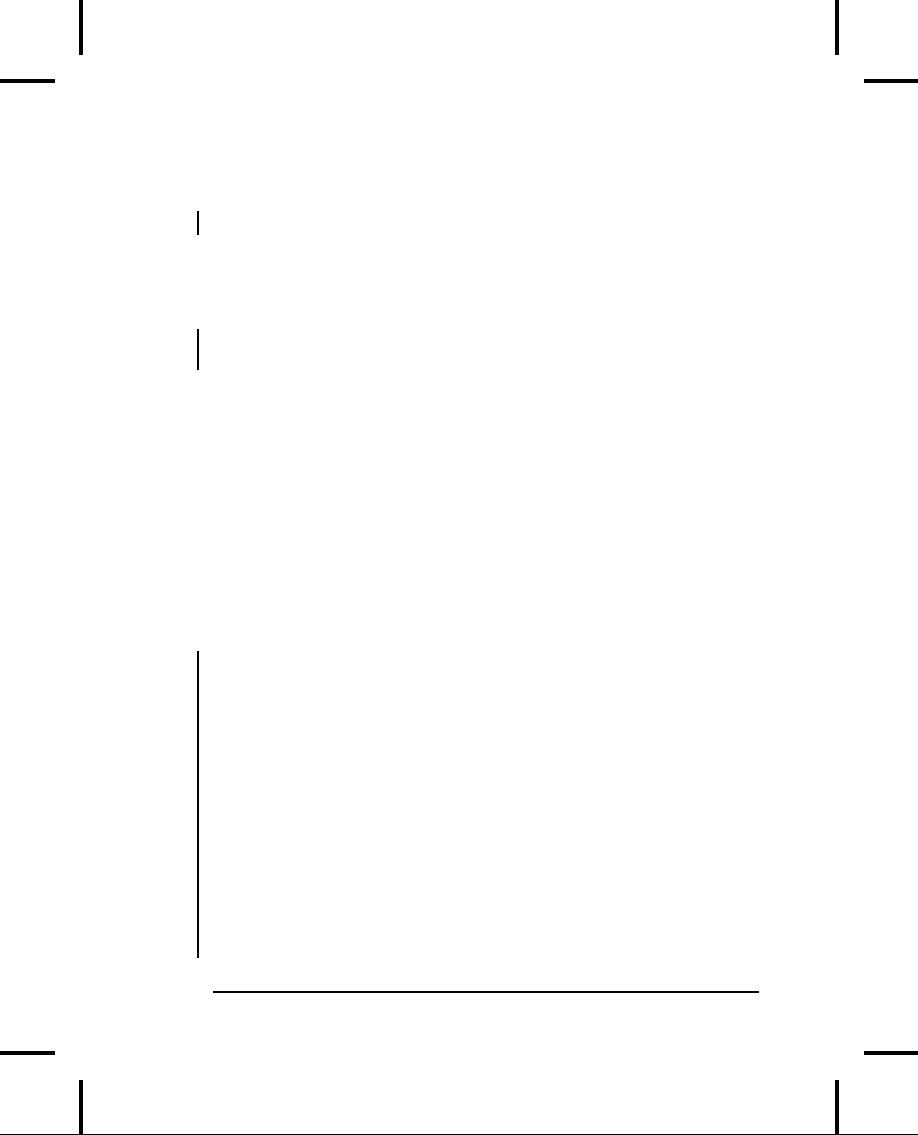
One
place where typedef
comes
in handy is for pointer types. As
previously
mentioned, if you say:
int*
x, y;
This
actually produces an int*
which
is x
and
an int
(not
an int*)
which
is y.
That is, the `*'
binds to the right, not the
left. However,
if
you use a typedef:
typedef
int* IntPtr;
IntPtr
x, y;
Then
both x
and
y
are
of type int*.
You
can argue that it's
more explicit and therefore
more readable to
avoid
typedefs
for primitive types, and indeed
programs rapidly
become
difficult to read when many typedefs
are used. However,
typedefs
become especially important in C when
used with struct.
Combining
variables with struct
A
struct
is
a way to collect a group of variables into a
structure.
Once
you create a struct,
then you can make many instances of
this
"new"
type of variable you've invented. For
example:
//:
C03:SimpleStruct.cpp
struct
Structure1 {
char
c;
int
i;
float
f;
double
d;
};
int
main() {
struct
Structure1 s1, s2;
s1.c
= 'a'; // Select an element
using a '.'
s1.i
= 1;
s1.f
= 3.14;
s1.d
= 0.00093;
s2.c
= 'a';
s2.i
= 1;
s2.f
= 3.14;
3:
The C in C++
189
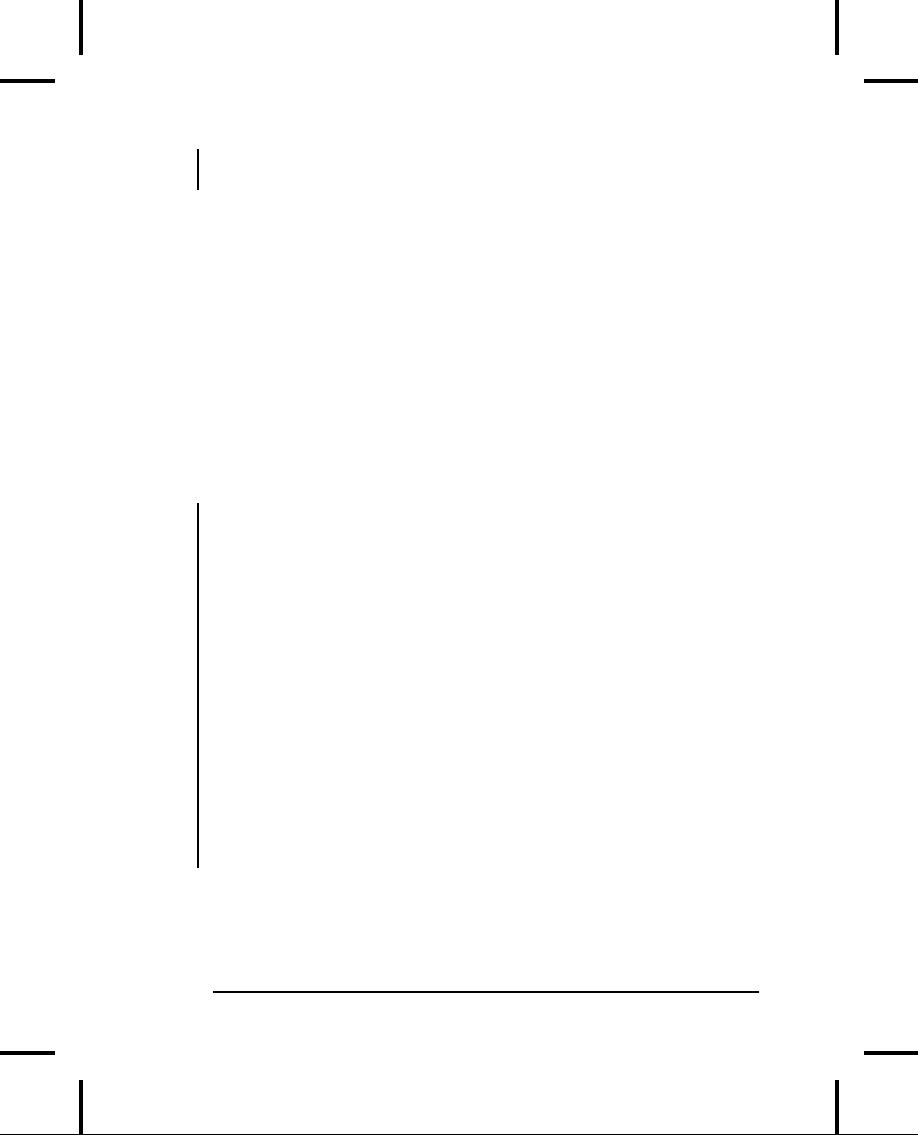
s2.d
= 0.00093;
}
///:~
The
struct
declaration
must end with a semicolon. In main(
),
two
instances
of Structure1are
created: s1
and
s2.
Each of these has
their
own separate versions of c,
i,
f,
and d.
So s1
and
s2
represent
clumps
of completely independent variables. To
select one of the
elements
within s1
or
s2,
you use a `.',
syntax you've seen in
the
previous
chapter when using C++ class
objects
since classes
evolved
from structs,
this is where that syntax
arose from.
One
thing you'll notice is the awkwardness of
the use of Structure1
(as
it turns out, this is only required by C,
not C++). In C, you can't
just
say Structure1when
you're defining variables, you must
say
struct
Structure1This is
where typedef
becomes
especially handy
.
in
C:
//:
C03:SimpleStruct2.cpp
//
Using typedef with
struct
typedef
struct {
char
c;
int
i;
float
f;
double
d;
}
Structure2;
int
main() {
Structure2
s1, s2;
s1.c
= 'a';
s1.i
= 1;
s1.f
= 3.14;
s1.d
= 0.00093;
s2.c
= 'a';
s2.i
= 1;
s2.f
= 3.14;
s2.d
= 0.00093;
}
///:~
By
using typedef
in
this way, you can pretend (in C; try
removing
the
typedef
for
C++) that Structure2is
a built-in type, like
int
or
float,
when you define s1
and
s2
(but
notice it only has data
190
Thinking
in C++
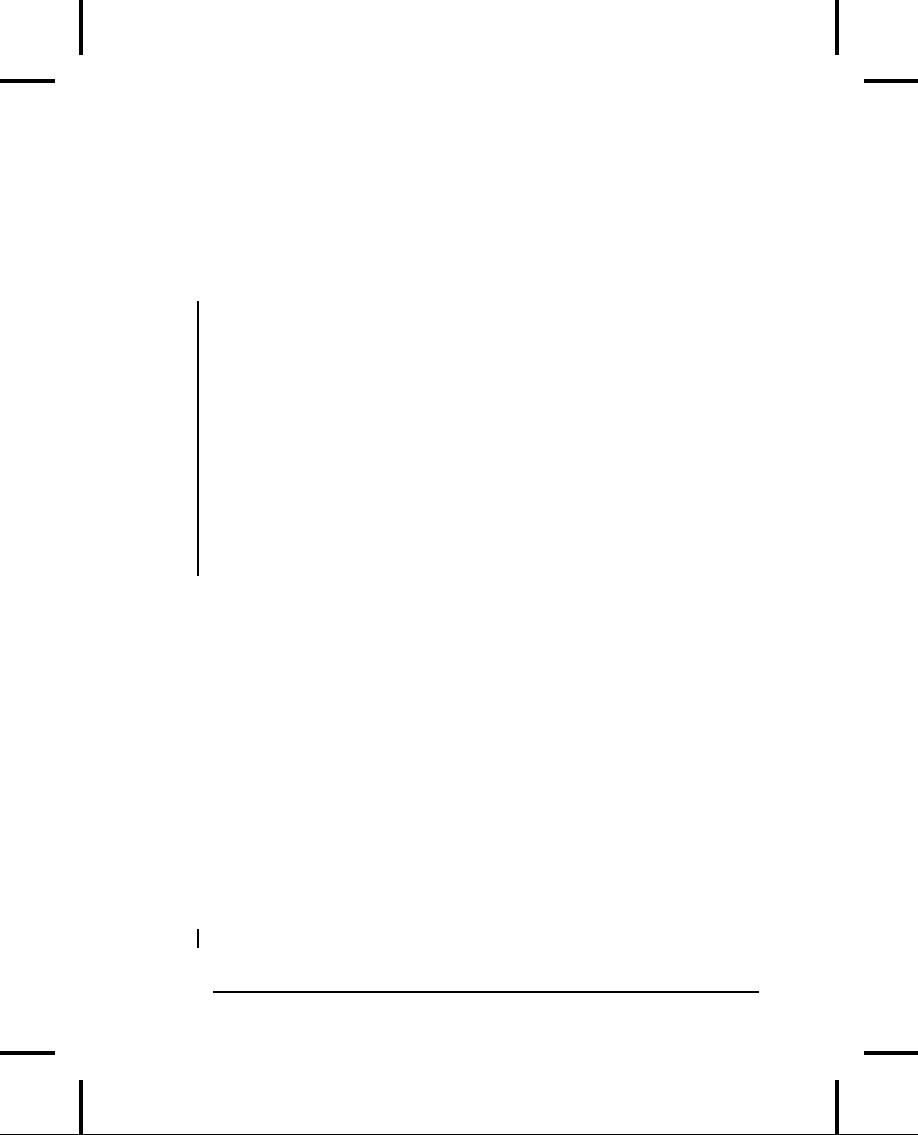
characteristics
and does not include behavior,
which is what we
get
with real objects in C++). You'll
notice that the struct
identifier
has
been left off at the
beginning, because the goal
is to create the
typedef.
However, there are times when you might
need to refer to
the
struct
during
its definition. In those
cases, you can
actually
repeat
the name of the struct
as
the struct
name
and as the typedef:
//:
C03:SelfReferential.cpp
//
Allowing a struct to refer to
itself
typedef
struct SelfReferential {
int
i;
SelfReferential*
sr; // Head spinning
yet?
}
SelfReferential;
int
main() {
SelfReferential
sr1, sr2;
sr1.sr
= &sr2;
sr2.sr
= &sr1;
sr1.i
= 47;
sr2.i
= 1024;
}
///:~
If
you look at this for awhile, you'll
see that sr1
and
sr2
point
to
each
other, as well as each holding a
piece of data.
Actually,
the struct
name
does not have to be the same
as the
typedef
name,
but it is usually done this way as it
tends to keep
things
simpler.
Pointers
and structs
In
the examples above, all the
structs
are manipulated as
objects.
However,
like any piece of storage, you
can take the address of
a
struct
object
(as seen in SelfReferential.cpp
above).
To select the
elements
of a particular struct
object,
you use a `.',
as seen above.
However,
if you have a pointer to a struct
object,
you must select
an
element of that object using
a different operator: the
`->'.
Here's
an
example:
//:
C03:SimpleStruct3.cpp
3:
The C in C++
191

//
Using pointers to
structs
typedef
struct Structure3 {
char
c;
int
i;
float
f;
double
d;
}
Structure3;
int
main() {
Structure3
s1, s2;
Structure3*
sp = &s1;
sp->c
= 'a';
sp->i
= 1;
sp->f
= 3.14;
sp->d
= 0.00093;
sp
= &s2; // Point to a different struct
object
sp->c
= 'a';
sp->i
= 1;
sp->f
= 3.14;
sp->d
= 0.00093;
}
///:~
In
main(
),
the struct
pointer
sp
is
initially pointing to s1,
and the
members
of s1
are
initialized by selecting them with the
`->'
(and
you
use this same operator in
order to read those
members). But
then
sp
is
pointed to s2,
and those variables are
initialized the same
way.
So you can see that another
benefit of pointers is that they
can
be
dynamically redirected to point to
different objects;
this
provides
more flexibility in your programming, as
you will learn.
For
now, that's all you need to know about
structs,
but you'll
become
much more comfortable with them (and
especially their
more
potent successors, classes)
as the book
progresses.
Clarifying
programs with enum
An
enumerated data type is a way of
attaching names to
numbers,
thereby
giving more meaning to
anyone reading the code.
The
enum
keyword
(from C) automatically enumerates any
list of
identifiers
you give it by assigning them values of
0, 1, 2, etc. You
can
declare enum
variables
(which are always represented
as
192
Thinking
in C++
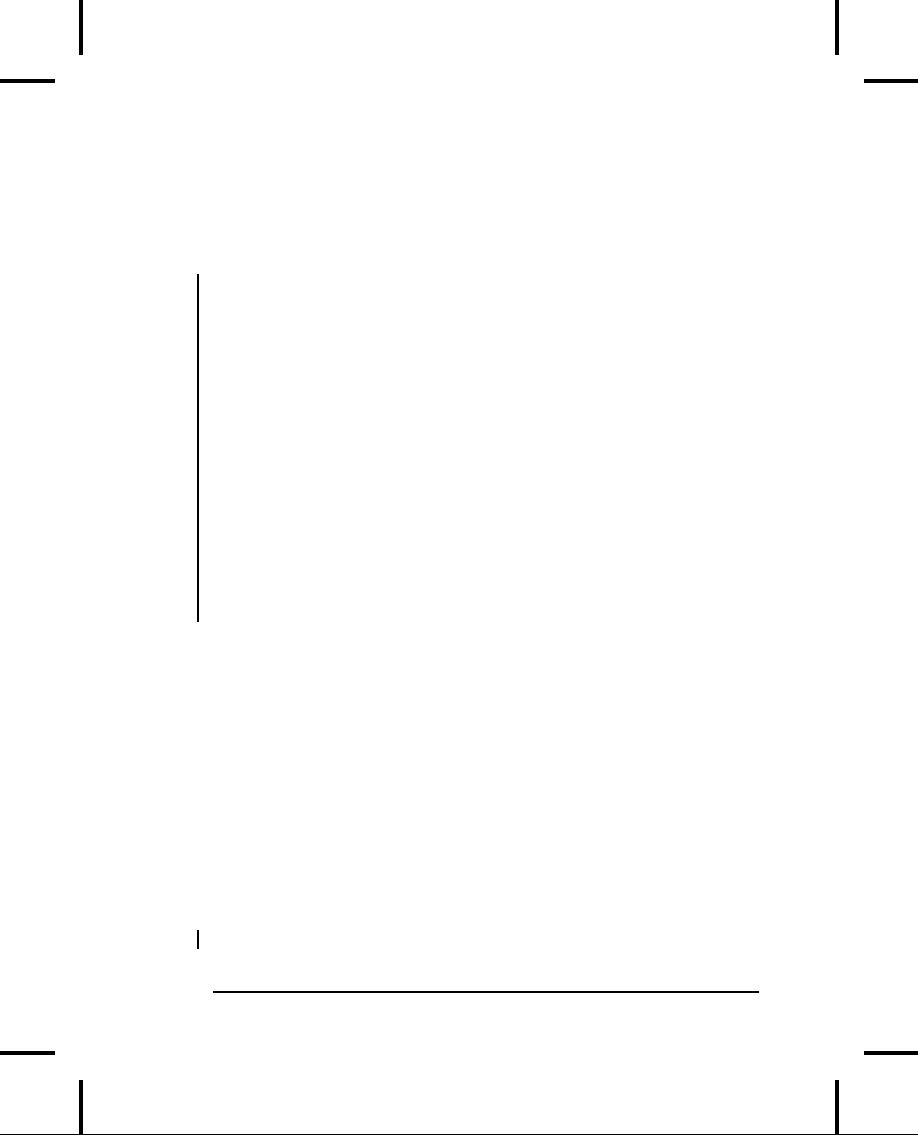
integral
values). The declaration of an
enum
looks
similar to a
struct
declaration.
An
enumerated data type is useful when you
want to keep track of
some
sort of feature:
//:
C03:Enum.cpp
//
Keeping track of
shapes
enum
ShapeType {
circle,
square,
rectangle
};
// Must end with a
semicolon like a
struct
int
main() {
ShapeType
shape = circle;
//
Activities here....
//
Now do something based on
what the shape
is:
switch(shape)
{
case
circle: /* circle stuff */
break;
case
square: /* square stuff */
break;
case
rectangle: /* rectangle stuff */
break;
}
}
///:~
shape
is
a variable of the ShapeTypeenumerated
data type, and its
value
is compared with the value in
the enumeration. Since
shape
is
really just an int,
however, it can be any value an
int
can
hold
(including
a negative number). You can
also compare an int
variable
with a value in the
enumeration.
You
should be aware that the
example above of switching on
type
turns
out to be a problematic way to program. C++
has a much
better
way to code this sort of
thing, the explanation of which
must
be
delayed until much later in the
book.
If
you don't like the way the
compiler assigns values, you
can do it
yourself,
like this:
enum
ShapeType {
3:
The C in C++
193
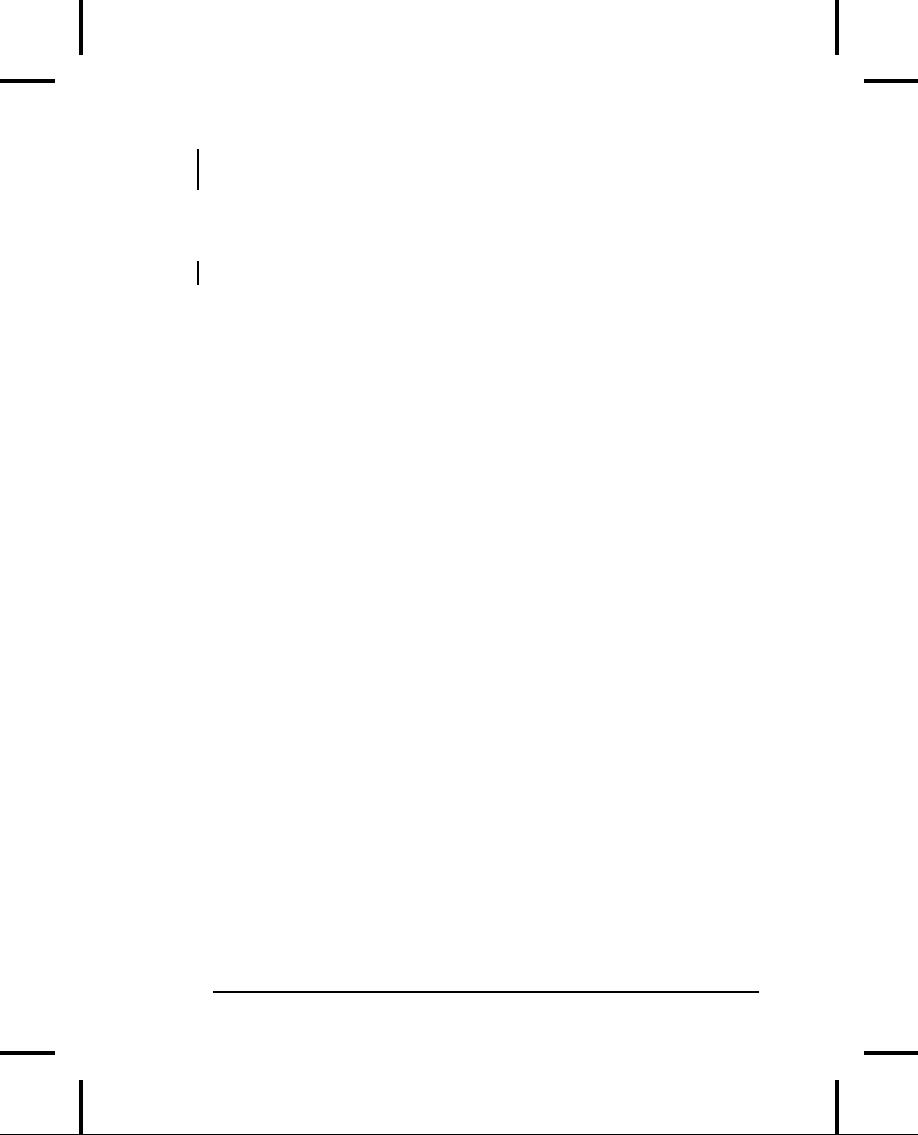
circle
= 10, square = 20, rectangle
= 50
};
If
you give values to some
names and not to others, the
compiler
will
use the next integral
value. For example,
enum
snap { crackle = 25, pop
};
The
compiler gives pop
the
value 26.
You
can see how much more
readable the code is when you
use
enumerated
data types. However, to some
degree this is still
an
attempt
(in C) to accomplish the things
that we can do with a class
in
C++, so you'll see enum
used
less in C++.
Type
checking for enumerations
C's
enumerations are fairly primitive, simply
associating integral
values
with names, but they provide no type
checking. In C++, as
you
may have come to expect by now,
the concept of type is
fundamental,
and this is true with enumerations. When you
create
a
named enumeration, you effectively
create a new type just as you
do
with a class: The name of your
enumeration becomes a
reserved
word
for the duration of that
translation unit.
In
addition, there's stricter type
checking for enumerations in C++
than
in C. You'll notice this in particular if
you have an instance of
an
enumeration color
called
a.
In C you can say a++,
but
in C++
you
can't. This is because
incrementing an enumeration is
performing
two type conversions, one of them legal
in C++ and one
of
them illegal. First, the
value of the enumeration is
implicitly cast
from
a color
to
an int,
then the value is incremented, then
the int
is
cast
back into a color.
In C++ this isn't allowed,
because color
is
a
distinct
type and not equivalent to an int.
This makes sense,
because
how do you know the increment of
blue
will
even be in the
list
of colors? If you want to increment a
color,
then it should be a
class
(with an increment operation) and not an
enum,
because the
class
can be made to be much safer. Any
time you write code
that
194
Thinking
in C++
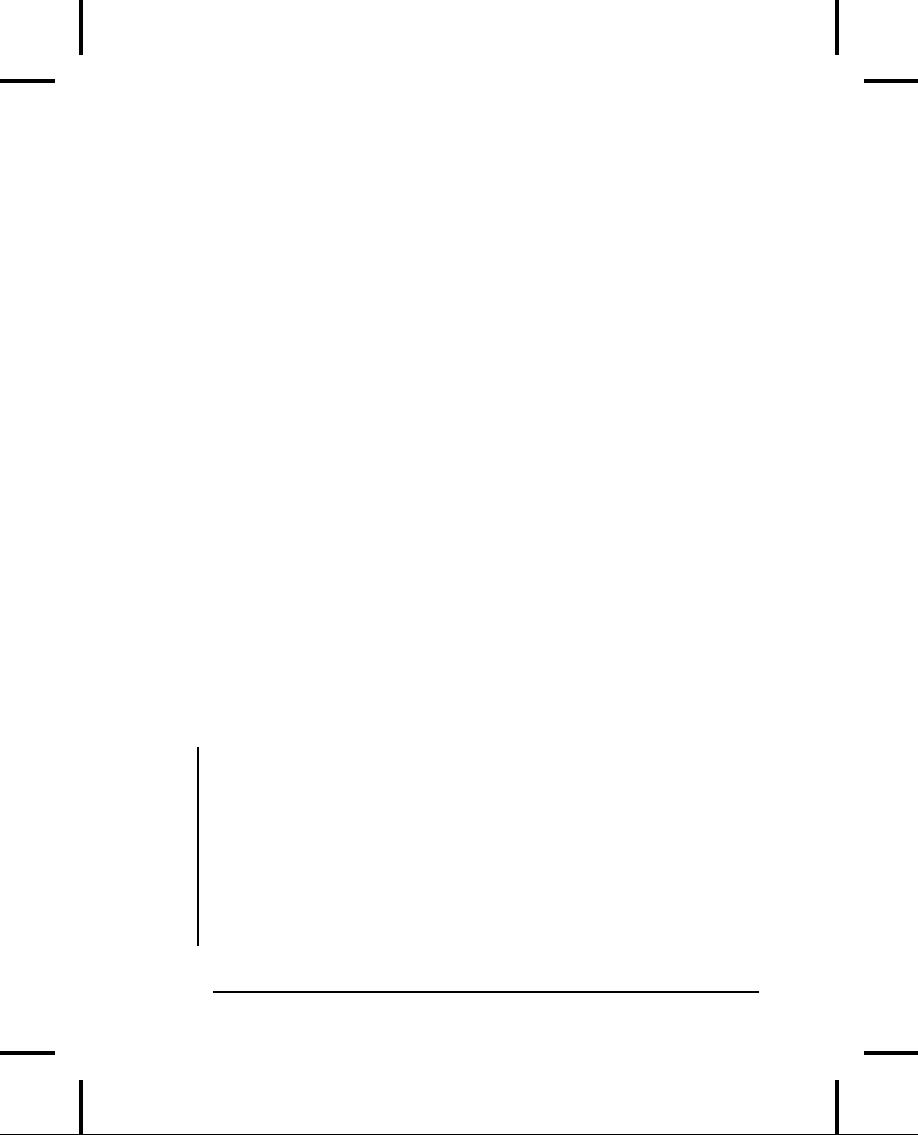
assumes
an implicit conversion to an enum
type,
the compiler will
flag
this inherently dangerous
activity.
Unions
(described next) have
similar additional type
checking in
C++.
Saving
memory with union
Sometimes
a program will handle different
types of data using
the
same
variable. In this situation, you
have two choices: you
can
create
a struct
containing
all the possible different
types you might
need
to store, or you can use a
union.
A union
piles
all the data
into
a single space; it figures out
the amount of space necessary
for
the
largest item you've put in the
union,
and makes that the size
of
the
union.
Use a union
to
save memory.
Anytime
you place a value in a union,
the value always starts
in
the
same place at the beginning
of the union,
but only uses as much
space
as is necessary. Thus, you create a
"super-variable" capable
of
holding any of the union
variables.
All the addresses of
the
union
variables
are the same (in a class or
struct,
the addresses are
different).
Here's
a simple use of a union.
Try removing various elements
and
see
what effect it has on the
size of the union.
Notice that it makes
no
sense to declare more than
one instance of a single
data type in a
union
(unless
you're just doing it to use a
different name).
//:
C03:Union.cpp
//
The size and simple
use of a union
#include
<iostream>
using
namespace std;
union
Packed { // Declaration similar to a
class
char
i;
short
j;
int
k;
long
l;
float
f;
3:
The C in C++
195
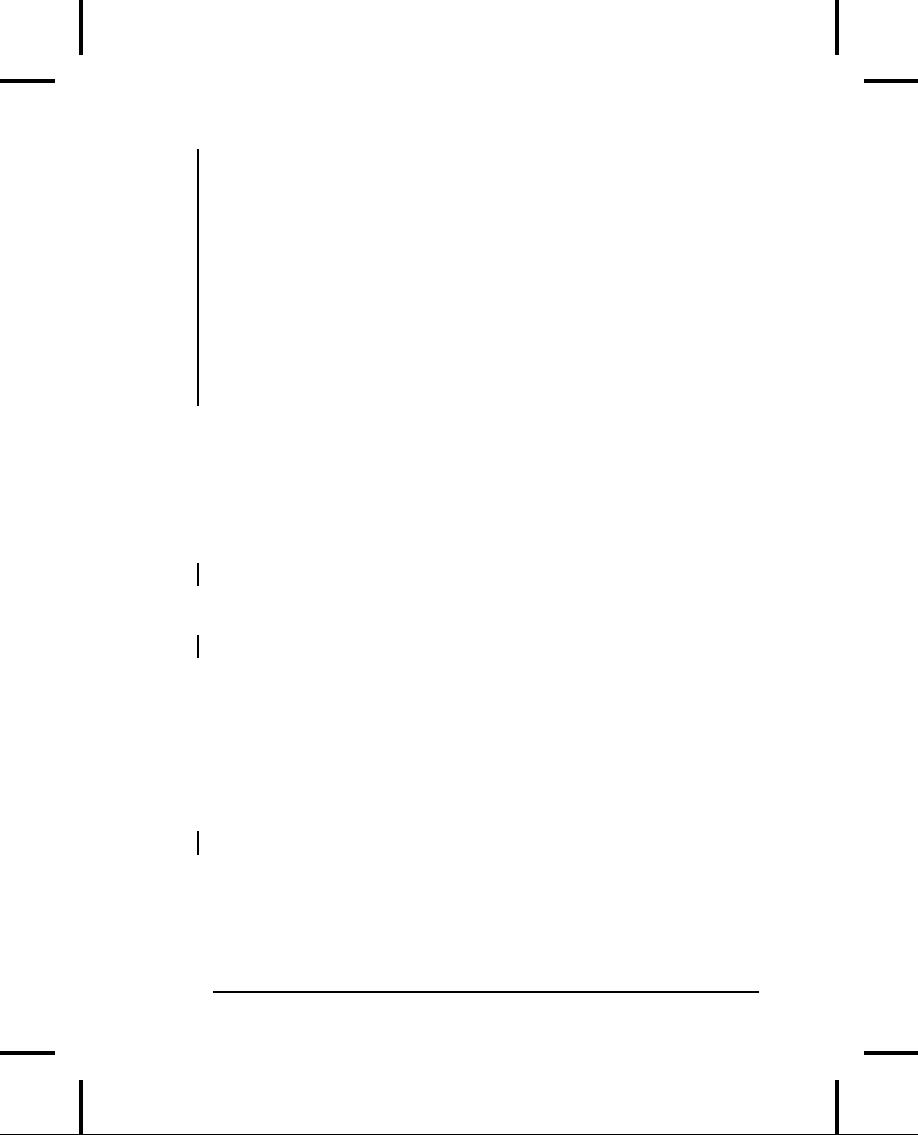
double
d;
//
The union will be the
size of a
//
double, since that's the
largest element
};
// Semicolon ends a union,
like a struct
int
main() {
cout
<< "sizeof(Packed) = "
<<
sizeof(Packed) << endl;
Packed
x;
x.i
= 'c';
cout
<< x.i << endl;
x.d
= 3.14159;
cout
<< x.d << endl;
}
///:~
The
compiler performs the proper
assignment according to
the
union
member you select.
Once
you perform an assignment, the
compiler doesn't care
what
you
do with the union. In the
example above, you could
assign a
floating-point
value to x:
x.f
= 2.222;
and
then send it to the output as if it were
an int:
cout
<< x.i;
This
would produce garbage.
Arrays
Arrays
are a kind of composite type because they
allow you to
clump
a lot of variables together, one right
after the other, under
a
single
identifier name. If you
say:
int
a[10];
You
create storage for 10 int
variables
stacked on top of each
other,
but
without unique identifier names for
each variable. Instead,
they
are
all lumped under the name a.
196
Thinking
in C++

To
access one of these array
elements, you use
the same square-
bracket
syntax that you use to
define an array:
a[5]
= 47;
However,
you must remember that even though
the size
of
a
is
10,
you
select array elements
starting at zero (this is
sometimes called
zero
indexing), so you
can select only the array
elements 0-9, like
this:
//:
C03:Arrays.cpp
#include
<iostream>
using
namespace std;
int
main() {
int
a[10];
for(int
i = 0; i < 10; i++) {
a[i]
= i * 10;
cout
<< "a[" << i << "] = " << a[i]
<< endl;
}
}
///:~
Array
access is extremely fast. However, if you
index past the
end
of
the array, there is no
safety net you'll step on
other variables.
The
other drawback is that you must
define the size of the
array at
compile
time; if you want to change the
size at runtime you can't
do
it with the syntax above (C
does have a way to create an
array
dynamically,
but it's significantly messier).
The C++ vector,
introduced
in the previous chapter,
provides an array-like
object
that
automatically resizes itself, so it is
usually a much better
solution
if your array size cannot be known at
compile time.
You
can make an array of any
type, even of structs:
//:
C03:StructArray.cpp
//
An array of struct
typedef
struct {
int
i, j, k;
}
ThreeDpoint;
3:
The C in C++
197

int
main() {
ThreeDpoint
p[10];
for(int
i = 0; i < 10; i++) {
p[i].i
= i + 1;
p[i].j
= i + 2;
p[i].k
= i + 3;
}
}
///:~
Notice
how the struct
identifier
i
is
independent of the for
loop's
i.
To
see that each element of an
array is contiguous with the
next,
you
can print out the addresses
like this:
//:
C03:ArrayAddresses.cpp
#include
<iostream>
using
namespace std;
int
main() {
int
a[10];
cout
<< "sizeof(int) = "<<
sizeof(int) << endl;
for(int
i = 0; i < 10; i++)
cout
<< "&a[" << i << "] = "
<<
(long)&a[i] << endl;
}
///:~
When
you run this program, you'll see
that each element is one
int
size
away from the previous one. That
is, they are stacked one
on
top
of the other.
Pointers
and arrays
The
identifier of an array is unlike
the identifiers for
ordinary
variables.
For one thing, an array
identifier is not an lvalue; you
cannot
assign to it. It's really
just a hook into the
square-bracket
syntax,
and when you give the name of an
array, without square
brackets,
what you get is the starting
address of the array:
//:
C03:ArrayIdentifier.cpp
#include
<iostream>
using
namespace std;
int
main() {
198
Thinking
in C++

int
a[10];
cout
<< "a = " << a << endl;
cout
<< "&a[0] =" << &a[0] <<
endl;
}
///:~
When
you run this program you'll see
that the two
addresses
(which
will be printed in hexadecimal, since
there is no cast to
long)
are the same.
So
one way to look at the array
identifier is as a read-only
pointer
to
the beginning of an array. And
although we can't change
the
array
identifier to point somewhere
else, we can
create
another
pointer
and use that to move around in
the array. In fact,
the
square-bracket
syntax works with regular pointers as
well:
//:
C03:PointersAndBrackets.cpp
int
main() {
int
a[10];
int*
ip = a;
for(int
i = 0; i < 10; i++)
ip[i]
= i * 10;
}
///:~
The
fact that naming an array
produces its starting
address turns
out
to be quite important when you want to
pass an array to a
function.
If you declare an array as a function
argument, what
you're
really declaring is a pointer. So in
the following example,
func1(
)and
func2(
)effectively
have the same argument
lists:
//:
C03:ArrayArguments.cpp
#include
<iostream>
#include
<string>
using
namespace std;
void
func1(int a[], int size)
{
for(int
i = 0; i < size; i++)
a[i]
= i * i - i;
}
void
func2(int* a, int size)
{
for(int
i = 0; i < size; i++)
a[i]
= i * i + i;
3:
The C in C++
199

}
void
print(int a[], string name,
int size) {
for(int
i = 0; i < size; i++)
cout
<< name << "[" << i << "] =
"
<<
a[i] << endl;
}
int
main() {
int
a[5], b[5];
//
Probably garbage
values:
print(a,
"a", 5);
print(b,
"b", 5);
//
Initialize the
arrays:
func1(a,
5);
func1(b,
5);
print(a,
"a", 5);
print(b,
"b", 5);
//
Notice the arrays are
always modified:
func2(a,
5);
func2(b,
5);
print(a,
"a", 5);
print(b,
"b", 5);
}
///:~
Even
though func1(
)and
func2(
)declare
their arguments
differently,
the usage is the same
inside the function. There
are
some
other issues that this
example reveals: arrays
cannot be
of
the array that you pass into
a function. Thus, when you modify
an
array, you're always
modifying the outside
object. This can be a
bit
confusing at first, if you're
expecting the
pass-by-value
provided
with ordinary arguments.
3
Unless you take the
very strict approach that
"all argument passing in C/C++ is
by
value,
and the `value' of an array
is what is produced by the
array identifier:
it's
address."
This can be seen as true
from the assembly-language
standpoint, but I
don't
think
it helps when trying to work
with higher-level concepts.
The addition of
references
in C++ makes the "all
passing is by value" argument
more confusing, to
the
point where I feel it's
more helpful to think in
terms of "passing by value"
vs.
"passing
addresses."
200
Thinking
in C++
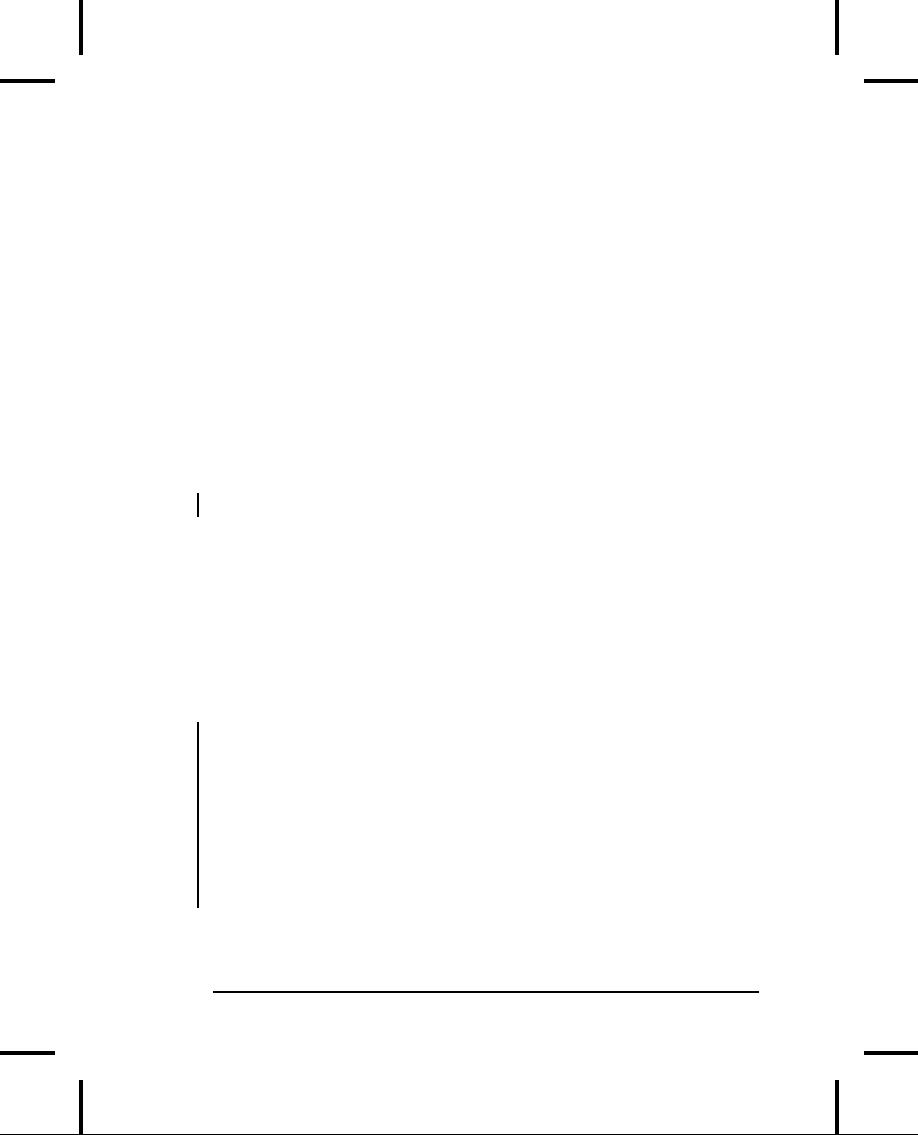
You'll
notice that print(
)uses
the square-bracket syntax for
array
arguments.
Even though the pointer
syntax and the
square-bracket
syntax
are effectively the same
when passing arrays as
arguments,
the
square-bracket syntax makes it
clearer to the reader that
you
mean
for this argument to be an
array.
Also
note that the size
argument
is passed in each case. Just
passing
the
address of an array isn't
enough information; you must
always
be
able to know how big the
array is inside your function, so
you
don't
run off the end of that
array.
Arrays
can be of any type, including
arrays of pointers. In
fact,
when
you want to pass command-line arguments
into your
program,
C and C++ have a special argument
list for main(
),
which
looks like this:
int
main(int argc, char* argv[])
{ // ...
The
first argument is the number of
elements in the array, which
is
the
second argument. The second
argument is always an array
of
char*,
because the arguments are
passed from the command line
as
character
arrays (and remember, an
array can be passed only as
a
pointer).
Each whitespace-delimited cluster of
characters on the
command
line is turned into a separate array
argument. The
following
program prints out all its
command-line arguments by
stepping
through the array:
//:
C03:CommandLineArgs.cpp
#include
<iostream>
using
namespace std;
int
main(int argc, char* argv[])
{
cout
<< "argc = " << argc <<
endl;
for(int
i = 0; i < argc; i++)
cout
<< "argv[" << i << "] = "
<<
argv[i] << endl;
}
///:~
3:
The C in C++
201
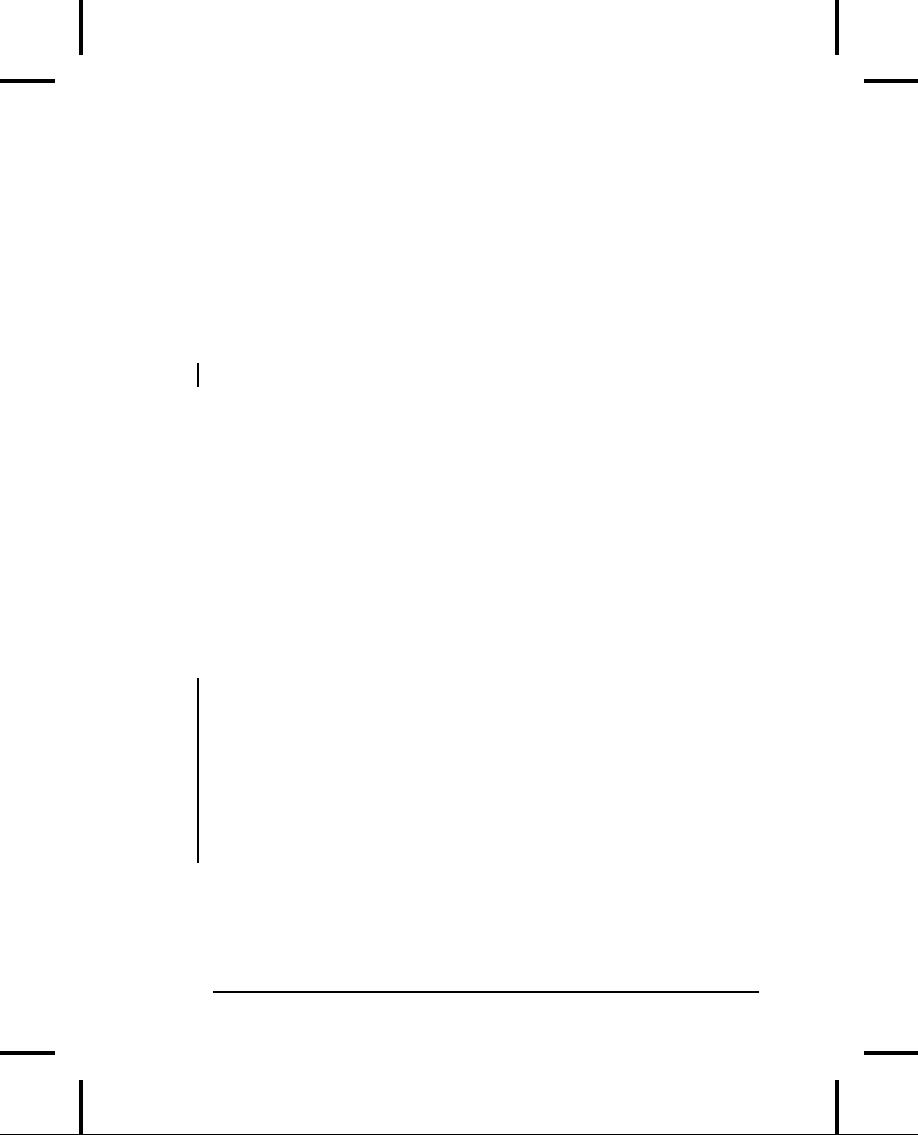
You'll
notice that argv[0]
is
the path and name of the
program
itself.
This allows the program to
discover information about
itself.
It
also adds one more to
the array of program
arguments, so a
common
error when fetching command-line
arguments is to grab
argv[0]
when
you want argv[1].
You
are not forced to use
argc
and
argv
as
identifiers in main(
);
those
identifiers are only conventions (but it
will confuse people if
you
don't use them). Also, there
is an alternate way to declare argv:
int
main(int argc, char** argv)
{ // ...
Both
forms are equivalent, but I find
the version used in this
book
to
be the most intuitive when
reading the code, since it
says,
directly,
"This is an array of character
pointers."
All
you get from the command-line is
character arrays; if you want
to
treat an argument as some
other type, you are
responsible for
converting
it inside your program. To facilitate
the conversion to
numbers,
there are some helper
functions in the Standard C
library,
declared
in <cstdlib>
The
simplest ones to use are
atoi(
),
atol(
),
.
and
atof(
) to
convert an ASCII character array to an
int,
long,
and
double
floating-point
value, respectively. Here's an
example using
atoi(
) (the
other two functions are
called the same way):
//:
C03:ArgsToInts.cpp
//
Converting command-line arguments to
ints
#include
<iostream>
#include
<cstdlib>
using
namespace std;
int
main(int argc, char* argv[])
{
for(int
i = 1; i < argc; i++)
cout
<< atoi(argv[i]) <<
endl;
}
///:~
In
this program, you can put any number of
arguments on the
command
line. You'll notice that the
for
loop
starts at the value
1
to
skip
over the program name at
argv[0].
Also, if you put a floating-
202
Thinking
in C++
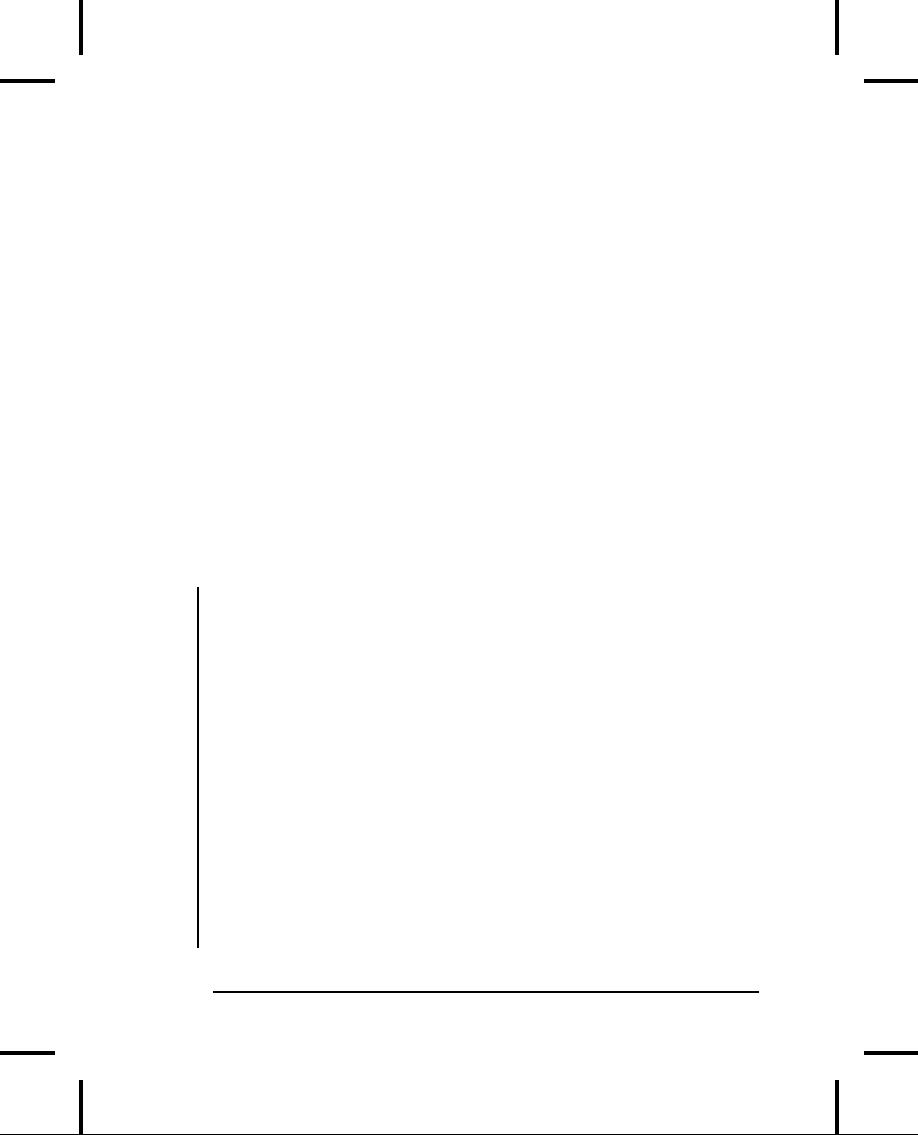
point
number containing a decimal point on
the command line,
atoi(
) takes
only the digits up to the
decimal point. If you put non-
numbers
on the command line, these
come back from atoi(
) as
zero.
Exploring
floating-point format
The
printBinary(
)function
introduced earlier in this
chapter is
handy
for delving into the internal
structure of various data
types.
The
most interesting of these is
the floating-point format
that
allows
C and C++ to store numbers representing
very large and
very
small values in a limited amount of
space. Although the
details
can't be completely exposed
here, the bits inside of
floats
and
doubles
are divided into three
regions: the exponent,
the
mantissa,
and the sign bit; thus it
stores the values using
scientific
notation.
The following program allows you to play
around by
printing
out the binary patterns of
various floating point
numbers
so
you can deduce for yourself
the scheme used in your
compiler's
floating-point
format (usually this is the
IEEE standard for
floating
point
numbers, but your compiler may not follow
that):
//:
C03:FloatingAsBinary.cpp
//{L}
printBinary
//{T}
3.14159
#include
"printBinary.h"
#include
<cstdlib>
#include
<iostream>
using
namespace std;
int
main(int argc, char* argv[])
{
if(argc
!= 2) {
cout
<< "Must provide a number" <<
endl;
exit(1);
}
double
d = atof(argv[1]);
unsigned
char* cp =
reinterpret_cast<unsigned
char*>(&d);
for(int
i = sizeof(double); i > 0 ; i -= 2) {
printBinary(cp[i-1]);
printBinary(cp[i]);
}
3:
The C in C++
203

}
///:~
First,
the program guarantees that
you've given it an argument by
checking
the value of argc,
which is two if there's a single
argument
(it's
one if there are no
arguments, since the program
name is
always
the first element of
argv).
If this fails, a message is
printed
and
the Standard C Library
function exit(
) is
called to terminate
the
program.
The
program grabs the argument
from the command line
and
converts
the characters to a double
using
atof(
).
Then the double is
treated
as an array of bytes by taking
the address and casting it
to
an
unsigned
char* Each of
these bytes is passed to
printBinary(
)
.
for
display.
This
example has been set up to
print the bytes in an order
such
that
the sign bit appears
first on my machine. Yours may
be
different,
so you might want to re-arrange the way
things are
printed.
You should also be aware
that floating-point formats
are
not
trivial to understand; for example,
the exponent and
mantissa
are
not generally arranged on byte
boundaries, but instead a
number
of bits is reserved for each
one and they are packed into
the
memory
as tightly as possible. To truly see
what's going on,
you'd
need
to find out the size of each
part of the number (sign
bits are
always
one bit, but exponents and
mantissas are of differing
sizes)
and
print out the bits in each
part separately.
Pointer
arithmetic
If
all you could do with a pointer that
points at an array is treat it
as
if
it were an alias for that
array, pointers into arrays wouldn't
be
very
interesting. However, pointers are
more flexible than
this,
since
they can be modified to point
somewhere else (but
remember,
the
array identifier cannot be
modified to point somewhere
else).
Pointer
arithmetic refers to
the application of some of
the arithmetic
operators
to pointers. The reason
pointer arithmetic is a
separate
subject
from ordinary arithmetic is that
pointers must conform to
204
Thinking
in C++
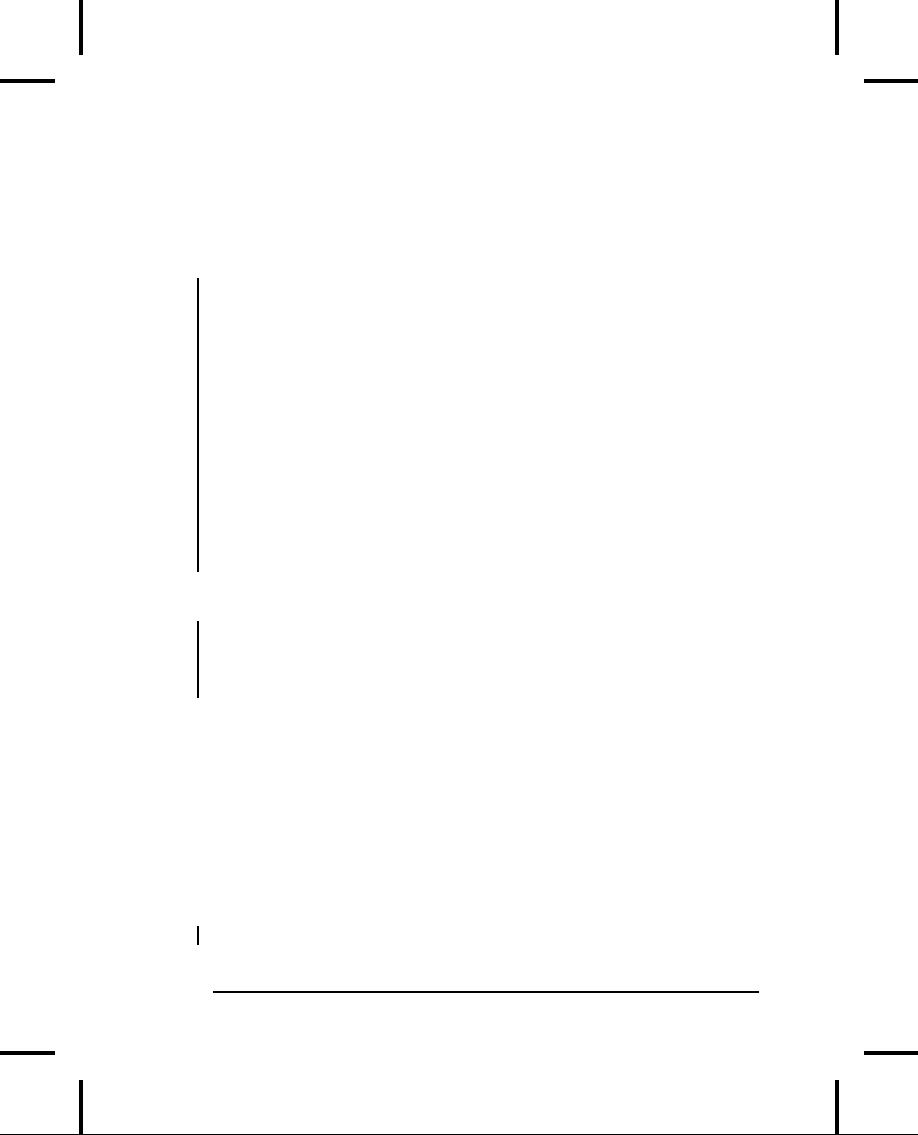
special
constraints in order to make them
behave properly. For
example,
a common operator to use with
pointers is ++,
which
"adds
one to the pointer." What
this actually means is that
the
pointer
is changed to move to "the next value,"
whatever that
means.
Here's an example:
//:
C03:PointerIncrement.cpp
#include
<iostream>
using
namespace std;
int
main() {
int
i[10];
double
d[10];
int*
ip = i;
double*
dp = d;
cout
<< "ip = "
<<
(long)ip << endl;
ip++;
cout
<< "ip = "
<<
(long)ip << endl;
cout
<< "dp = "
<<
(long)dp << endl;
dp++;
cout
<< "dp = "
<<
(long)dp << endl;
}
///:~
For
one run on my machine, the output
is:
ip
=
6684124
ip
=
6684128
dp
=
6684044
dp
=
6684052
What's
interesting here is that
even though the operation
++
appears
to be the same operation for
both the int*
and
the double*,
you
can see that the
pointer has been changed
only 4 bytes for the
int*
but
8 bytes for the double*.
Not coincidentally, these are
the
sizes
of int
and
double
on
my machine. And that's the
trick of
pointer
arithmetic: the compiler
figures out the right amount to
change
the pointer so that it's
pointing to the next element in
the
array
(pointer arithmetic is only meaningful
within arrays). This
even
works with arrays of structs:
//:
C03:PointerIncrement2.cpp
3:
The C in C++
205
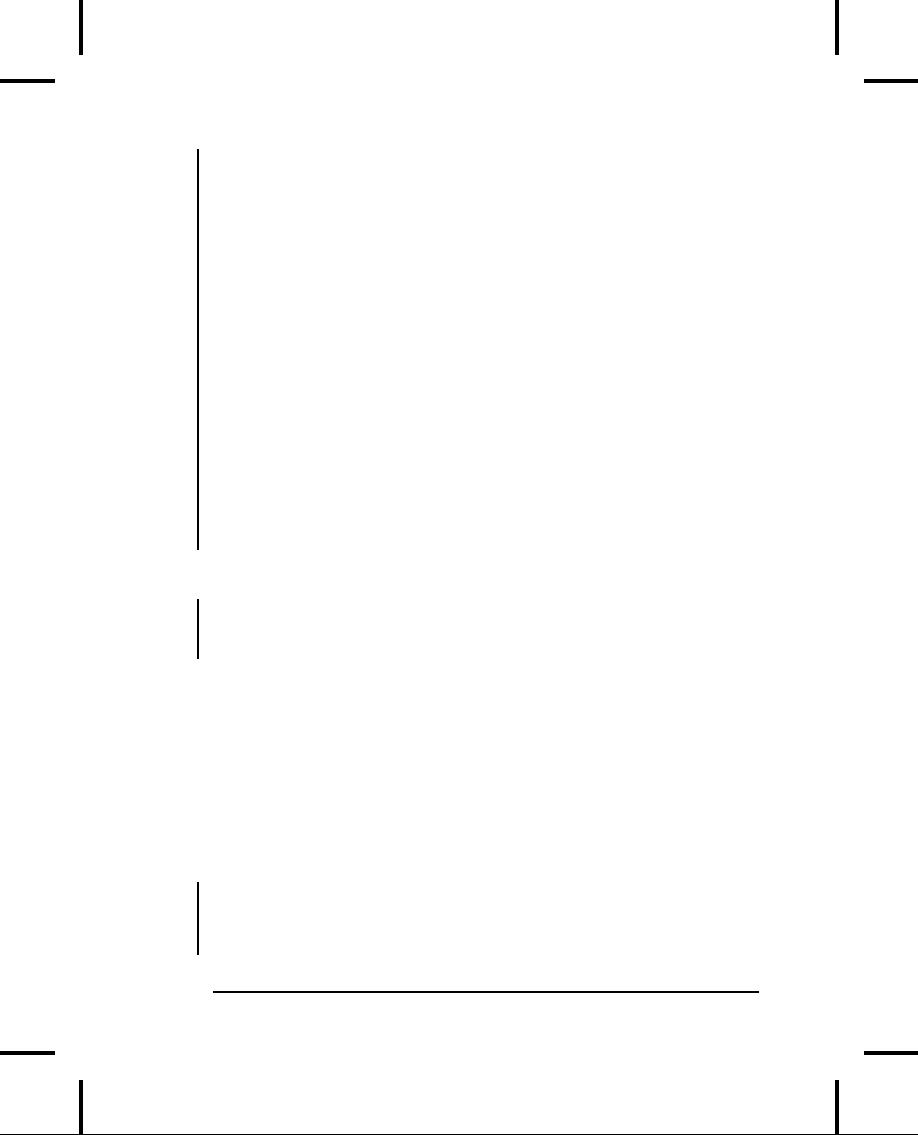
#include
<iostream>
using
namespace std;
typedef
struct {
char
c;
short
s;
int
i;
long
l;
float
f;
double
d;
long
double ld;
}
Primitives;
int
main() {
Primitives
p[10];
Primitives*
pp = p;
cout
<< "sizeof(Primitives) = "
<<
sizeof(Primitives) << endl;
cout
<< "pp = " << (long)pp <<
endl;
pp++;
cout
<< "pp = " << (long)pp <<
endl;
}
///:~
The
output for one run on my machine
was:
sizeof(Primitives)
= 40
pp
= 6683764
pp
= 6683804
So
you can see the compiler
also does the right thing for
pointers to
structs
(and classes
and unions).
Pointer
arithmetic also works with the
operators --,
+,
and
-,
but the
latter
two operators are limited: you
cannot add two pointers,
and
if
you subtract pointers the
result is the number of
elements
between
the two pointers. However, you can
add or subtract an
integral
value and a pointer. Here's an
example demonstrating
the
use
of pointer arithmetic:
//:
C03:PointerArithmetic.cpp
#include
<iostream>
using
namespace std;
206
Thinking
in C++

#define
P(EX) cout << #EX << ": "
<< EX << endl;
int
main() {
int
a[10];
for(int
i = 0; i < 10; i++)
a[i]
= i; // Give it index
values
int*
ip = a;
P(*ip);
P(*++ip);
P(*(ip
+ 5));
int*
ip2 = ip + 5;
P(*ip2);
P(*(ip2
- 4));
P(*--ip2);
P(ip2
- ip); // Yields number of
elements
}
///:~
It
begins with another macro, but
this one uses a
preprocessor
feature
called stringizing
(implemented
with the `#'
sign before an
expression)
that takes any expression and turns it
into a character
array.
This is quite convenient,
since it allows the
expression to be
printed,
followed by a colon, followed by
the value of the
expression.
In main(
) you
can see the useful
shorthand that is
produced.
Although
pre- and postfix versions of
++
and
--
are
valid with
pointers,
only the prefix versions are
used in this example
because
they
are applied before the
pointers are dereferenced in
the
expressions
above, so they allow us to see the
effects of the
operations.
Note that only integral values
are being added and
subtracted;
if two pointers were combined
this way the compiler
would
not allow it.
Here
is the output of the program
above:
*ip:
0
*++ip:
1
*(ip
+ 5): 6
*ip2:
6
*(ip2
- 4): 2
*--ip2:
5
3:
The C in C++
207

In
all cases, the pointer
arithmetic results in the
pointer being
adjusted
to point to the "right place,"
based on the size of
the
elements
being pointed to.
If
pointer arithmetic seems a
bit overwhelming at first, don't
worry.
Most
of the time you'll only need to
create arrays and index
into
them
with [
],
and the most sophisticated
pointer arithmetic you'll
usually
need is ++
and
--.
Pointer arithmetic is generally
reserved
for
more clever and complex
programs, and many of the
containers
in
the Standard C++ library
hide most of these clever
details so you
don't
have to worry about
them.
Debugging
hints
In
an ideal environment, you have an
excellent debugger
available
that
easily makes the behavior of
your program transparent so you
can
quickly discover errors. However,
most debuggers have
blind
spots,
and these will require you to embed
code snippets in your
program
to help you understand what's
going on. In addition,
you
may
be developing in an environment (such as
an embedded
system,
which is where I spent my formative
years) that has no
debugger
available, and perhaps very limited
feedback (i.e. a one-
line
LED display). In these cases
you become creative in the
ways
you
discover and display information
about the execution of
your
program.
This section suggests some
techniques for doing
this.
Debugging
flags
If
you hard-wire debugging code into a
program, you can run into
problems.
You start to get too much
information, which makes
the
bugs
difficult to isolate. When you think you've found
the bug you
start
tearing out debugging code, only to find
you need to put it
back
in again. You can solve
these problems with two types
of
flags:
preprocessor debugging flags and runtime
debugging flags.
208
Thinking
in C++

Preprocessor
debugging flags
By
using the preprocessor to
#define
one
or more debugging
flags
(preferably
in a header file), you can
test a flag using an
#ifdef
statement
and conditionally include debugging
code. When you
think
your debugging is finished, you can
simply #undef
the
flag(s)
and the code will automatically be
removed (and you'll
reduce
the size and runtime overhead of your
executable file).
It
is best to decide on names for
debugging flags before you
begin
building
your project so the names will be
consistent. Preprocessor
flags
are traditionally distinguished from
variables by writing them
in
all upper case. A common flag
name is simply DEBUG
(but
be
careful
you don't use NDEBUG,
which is reserved in C).
The
sequence
of statements might be:
#define
DEBUG // Probably in a header
file
//...
#ifdef
DEBUG // Check to see if
flag is defined
/*
debugging code here
*/
#endif
// DEBUG
Most
C and C++ implementations will also let
you #define
and
#undef
flags
from the compiler command
line, so you can re-
compile
code and insert debugging
information with a single
command
(preferably via the makefile, a
tool that will be
described
shortly).
Check your local documentation for
details.
Runtime
debugging flags
In
some situations it is more
convenient to turn debugging flags
on
and
off during program execution, especially
by setting them when
the
program starts up using the
command line. Large programs
are
tedious
to recompile just to insert
debugging code.
To
turn debugging code on and off
dynamically, create bool
flags:
//:
C03:DynamicDebugFlags.cpp
#include
<iostream>
#include
<string>
using
namespace std;
3:
The C in C++
209
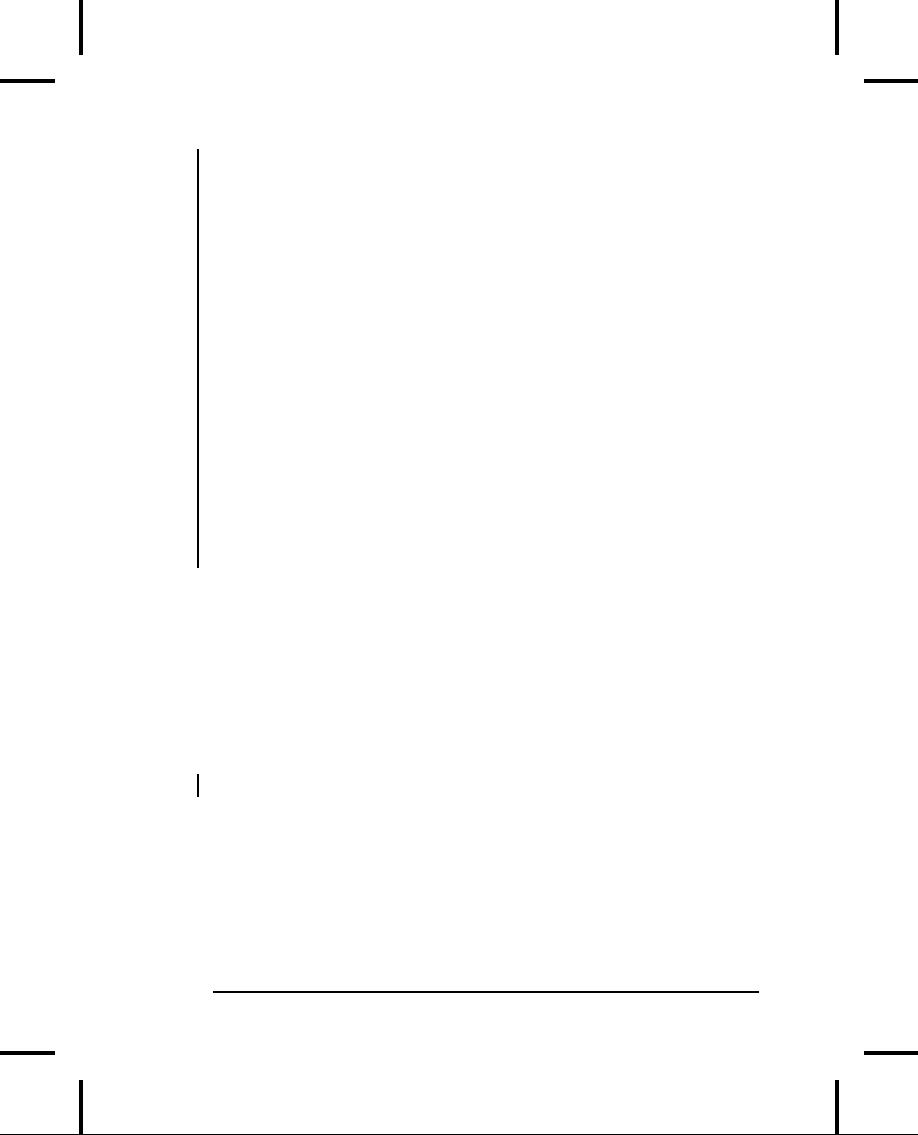
//
Debug flags aren't
necessarily global:
bool
debug = false;
int
main(int argc, char* argv[])
{
for(int
i = 0; i < argc; i++)
if(string(argv[i])
== "--debug=on")
debug
= true;
bool
go = true;
while(go)
{
if(debug)
{
//
Debugging code here
cout
<< "Debugger is now on!" <<
endl;
}
else {
cout
<< "Debugger is now off." <<
endl;
}
cout
<< "Turn debugger [on/off/quit]:
";
string
reply;
cin
>> reply;
if(reply
== "on") debug = true; //
Turn it on
if(reply
== "off") debug = false; //
Off
if(reply
== "quit") break; // Out of
'while'
}
}
///:~
This
program continues to allow you to turn
the debugging flag on
and
off until you type "quit" to tell it you want to exit.
Notice it
requires
that full words are typed in, not
just letters (you can
shorten
it to letter if you wish). Also, a
command-line argument
can
optionally
be used to turn debugging on at startup
this argument
can
appear anyplace in the
command line, since the
startup code in
main(
) looks
at all the arguments. The
testing is quite
simple
because
of the expression:
string(argv[i])
This
takes the argv[i]
character
array and creates a string,
which
then
can be easily compared to
the right-hand side of the
==.
The
program
above searches for the
entire string --debug=on
You
can
.
also
look for --debug=and
then see what's after that,
to provide
more
options. Volume 2 (available from )
devotes
a chapter to the Standard C++
string
class.
210
Thinking
in C++
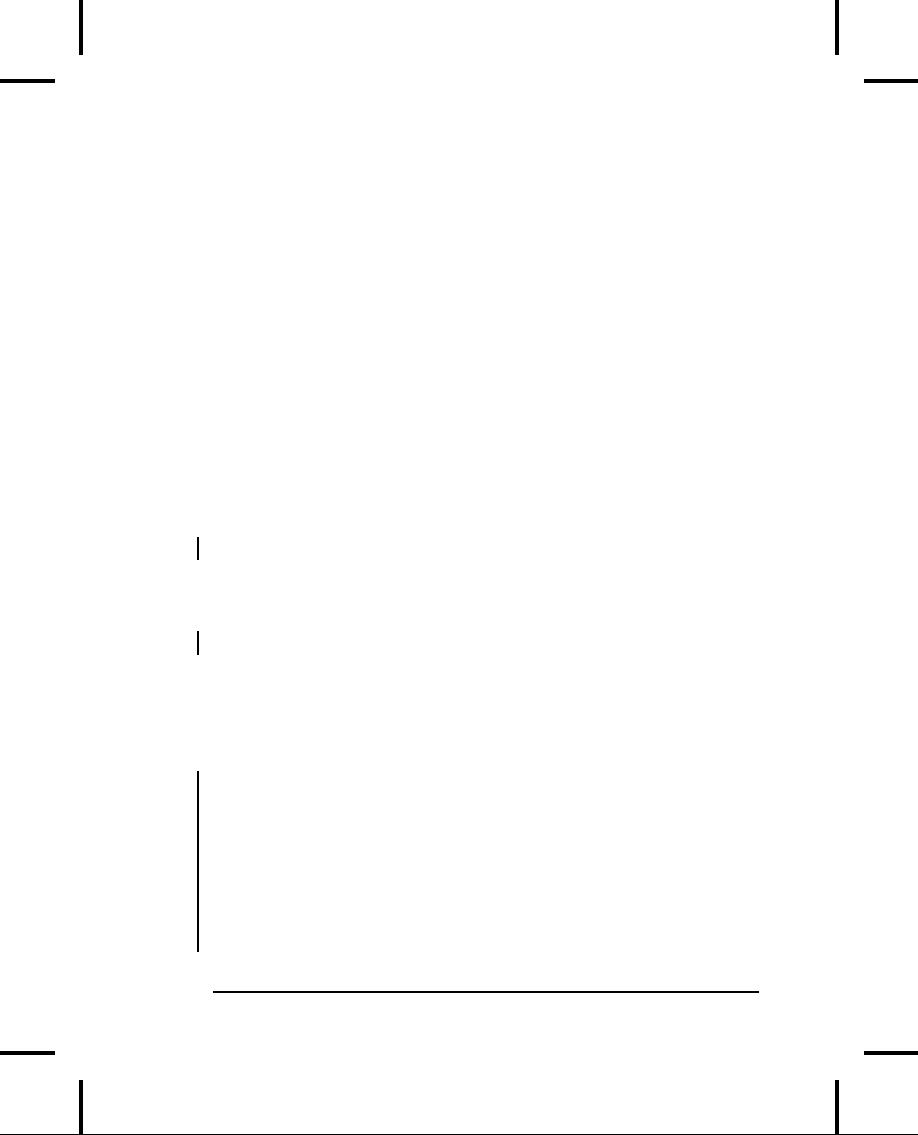
Although
a debugging flag is one of
the relatively few areas
where
it
makes a lot of sense to use a
global variable, there's
nothing that
says
it must be that way. Notice that
the variable is in lower
case
letters
to remind the reader it
isn't a preprocessor
flag.
Turning
variables and expressions into strings
When
writing debugging code, it is tedious to
write print
expressions
consisting of a character array
containing the
variable
name,
followed by the variable.
Fortunately, Standard C
includes
the
stringize
operator
`#',
which was used earlier in
this chapter.
When
you put a #
before
an argument in a preprocessor macro,
the
preprocessor
turns that argument into a character
array. This,
combined
with the fact that character
arrays with no intervening
punctuation
are concatenated into a single
character array,
allows
you
to make a very convenient macro for
printing the values
of
variables
during debugging:
#define
PR(x) cout << #x " = " << x <<
"\n";
If
you print the variable a
by
calling the macro PR(a),
it will have
the
same effect as the
code:
cout
<< "a = " << a << "\n";
This
same process works with entire
expressions. The following
program
uses a macro to create a
shorthand that prints
the
stringized
expression and then evaluates the
expression and prints
the
result:
//:
C03:StringizingExpressions.cpp
#include
<iostream>
using
namespace std;
#define
P(A) cout << #A << ": " <<
(A) << endl;
int
main() {
int
a = 1, b = 2, c = 3;
P(a);
P(b); P(c);
P(a
+ b);
3:
The C in C++
211

P((c
- a)/b);
}
///:~
You
can see how a technique like
this can quickly
become
indispensable,
especially if you have no debugger
(or must use
multiple
development environments). You can
also insert an #ifdef
to
cause P(A)
to
be defined as "nothing" when you want to
strip
out
debugging.
The
C assert( ) macro
In
the standard header file
<cassert>you'll
find assert(
) which
is a
,
convenient
debugging macro. When you use
assert(
) you
give it
,
an
argument that is an expression you
are "asserting to be
true."
The
preprocessor generates code
that will test the
assertion. If the
assertion
isn't true, the program will
stop after issuing an
error
message
telling you what the assertion
was and that it
failed.
Here's
a trivial example:
//:
C03:Assert.cpp
//
Use of the assert()
debugging macro
#include
<cassert> // Contains the
macro
using
namespace std;
int
main() {
int
i = 100;
assert(i
!= 100); // Fails
}
///:~
The
macro originated in Standard C, so
it's also available in
the
header
file assert.h
.
When
you are finished debugging, you
can remove the
code
generated
by the macro by placing the
line:
#define
NDEBUG
in
the program before the
inclusion of <cassert>
or
by defining
,
NDEBUG
on the compiler command
line. NDEBUG is a flag
used
in
<cassert>to
change the way code is
generated by the
macros.
212
Thinking
in C++
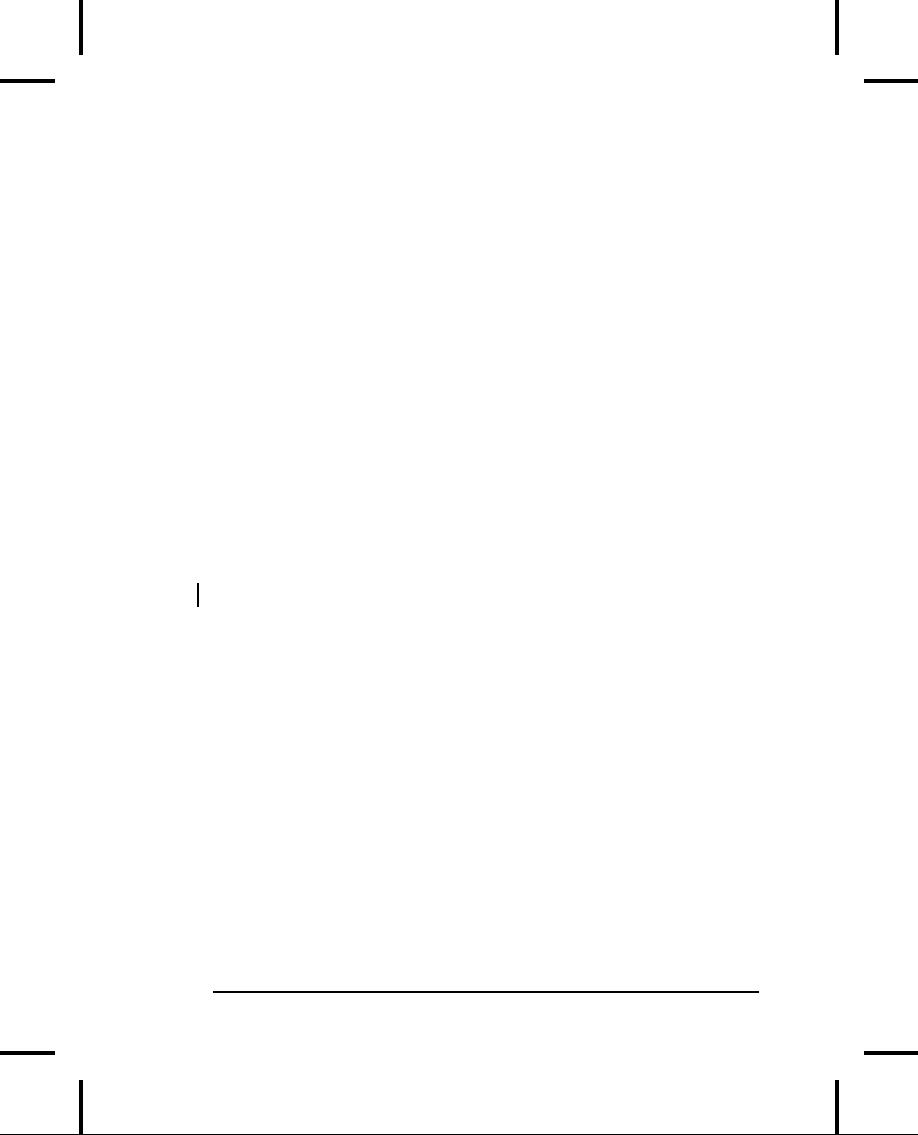
Later
in this book, you'll see
some more sophisticated
alternatives
to
assert(
)
.
Function
addresses
Once
a function is compiled and loaded into
the computer to be
executed,
it occupies a chunk of memory. That memory, and
thus
the
function, has an
address.
C
has never been a language to
bar entry where others fear
to tread.
You
can use function addresses
with pointers just as you can
use
variable
addresses. The declaration and
use of function
pointers
looks
a bit opaque at first, but it
follows the format of the
rest of the
language.
Defining
a function pointer
To
define a pointer to a function
that has no arguments and
no
return
value, you say:
void
(*funcPtr)();
When
you are looking at a complex
definition like this, the
best
way
to attack it is to start in the
middle and work your way out.
"Starting
in the middle" means starting at
the variable name,
which
is
funcPtr.
"Working your way out" means looking to
the right for
the
nearest item (nothing in
this case; the right parenthesis
stops
you
short), then looking to the
left (a pointer denoted by
the
asterisk),
then looking to the right (an empty
argument list
indicating
a function that takes no
arguments), then looking to
the
left
(void,
which
indicates the function has
no return value). This
right-left-right
motion works with most
declarations.
To
review, "start in the middle"
("funcPtr
is
a ..."), go to the right
(nothing
there you're stopped by
the right parenthesis), go to
the
left
and find the `*'
("... pointer to a ..."), go to
the right and find the
empty
argument list ("... function
that takes no arguments ...
"), go
3:
The C in C++
213
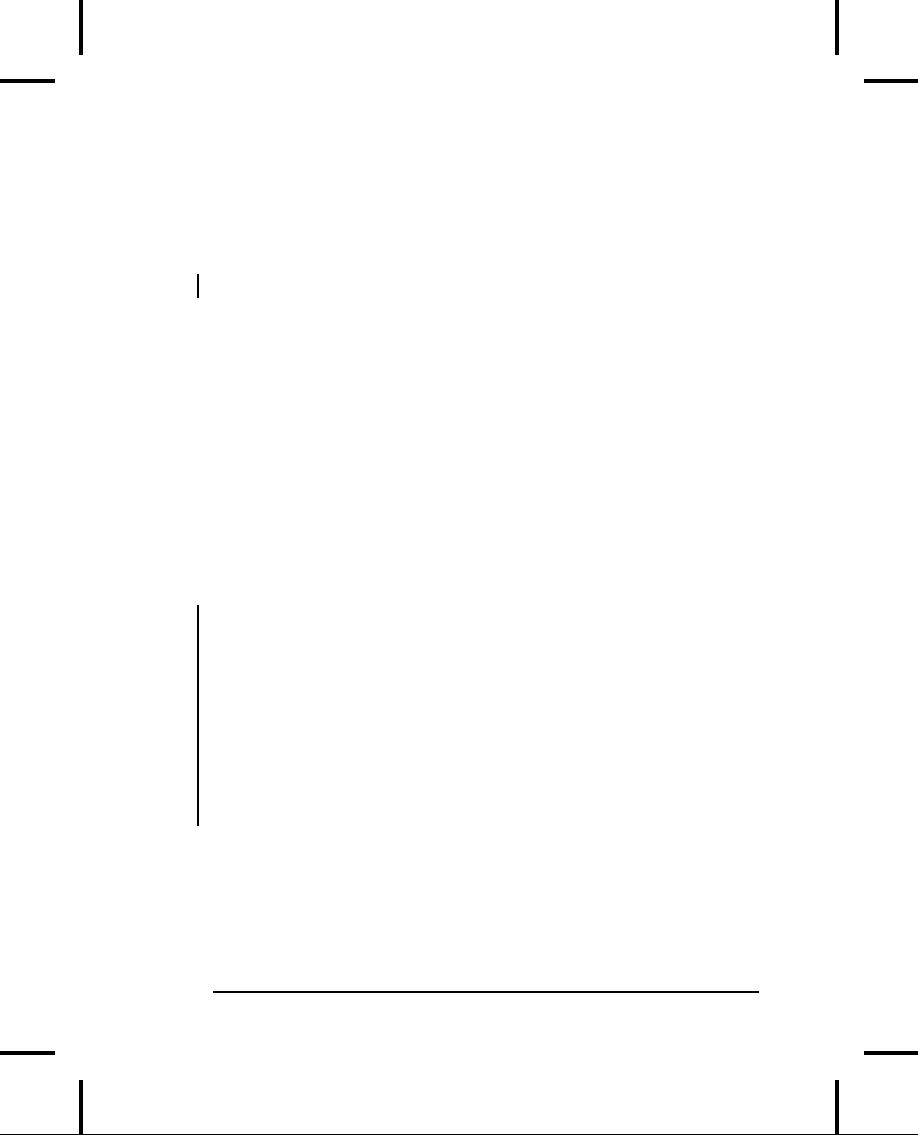
to
the left and find the
void
("funcPtr
is
a pointer to a function
that
takes
no arguments and returns void").
You
may wonder why *funcPtrrequires
parentheses. If you didn't
use
them, the compiler would
see:
void
*funcPtr();
You
would be declaring a function (that
returns a void*)
rather
than
defining a variable. You can think of
the compiler as going
through
the same process you do when it
figures out what a
declaration
or definition is supposed to be. It
needs those
parentheses
to "bump up against" so it goes back to
the left and
finds
the `*',
instead of continuing to the right and
finding the
empty
argument list.
Complicated
declarations & definitions
As
an aside, once you figure out how
the C and C++ declaration
syntax
works you can create much more
complicated items.
For
instance:
//:
C03:ComplicatedDefinitions.cpp
/*
1. */
void
* (*(*fp1)(int))[10];
/*
2. */
float
(*(*fp2)(int,int,float))(int);
/*
3. */
typedef
double (*(*(*fp3)())[10])();
fp3
a;
/*
4. */
int
(*(*f4())[10])();
int
main() {} ///:~
Walk
through each one and use the
right-left guideline to figure
it
out.
Number 1 says "fp1
is
a pointer to a function that
takes an
integer
argument and returns a pointer to an
array of 10 void
pointers."
214
Thinking
in C++
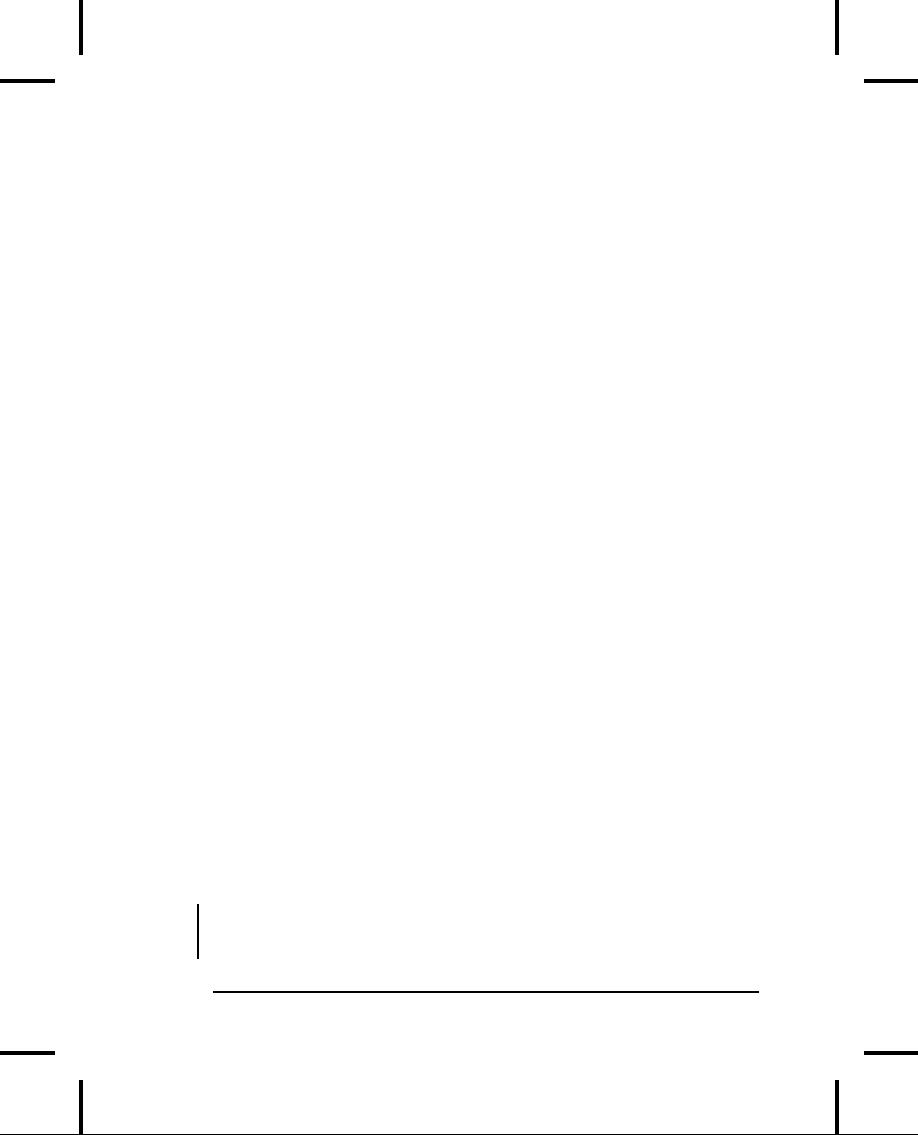
Number
2 says "fp2
is
a pointer to a function that
takes three
arguments
(int,
int,
and
float)
and returns a pointer to a
function
that
takes an integer argument and
returns a float."
If
you are creating a lot of complicated
definitions, you might want
to
use a typedef.
Number 3 shows how a typedef
saves
typing the
complicated
description every time. It
says "An fp3
is
a pointer to a
function
that takes no arguments and
returns a pointer to an
array
of
10 pointers to functions that
take no arguments and return
doubles."
Then it says "a
is
one of these fp3
types."
typedef
is
generally
useful for building complicated
descriptions from simple
ones.
Number
4 is a function declaration instead of a
variable definition.
It
says "f4
is
a function that returns a
pointer to an array of 10
pointers
to functions that return
integers."
You
will rarely if ever need
such complicated declarations
and
definitions
as these. However, if you go through the
exercise of
figuring
them out you will not even be mildly disturbed with
the
slightly
complicated ones you may encounter in
real life.
Using
a function pointer
Once
you define a pointer to a function, you
must assign it to a
function
address before you can use
it. Just as the address of
an
array
arr[10]
is
produced by the array name
without the brackets
(arr),
the address of a function
func()
is
produced by the
function
name
without the argument list
(func).
You can also use the
more
explicit
syntax &func().
To call the function, you
dereference the
pointer
in the same way that you
declared it (remember that C
and
C++
always try to make definitions
look the same as the way
they
are
used). The following example
shows how a pointer to a
function
is defined and used:
//:
C03:PointerToFunction.cpp
//
Defining and using a pointer
to a function
#include
<iostream>
3:
The C in C++
215

using
namespace std;
void
func() {
cout
<< "func() called..." <<
endl;
}
int
main() {
void
(*fp)(); // Define a function
pointer
fp
= func; // Initialize it
(*fp)();
//
Dereferencing calls the
function
void
(*fp2)() = func; // Define
and initialize
(*fp2)();
}
///:~
After
the pointer to function
fp
is
defined, it is assigned to
the
address
of a function func()
using
fp
= func(notice
the argument
list
is missing on the function
name). The second case
shows
simultaneous
definition and initialization.
Arrays
of pointers to functions
One
of the more interesting
constructs you can create is an
array of
pointers
to functions. To select a function, you
just index into the
array
and dereference the pointer.
This supports the concept
of
table-driven
code; instead
of using conditionals or case
statements,
you
select functions to execute
based on a state variable
(or a
combination
of state variables). This kind of
design can be useful
if
you
often add or delete
functions from the table (or
if you want to
create
or change such a table
dynamically).
The
following example creates some dummy
functions using a
preprocessor
macro, then creates an array of
pointers to those
functions
using automatic aggregate
initialization. As you can
see,
it
is easy to add or remove
functions from the table
(and thus,
functionality
from the program) by changing a
small amount of
code:
//:
C03:FunctionTable.cpp
//
Using an array of pointers to
functions
#include
<iostream>
216
Thinking
in C++

using
namespace std;
//
A macro to define dummy
functions:
#define
DF(N) void N() { \
cout
<< "function " #N " called..." <<
endl; }
DF(a);
DF(b); DF(c); DF(d); DF(e);
DF(f); DF(g);
void
(*func_table[])() = { a, b, c, d, e, f, g };
int
main() {
while(1)
{
cout
<< "press a key from
'a' to 'g' "
"or
q to quit" << endl;
char
c, cr;
cin.get(c);
cin.get(cr); // second one
for CR
if
( c == 'q' )
break;
// ... out of
while(1)
if
( c < 'a' || c > 'g' )
continue;
(*func_table[c
- 'a'])();
}
}
///:~
At
this point, you might be able to
imagine how this
technique
could
be useful when creating some
sort of interpreter or
list
processing
program.
Make:
managing separate
compilation
When
using separate
compilation (breaking
code into a number of
translation
units), you need some way to
automatically compile
each
file and to tell the linker
to build all the pieces along with
the
appropriate
libraries and startup code into an
executable file.
Most
compilers allow you to do this with a
single command-line
statement.
For the GNU C++ compiler, for
example, you might say
g++
SourceFile1.cpp SourceFile2.cpp
3:
The C in C++
217

The
problem with this approach is
that the compiler will
first
compile
each individual file,
regardless of whether that
file needs
to
be
rebuilt or not. With many files in a
project, it can
become
prohibitive
to recompile everything if you've changed
only a single
file.
The
solution to this problem,
developed on Unix but available
everywhere
in some form, is a program
called make.
The make
utility
manages all the individual
files in a project by following
the
instructions
in a text file called a
makefile
When
you edit some of
.
the
files in a project and type make,
the make
program
follows the
guidelines
in the makefileto
compare the dates on the
source code
files
to the dates on the
corresponding target files, and if a
source
code
file date is more recent
than its target file,
make
invokes
the
compiler
on the source code file.
make
only
recompiles the source
code
files that were changed, and
any other source-code files
that
are
affected by the modified
files. By using make,
you don't have to
re-compile
all the files in your project
every time you make a
change,
nor do you have to check to see
that everything was
built
properly.
The makefilecontains
all the commands to put your
project
together. Learning to use
make
will
save you a lot of time
and
frustration. You'll also discover
that make
is
the typical way
that
you install new software on a Linux/Unix
machine (although
those
makefile
tend
to be far more complicated than
the ones
s
presented
in this book, and you'll often
automatically generate a
makefilefor
your particular machine as part of
the installation
process).
Because
make
is
available in some form for virtually all
C++
compilers
(and even if it isn't, you
can use freely-available
makes
with
any compiler), it will be the tool
used throughout this
book.
However,
compiler vendors have also
created their own
project
building
tools. These tools ask you
which files are in your
project
and
determine all the relationships
themselves. These tools
use
something
similar to a makefile
generally
called a project
file, but
,
the
programming environment maintains
this file so you don't
218
Thinking
in C++

have
to worry about it. The
configuration and use of project
files
varies
from one development environment to
another, so you must
find
the appropriate documentation on how to
use them (although
project
file tools provided by
compiler vendors are usually
so
simple
to use that you can learn
them by playing around my
favorite
form of education).
The
makefile
used
within this book should work
even if you are
s
also
using a specific vendor's
project-building tool.
Make
activities
When
you type make
(or
whatever the name of your
"make"
program
happens to be), the
make
program
looks in the current
directory
for a file named makefile
which
you've created if it's
,
your
project. This file lists
dependencies between source
code files.
make
looks
at the dates on files. If a
dependent file has an
older
date
than a file it depends on,
make
executes
the rule
given
after the
dependency.
All
comments in makefile
start
with a #
and
continue to the end
of
s
the
line.
As
a simple example, the
makefilefor
a program called "hello"
might
contain:
#
A comment
hello.exe:
hello.cpp
mycompiler
hello.cpp
This
says that hello.exe(the
target) depends on hello.cpp
When
.
hello.cpphas
a newer date than hello.exe
make executes
the
,
"rule"
mycompiler
hello.cppThere may
be multiple dependencies
.
and
multiple rules. Many make
programs
require that all the
rules
begin
with a tab. Other than that,
whitespace is generally
ignored
so
you can format for
readability.
3:
The C in C++
219
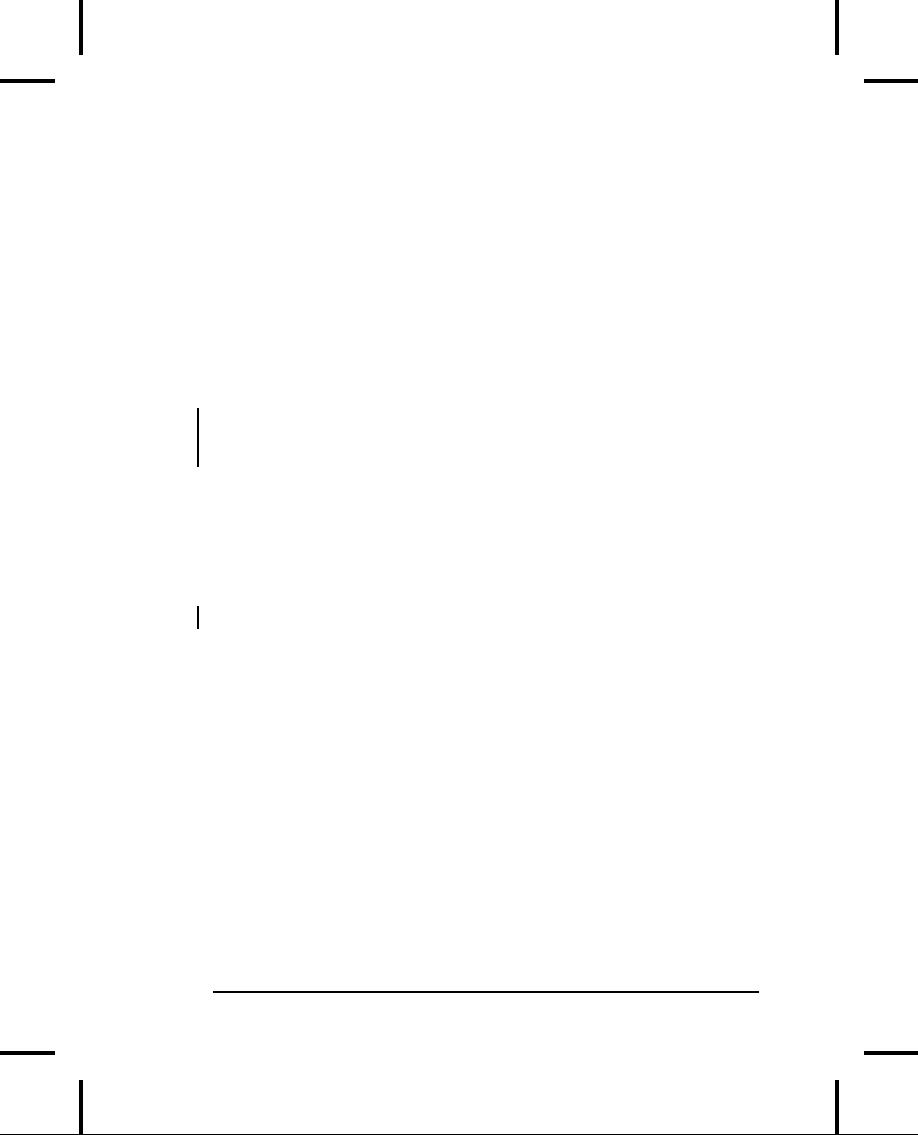
The
rules are not restricted to
being calls to the compiler;
you can
call
any program you want from within make.
By creating groups
of
interdependent dependency-rule sets, you
can modify your
source
code files, type make
and
be certain that all the
affected files
will
be rebuilt correctly.
Macros
A
makefilemay
contain macros
(note
that these are
completely
different
from C/C++ preprocessor macros). Macros
allow
convenient
string replacement. The
makefile
in
this book use a
s
macro
to invoke the C++ compiler.
For example,
CPP
= mycompiler
hello.exe:
hello.cpp
$(CPP)
hello.cpp
The
=
is
used to identify CPP
as
a macro, and the $
and
parentheses
expand
the macro. In this case, the
expansion means that the
macro
call
$(CPP)
will
be replaced with the string
mycompiler
With
the
.
macro
above, if you want to change to a
different compiler
called
cpp,
you just change the macro
to:
CPP
= cpp
You
can also add compiler
flags, etc., to the macro,
or use separate
macros
to add compiler
flags.
Suffix
Rules
It
becomes tedious to tell
make
how
to invoke the compiler
for
every
single cpp
file
in your project, when you know it's the
same
basic
process each time. Since
make
is
designed to be a time-saver,
it
also has a way to abbreviate
actions, as long as they depend on
file
name suffixes. These
abbreviations are called
suffix
rules. A
suffix
rule is the way to teach make
how
to convert a file with
one
type
of extension (.cpp,
for example) into a file with another
type of
extension
(.obj
or
.exe).
Once you teach make
the
rules for
producing
one kind of file from another, all you
have to do is tell
make
which
files depend on which other
files. When make
finds
a
220
Thinking
in C++
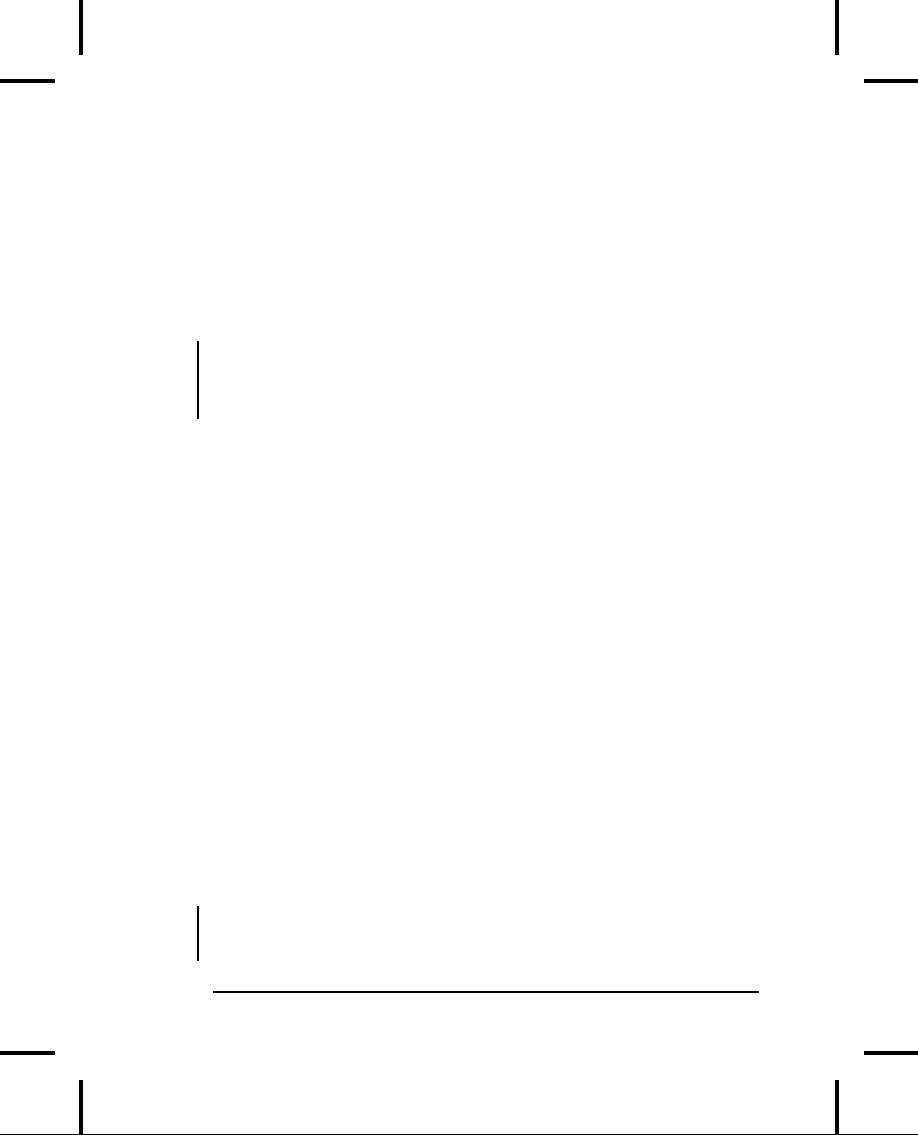
file with
a date earlier than the file
it depends on, it uses the
rule to
create
a new file.
The
suffix rule tells make
that
it doesn't need explicit
rules to build
everything,
but instead it can figure out how to
build things based
on
their file extension. In
this case it says "To build a
file that ends
in
exe
from
one that ends in cpp,
invoke the following
command."
Here's
what it looks like for the
example above:
CPP
= mycompiler
.SUFFIXES:
.exe .cpp
.cpp.exe:
$(CPP)
$<
The
.SUFFIXESdirective
tells make
that
it should watch out for
any
of the following file-name extensions
because they have
special
meaning
for this particular makefile. Next you
see the suffix rule
.cpp.exe,which
says "Here's how to convert any
file with an
extension
of cpp
to
one with an extension of exe"
(when the cpp
file
is
more recent than the
exe
file).
As before, the $(CPP)
macro
is
used,
but then you see something new: $<.
Because this begins
with
a
`$'
it's a macro, but this is
one of make's
special built-in
macros.
The
$<
can
be used only in suffix rules, and it
means "whatever
prerequisite
triggered the rule" (sometimes
called the dependent),
which
in this case translates to "the
cpp
file
that needs to be
compiled."
Once
the suffix rules have
been set up, you can simply
say, for
example,
"make
Union.exe and the
suffix rule will kick in,
even
,"
though
there's no mention of "Union" anywhere in
the makefile
.
Default
targets
After
the macros and suffix rules,
make
looks
for the first
"target"
in
a file, and builds that,
unless you specify differently. So for
the
following
makefile
:
CPP
= mycompiler
.SUFFIXES:
.exe .cpp
.cpp.exe:
3:
The C in C++
221

$(CPP)
$<
target1.exe:
target2.exe:
If
you just type `make',
then target1.exewill
be built (using the
default
suffix rule) because that's
the first target that
make
encounters.
To build target2.exeyou'd
have to explicitly say
`make
target2.exe
This
becomes tedious, so you normally create a
default
'.
"dummy"
target that depends on all
the rest of the targets,
like this:
CPP
= mycompiler
.SUFFIXES:
.exe .cpp
.cpp.exe:
$(CPP)
$<
all:
target1.exe target2.exe
Here,
`all'
does not exist and there's no
file called `all',
so every
time
you type make,
the program sees `all'
as the first target in
the
list
(and thus the default
target), then it sees that
`all'
does not exist
so
it had better make it by checking all
the dependencies. So it
looks
at
target1.exeand
(using the suffix rule)
sees whether (1)
target1.exeexists
and (2) whether target1.cppis
more recent than
target1.exe
and
if so runs the suffix rule (if you
provide an explicit
,
rule
for a particular target, that rule is
used instead). Then it
moves
on
to the next file in the
default target list. Thus,
by creating a
default
target list (typically
called `all'
by convention, but you can
call
it anything) you can cause
every executable in your project
to
be
made simply by typing `make'.
In addition, you can have
other
non-default
target lists that do other
things for example, you
could
set it up so that typing `make
debug rebuilds
all your files
'
with
debugging wired in.
Makefiles
in this book
Using
the program ExtractCode.cppfrom
Volume 2 of this book,
all
the code listings in this
book are automatically
extracted from
the
ASCII text version of this
book and placed in
subdirectories
according
to their chapters. In addition,
ExtractCode.cppcreates
several
makefile
in
each subdirectory (with different
names) so
s
222
Thinking
in C++
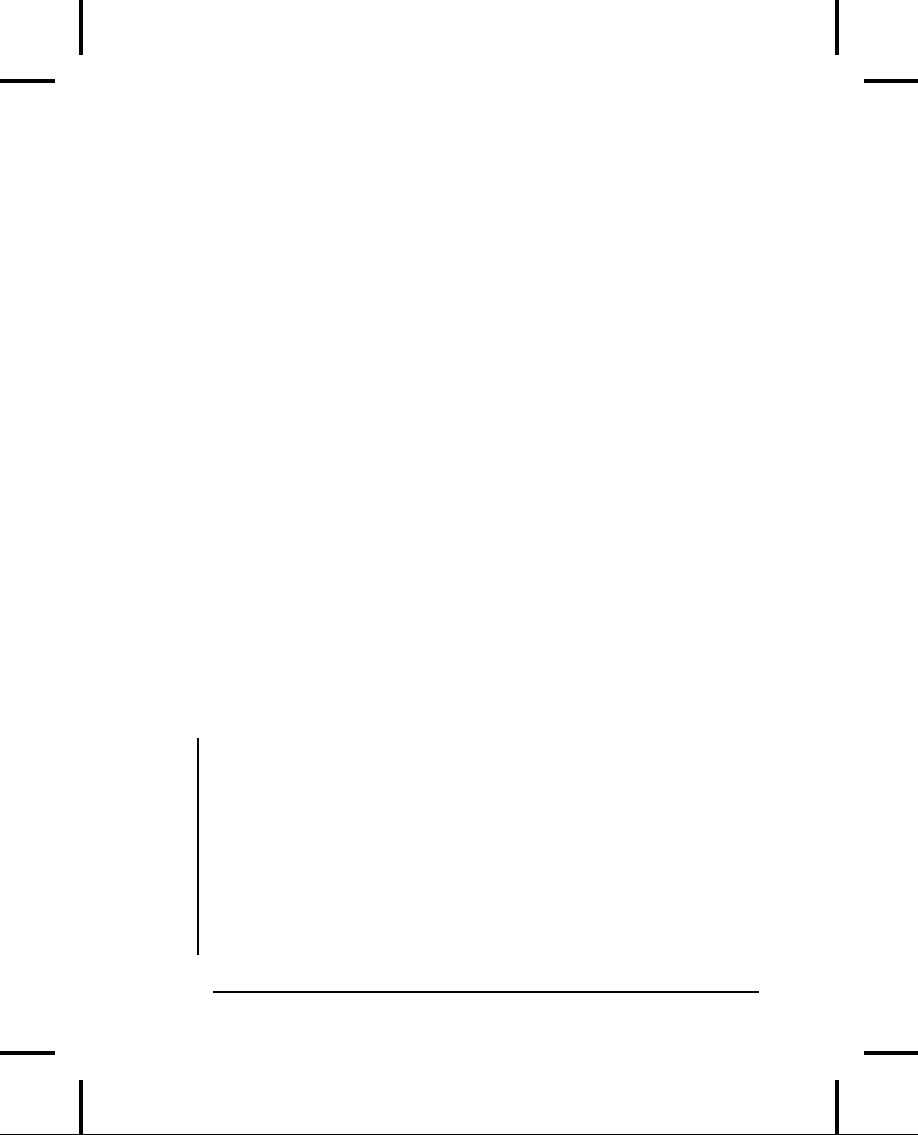
you can
simply move into that subdirectory and type
make
-f
mycompiler.makefile
(substituting
the name of your compiler
for
`mycompiler
the
`-f'
flag says "use what follows
as the
',
makefile
Finally,
ExtractCode.cppcreates
a "master" makefile
").
in
the root directory where
the book's files have
been expanded,
and
this makefiledescends
into each subdirectory and calls
make
with
the appropriate makefile
This
way you can compile all
the
.
code
in the book by invoking a
single make
command,
and the
process
will stop whenever your compiler is
unable to handle a
particular
file (note that a Standard
C++ conforming compiler
should
be able to compile all the
files in this book).
Because
implementations
of make
vary
from system to system, only
the
most
basic, common features are
used in the generated
makefile
s.
An
example makefile
As
mentioned, the code-extraction
tool ExtractCode.cpp
automatically
generates makefile
for
each chapter. Because of
this,
s
the
makefile
for
each chapter will not be placed in
the book (all
s
the
makefiles are packaged with
the source code, which you
can
download
from ). However,
it's useful to see an
example
of a makefile
What
follows is a shortened version of
the
.
one
that was automatically
generated for this chapter by
the book's
extraction
tool. You'll find more than one
makefilein
each
subdirectory
(they have different names;
you invoke a specific
one
with
`make
-f').
This one is for GNU
C++:
CPP
= g++
OFLAG
= -o
.SUFFIXES
: .o .cpp .c
.cpp.o
:
$(CPP)
$(CPPFLAGS) -c $<
.c.o
:
$(CPP)
$(CPPFLAGS) -c $<
all:
\
Return
\
Declare
\
Ifthen
\
3:
The C in C++
223
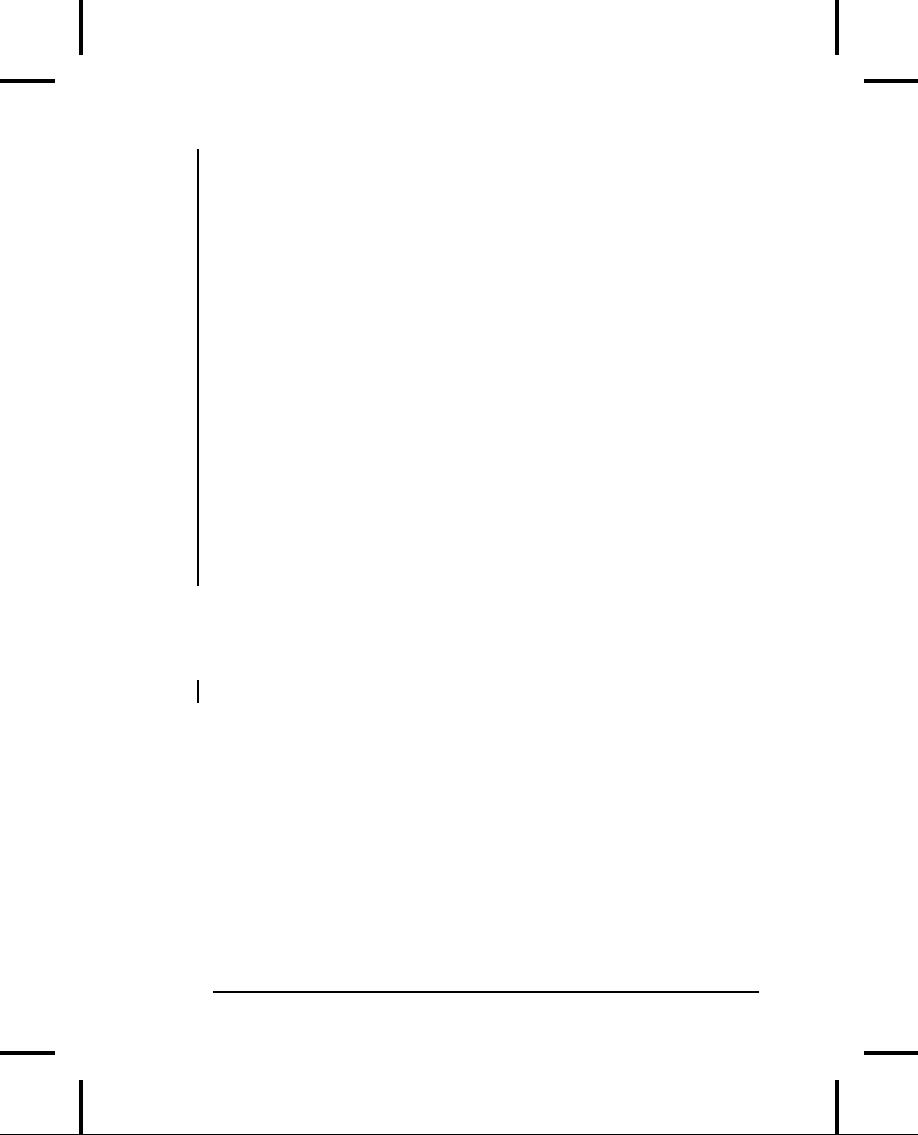
Guess
\
Guess2
#
Rest of the files for
this chapter not
shown
Return:
Return.o
$(CPP)
$(OFLAG)Return Return.o
Declare:
Declare.o
$(CPP)
$(OFLAG)Declare Declare.o
Ifthen:
Ifthen.o
$(CPP)
$(OFLAG)Ifthen Ifthen.o
Guess:
Guess.o
$(CPP)
$(OFLAG)Guess Guess.o
Guess2:
Guess2.o
$(CPP)
$(OFLAG)Guess2 Guess2.o
Return.o:
Return.cpp
Declare.o:
Declare.cpp
Ifthen.o:
Ifthen.cpp
Guess.o:
Guess.cpp
Guess2.o:
Guess2.cpp
The
macro CPP is set to the
name of the compiler. To use
a different
compiler,
you can either edit the
makefileor
change the value of
the
macro on the command line,
like this:
make
CPP=cpp
Note,
however, that ExtractCode.cpphas
an automatic scheme to
automatically
build makefile
for
additional compilers.
s
The
second macro OFLAG
is
the flag that's used to
indicate the
name
of the output file. Although many
compilers automatically
assume
the output file has the
same base name as the input
file,
others
don't (such as Linux/Unix compilers, which
default to
creating
a file called a.out).
You
can see that there
are two suffix rules here,
one for cpp
files
and
one for .c
files
(in case any C source code
needs to be
224
Thinking
in C++

compiled).
The default target is
all,
and each line for this
target is
"continued"
by using the backslash, up until
Guess2,
which is the
last
one in the list and thus has
no backslash. There are many
more
files
in this chapter, but only these
are shown here for the sake
of
brevity.
The
suffix rules take care of
creating object files (with a
.o
extension)
from cpp
files,
but in general you need to explicitly
state
rules
for creating the executable,
because normally an executable is
created
by linking many different object files
and make
cannot
guess
what those are. Also, in
this case (Linux/Unix) there is
no
standard
extension for executables so a suffix
rule won't work for
these
simple situations. Thus, you
see all the rules for
building the
final
executables explicitly
stated.
This
makefiletakes
the absolute safest route of
using as few make
features
as possible; it only uses the
basic make
concepts
of targets
and
dependencies, as well as macros. This way
it is virtually
assured
of working with as many make
programs
as possible. It
tends
to produce a larger makefile
but
that's not so bad since
it's
,
automatically
generated by ExtractCode.cpp
.
There
are lots of other make
features
that this book will not use,
as
well
as newer and cleverer versions and
variations of make
with
advanced
shortcuts that can save a
lot of time. Your local
documentation
may describe the further features of your
particular
make,
and you can learn more about
make
from
Managing
Projects
with
Make by Oram and
Talbott (O'Reilly, 1993).
Also, if your
compiler
vendor does not supply a make
or
it uses a non-standard
make,
you can find GNU make for virtually any
platform in
existence
by searching the Internet for GNU
archives (of which
there
are many).
3:
The C in C++
225

Summary
This
chapter was a fairly intense tour through
all the fundamental
features
of C++ syntax, most of which are
inherited from and in
common
with C (and result in C++'s
vaunted backwards
compatibility
with C). Although some C++ features
were
introduced
here, this tour is primarily intended for
people who are
conversant
in programming, and simply need to be
given an
introduction
to the syntax basics of C and
C++. If you're already
a
C
programmer, you may have even
seen one or two things about
C
here
that were unfamiliar, aside
from the C++ features that
were
most
likely new to you. However, if this
chapter has still seemed
a
bit
overwhelming, you should go through the
CD ROM course
Thinking
in C: Foundations for C++ and Java
(which
contains lectures,
exercises,
and guided solutions), which is bound into
this book, and
also
available at .
Exercises
Solutions
to selected exercises can be found in
the electronic document
The
Thinking in C++
Annotated
Solution
Guide,
available for a small fee
from .
1.
Create
a header file (with an extension of
`.h').
In this file,
declare
a group of functions by varying the
argument
lists
and return values from among the
following: void,
char,
int,
and float.
Now create a .cpp
file
that includes
your
header file and creates
definitions for all of these
functions.
Each definition should simply print out
the
function
name, argument list, and return type so
you
know
it's been called. Create a
second .cpp
file
that
includes
your header file and defines
int
main( )
,
containing
calls to all of your functions. Compile
and run
your
program.
2.
Write
a program that uses two
nested for
loops
and the
modulus
operator (%)
to detect and print prime
numbers
(integral
numbers that are not evenly
divisible by any
other
numbers except for themselves and
1).
226
Thinking
in C++

3.
Write
a program that uses a
while
loop
to read words
from
standard input (cin)
into a string.
This is an
"infinite"
while
loop,
which you break out of (and
exit
the
program) using a break
statement.
For each word
that
is read, evaluate it by first
using a sequence of if
statements
to "map" an integral value to the word,
and
then
use a switch
statement
that uses that integral
value
as
its selector (this sequence
of events is not meant to be
good
programming style; it's just
supposed to give you
exercise
with control flow). Inside each
case,
print
something
meaningful. You must decide what
the
"interesting"
words are and what the meaning
is. You
must
also decide what word will signal
the end of the
program.
Test the program by
redirecting a file into
the
program's
standard input (if you want to save
typing,
this
file can be your program's
source file).
4.
Modify
Menu.cppto
use switch
statements
instead of if
statements.
5.
Write
a program that evaluates the
two expressions in
the
section labeled
"precedence."
6.
Modify
YourPets2.cppso
that it uses various
different
data
types (char,
int,
float,
double,
and
their variants).
Run
the program and create a map of
the resulting
memory
layout. If you have access to
more than one kind
of
machine, operating system, or
compiler, try this
experiment
with as many variations as you can
manage.
7.
Create
two functions, one that
takes a string*
and
one
that
takes a string&.
Each of these functions
should
modify
the outside string
object
in its own unique way.
In
main(
),
create and initialize a string
object,
print it,
then
pass it to each of the two
functions, printing
the
results.
8.
Write
a program that uses all the
trigraphs to see if your
compiler
supports them.
3:
The C in C++
227

9.
Compile
and run Static.cpp
Remove
the static
keyword
.
from
the code, compile and run it
again, and explain
what
happens.
10.
Try
to compile and link FileStatic.cppwith
FileStatic2.cpp
What
does the resulting error
message
.
mean?
11.
Modify
Boolean.cppso
that it works with double
values
instead
of ints.
12.
Modify
Boolean.cppand
Bitwise.cppso
they use the
explicit
operators (if your compiler is conformant
to the
C++
Standard it will support
these).
13.
Modify
Bitwise.cppto
use the functions
from
Rotation.cpp
Make
sure you display the results
in such a
.
way
that it's clear what's
happening during rotations.
14.
Modify
Ifthen.cppto
use the ternary if-else
operator
(?:).
15.
Create
a struct
that
holds two string
objects
and one int.
Use
a typedef
for
the struct
name.
Create an instance of
the
struct,
initialize all three values in your
instance, and
print
them out. Take the address
of your instance and
assign
it to a pointer to your struct
type.
Change the
three
values in your instance and print them
out, all
using
the pointer.
16.
Create
a program that uses an
enumeration of colors.
Create
a variable of this enum
type
and print out all the
numbers
that correspond with the
color names, using a
for
loop.
17.
Experiment
with Union.cppby
removing various union
elements
to see the effects on the
size of the resulting
union.
Try assigning to one element
(thus one type) of
the
union
and
printing out a via a different element
(thus
a
different type) to see what
happens.
18.
Create
a program that defines two
int
arrays,
one right
after
the other. Index off the end
of the first array into
the
second,
and make an assignment. Print out
the second
array
to see the changes cause by
this. Now try defining a
228
Thinking
in C++

char
variable
between the first array
definition and the
second,
and repeat the experiment. You may want
to
create
an array printing function to
simplify your coding.
19.
Modify
ArrayAddresses.cpp
work
with the data types
to
char,
long
int float, and
double.
,
20.
Apply
the technique in ArrayAddresses.cpp
print
out
to
the
size of the struct
and
the addresses of the
array
elements
in StructArray.cpp
.
21.
Create
an array of string
objects
and assign a string to
each
element. Print out the array
using a for
loop.
22.
Create
two new programs starting from ArgsToInts.cpp
so
they use atol(
) and
atof(
),
respectively.
23.
Modify
PointerIncrement2.cpp
it
uses a union
instead
so
of
a struct.
24.
Modify
PointerArithmetic.cpp
work
with long
and
to
long
double
.
25.
Define
a float
variable.
Take its address, cast
that address
to
an unsigned
char and assign
it to an unsigned
char
,
pointer.
Using this pointer and
[
],
index into the float
variable
and use the printBinary(
)function
defined in
this
chapter to print out a map of the
float
(go
from 0 to
sizeof(float)
Change
the value of the float
and
see if
).
you
can figure out what's going
on (the float
contains
encoded
data).
26.
Define
an array of int.
Take the starting address of
that
array
and use static_castto
convert it into an void*.
Write
a function that takes a
void*,
a number (indicating
a
number of bytes), and a value (indicating
the value to
which
each byte should be set) as
arguments. The
function
should set each byte in
the specified range to
the
specified
value. Try out the function on your
array of int.
27.
Create
a const
array
of double
and
a volatilearray
of
double.
Index through each array and use
const_castto
cast
each element to non-const
and
non-volatile
,
respectively,
and assign a value to each
element.
3:
The C in C++
229

28.
Create
a function that takes a
pointer to an array of
double
and
a value indicating the size
of that array. The
function
should print each element in
the array. Now
create
an array of double
and
initialize each element
to
zero,
then use your function to print the
array. Next use
reinterpret_cast
cast
the starting address of your
array
to
to
an unsigned
char* and set
each byte of the array to
1
,
(hint:
you'll need to use sizeof
to
calculate the number of
bytes
in a double).
Now use your array-printing
function
to
print the results. Why do you think each
element was
not
set to the value
1.0?
29.
(Challenging)
Modify FloatingAsBinary.cpp
that
it
so
prints
out each part of the
double
as
a separate group of
bits.
You'll have to replace the
calls to printBinary(
)with
your
own specialized code (which you can
derive from
printBinary(
)
in order to do this, and you'll also
have to
look
up and understand the floating-point
format along
with
the byte ordering for your
compiler (this is the
challenging
part).
30.
Create
a makefile that not only compiles
YourPets1.cpp
and
YourPets2.cpp(for
your particular compiler) but
also
executes both programs as
part of the default
target
behavior.
Make sure you use suffix
rules.
31.
Modify
StringizingExpressions.cpp
that
P(A)
is
so
conditionally
#ifdefed
to allow the debugging code to
be
automatically
stripped out by setting a
command-line
flag.
You will need to consult your
compiler's
documentation
to see how to define and
undefine
preprocessor
values on the compiler
command line.
32.
Define
a function that takes a
double
argument
and
returns
an int.
Create and initialize a pointer to
this
function,
and call the function through your
pointer.
33.
Declare
a pointer to a function taking an
int
argument
and
returning a pointer to a function
that takes a char
argument
and returns a float.
230
Thinking
in C++

34.
Modify
FunctionTable.cpp
that
each function returns
so
a
string
(instead
of printing out a message) and so
that
this
value is printed inside of
main(
).
35.
Create
a makefilefor
one of the previous
exercises (of
your
choice) that allows you to type
make
for
a
production
build of the program, and make
debugfor
a
build
of the program including
debugging information.
3:
The C in C++
231
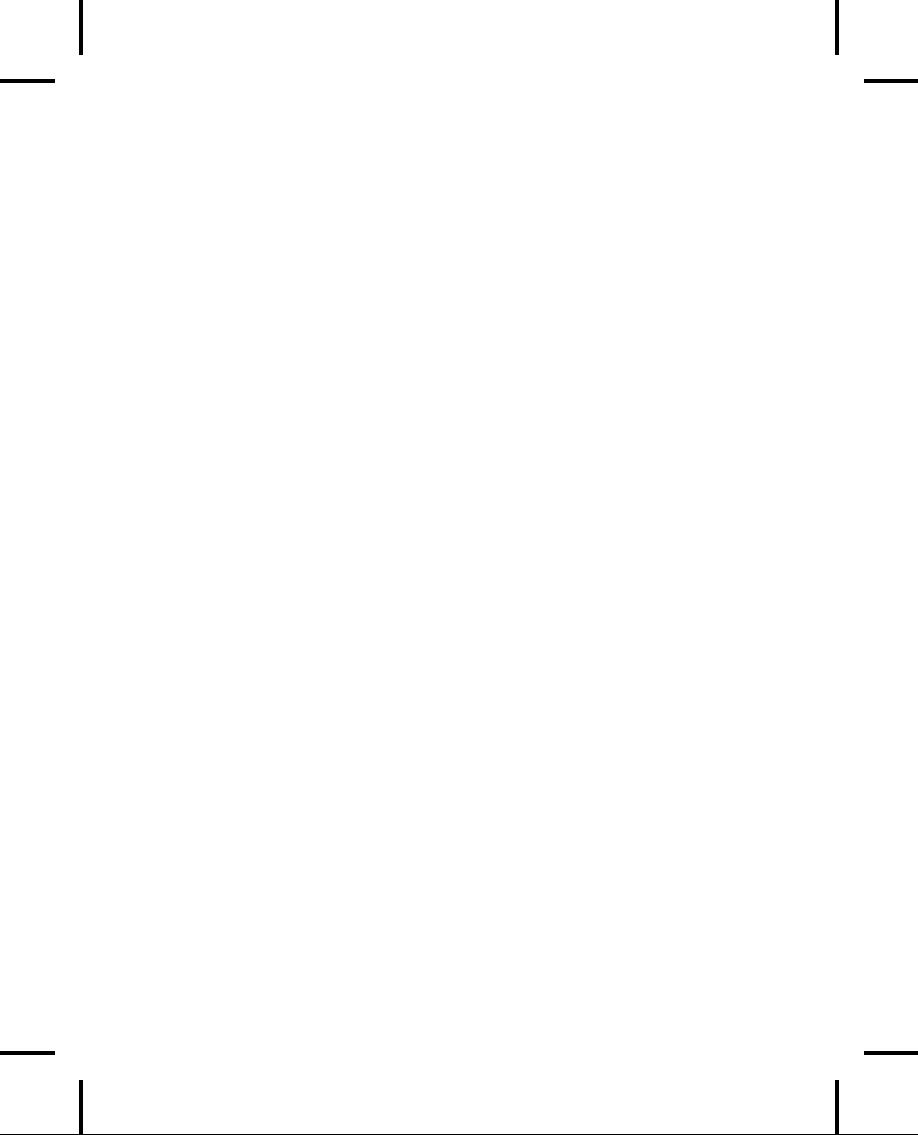
232
Table of Contents:
- Introduction to Objects:The progress of abstraction, Extreme programming
- Making & Using Objects:Tools for separate compilation, Reading and writing files
- The C in C++:Creating functions, Controlling execution, Introduction to operators
- Data Abstraction:The basic object, Abstract data typing, Header file etiquette
- Hiding the Implementation:C++ access control, Handle classes
- Initialization & Cleanup:Guaranteed cleanup with the destructor, Aggregate initialization
- Function Overloading & Default Arguments:Overloading example, Default arguments
- Constants:Function arguments & return values, Classes, volatile
- Inline Functions:Preprocessor pitfalls, Stash & Stack with inlines, Reducing clutter
- Name Control:Static elements from C, Static initialization dependency, specifications
- References & the Copy-Constructor:The copyconstructor, Pointers to members
- Operator Overloading:Overloadable operators, Overloading assignment
- Dynamic Object Creation:Early examples redesigned, new & delete for arrays
- Inheritance & Composition:The constructor initializer list, Name hiding
- Polymorphism & Virtual Functions:The problem, How C++ implements late binding
- Introduction to Templates:Template syntax, Stack and Stash as templates
- A: Coding Style
- B: Programming Guidelines
- C: Recommended Reading:Depth & dark corners, Analysis & design
- Index